

Day Trips From Budapest: 15 Amazing (and Easy!) Trips!
Two reasons. Firstly, Hungary is a diverse country, full of surprises and wonders which you simply won’t see if you stay put in urban Budapest. Want to see a valley famous for its wine and women, an inland sea, or a great plain which has eagles wheeling across it? You’ll need to head out there, using Hungary’s efficient public transport. But secondly, Budapest is also an international crossroad on the wider transport network, making a jaunt into neighbouring countries an absolute breeze.
So let’s check out the best day trips from Budapest: not just to other locations in Hungary, but exploring how you can travel from Budapest to Vienna, Bratislava, Zagreb, and beyond!
Planning a trip to Budapest? Check out these awesome resources on spending 3 days in Budapest , the very best in Budapest food , and where to find perfect Budapest souvenirs!
The best day trips from Budapest!
In our first section looking at Budapest day trips, we’re going to check out trips within Hungary. Then we’re going to hit the road, and check out visiting other countries from Budapest! For the latter, remember that Hungary is in the Schengen Area – this means that if you’re visiting fellow Schengen countries, you won’t face any passport checks. If your preferred destination isn’t on this list , you’ll need to take it along for inspection – yes, even if you’re on the train!
Day trips from Budapest within Hungary
You may not know a great deal about Hungary before you arrive there – but trust me, you’ll soon love it!
Hungary is a country of different landscapes, from wild hills to grassy plains, from huge lakes to cities with an almost Mediterranean feel. The good news is that it’s pretty easy to experience all of them! Whilst a number of them are easily reachable by public transport, there’s a few that are worth booking a place on a tour – namely, because the tours like to take you to multiple places on this list on the same day, meaning that you get more bang for your buck! I’ll let you know which ones you should definitely consider seeing on a tour as we come to them.
Let’s check them out!

Eger is a stunningly beautiful city in the north of Hungary, and is famous for three things. Firstly, the minaret in the town center. Secondly, for being in a valley renowned for its beautiful women. Thirdly – wine. Lots and lots of lovely wine!
If the first two interest you more, head into the city center. The minaret was built in the 17th century, back when this part of the world was under the control of the Turkish Ottoman Empire, and was originally used to call the faithful to prayer at an adjoining mosque. The mosque was converted into a Catholic church (and eventually pulled down entirely) when the Austrians retook Eger in 1687, and the minaret was slated to follow. However, the locals tried to pull it down using 400 oxen and couldn’t shift it, so it was decided to keep it in place and has become a symbol of friendship between Hungary and Turkey instead. Which is rather lovely, if you ask me!
However, most people visit Eger for the wine! Quite literally – check out the number plates of cars anywhere in town, and you’ll see a huge number of them are from neighboring European countries, because the wine is just that good . A short 20 minute walk out of town is the Valley of the Beautiful Women (yup, that’s its actual name) where you find wine cellars carved into the surrounding cliff faces, providing you with cool, atmospheric cellars in which to sample the local produce. The most common is Egri Bikavér, also known as “Bull’s Blood”, which is the area’s specialty, but you’re absolutely bound to find a wine you’ll love.
If you’re looking at taking just a single Budapest day trip, this is the one to do. You can reach Eger by train, but it’s a slow journey – it’s a much better idea to go on a tour, as they’ll take you to all the best wine cellars, and not judge you if you come back laden with wine bottles. And trust me, you will – my boyfriend came away with three bottles, despite telling me on the way there that he didn’t like wine. It’s that good!
Less than one hour from Budapest by train, the small town of Szentendre is a must-see!
This place may be small in size, but it’s certainly big in history and character. It feels completely different to Budapest, or many of the towns surrounding it, thanks to the almost-Mediterranean architecture – a leftover of the town being a refuge for Serbian and Croatian settlers during a war against Turkey. This splash of character, and its quiet streets, led to it becoming popular with artists seeking to get out of the bustle of Budapest, and it’s stayed that way ever since!
Szentendre sees plenty of tourists, and it accordingly has plenty of souvenir shops at your disposal. But these are a something a little different: you’ll find plenty of places offering traditional Hungarian dress (which you can easily fit pieces of into everyday outfits, in case you don’t want to go the whole hog), and loads of artisan crafts, clothes, and pottery. Szentendre is also the home of Skanzen , an ethnographic park highlighting traditional Hungarian buildings and lifestyle.
Although the town is simple to reach by train, you might still wander to consider doing a “Danube Bend” day tour. That way, you’ll also get to see Visegrad and Esztergom in the same day – from personal experience, it’s well worth doing! But if you’ve already seen the other sites, simply get a train from Batthyány tér in Budapest; the price of the ticket is negligible.
Like your history? Sweet; you’ll be fancying a trip to Visegrád! And the good news is that again, it’s less than an hour from Budapest by train!
Although the town itself is pretty darn small these days, Visegrád was once the capital of Hungary, thanks to the fortress which was built on a very high hill above it. You can spot it as you approach by train, perched right up on the top of a steep, almost sheer hill, with the Danube winding below it. It’s basically one of the most ridiculously defensible spots in Europe, and King Charles I was all “yup, I’m having some of that ” back in 1325.
Although it didn’t stay the capital very long, Visegrád is still a hugely important place in Hungary’s history, and the upper and lower castles are both open to the public. The upper castle is the more interesting of the two, with a real “castle feel” and historical re-enactments (not to mention some stunning views), while the lower castle is largely ruined, or hosting exhibitions about the history of the area.
I highly recommend that you visit Visegrád as part of a Danube Bend one day private tour. As interesting as the castle is, there’s not huge amounts of things to do, meaning that you may be a little bit disappointed if you make the trip just to see Visegrád alone. However, it’s a perfect stop when combined with Szentendre and Esztergom on a day tour – especially as you’ll often be taken to a local restaurant, Nagyvillam , which serves up both delicious food and fantastic views of the castle!

The last of our Danube Bend day trips is Esztergom, situated right on the border with Slovakia – and home to some seriously impressive views!
If you enjoyed all that lovely Hungarian history in Visegrád, the city of Esztergom is going to be right up your alley. It’s actually one of the oldest habitations in the whole country, having been around since Roman times, and when you look at it, you can understand why. Just like Visegrád, it features a high hill right next to the waters of the Danube – perfect for fortifications. In this case, however, pride of place on the top of the hill didn’t go to a castle (although there was one nearby). Instead, the Hungarians decided to build one of the most beautiful religious buildings in the land.
Esztergom Basilica stands on the former site of these earlier churches, and is both the largest church and tallest building in Hungary. That’s why it’s one of the most popular day trips from Budapest: you don’t need to be a massive church-goer in order to enjoy it. The interior of the basilica is stunning, with beautiful carvings and decorations, and the burial site of Cardinal Mindszenty, who opposed fascism and communism in Hungary for over fifty years.
But it’s the exterior which really steals the show. Head out of the church and take the paths leading to the left; you’ll eventually come to a lookout platform with a large statue of St. Stephen, overlooking the beautiful surrounding countryside of Hungary and Slovakia. And yes, if you visit Esztergom as part of a tour, they’ll drive you over the bridge to Slovakia so you can take photos of the Basilica from its best angle!
Yes, I know the name makes it sounds like some sort of bodybuilder’s colony. It’s not – or not that I know of, anyway! Pécs is actually a gorgeous city in southern Hungary with a distinct Mediterranean flavor, and it’s perfect for a day trip from Budapest!
A 2.5 hour train journey from Budapest’s Kelenfoeld Station will deposit you in the city of Pecs, right near the Croatian border. This university town has such a mix of cultures and styles that you really feel like you’re somewhere on the sunny Med; check out the architecture on pretty Szechenyi Square if you don’t believe me – doesn’t it give you that Italian feel? If that’s not enough, head along to Pécs Cathedral with its four distinctive towers, and muse on how it manages to look Hungarian, Turkish, and vaguely Italian at the same time.
There’s plenty of museums to look around (including an early Christian mausoleum, which is a UNESCO World Heritage site), and pottery shops abound for souvenir hunters. But another great reason to visit Pécs is the food! The city is a cultural melting pot, and you’ll accordingly find plenty of options – there’s everything from traditional Hungarian in rowdy pubs, to the best of the southern regions at the Balkan Bistro , to many Italian choices. There’s even a Czech pub! And because this isn’t Budapest, you’ll discover that everything is extremely reasonably priced, allowing you to eat somewhere just a little bit fancy for way less than you’d expect!
Pécs is an easy day trip from Budapest by train, although with so much to do, and a very kindly climate, you may be tempted to stay for a few days!

Lake Balaton
Fancy lounging on the beach, or swimming in fresh waters, but frustrated by Hungary’s distinct lack of coastline? Meh, who needs the sea when you’ve got Lake Balaton!
Best reached by car, Lake Balaton is huge – 78km in length, to be precise – with a multitude of towns and things to do along its coastline. Aside from swimming in the blue waters (and the town of Siofók is the most popular place to do that, with sandy beaches and weather that’ll have you half-believing you’re somewhere in Spain), there’s also a multitude of historic sites for you to go exploring. The town of Tihany is situated on a peninsula which juts out into the lake – it’s picture-perfect,and understandably has the highest property prices in the country!
How about days filled with spa baths, wine, and gazing out at lake views? If that sounds right up your alley, you’ll be wanting a trip to Keszthely, the largest city by the lake, where all of the aforementioned attractions are available in spades. Or is a stylish resort with thermal waters for bathing in more your thing? In that case, you’ll be wanting to visit Balatonfüred! Every town based around the lake offers something unique, and thanks to their popularity with Hungarian wanting to get away for a bit, they’re fully geared up for visitors.
If you want to see a little bit of everything that Lake Balaton has to offer – and as you can see, it’s pretty diverse – you’re better off signing yourself up for a tour from Budapest. These generally pick up a good number of the lake’s star attractions – and often throw in a yacht ride too; perfect for finishing up a sunny day!
You’ve probably never heard of Györ, but if the thought of a charming Old Town, and a plethora of museums and churches appeal, then this is one of the perfect day trips from Budapest for you!
Situated bang in the middle of Budapest and Vienna, Györ is considered one of the most important cultural sites in Hungary. Its position means that similarly to Pecs, the town became a melting pot of cultures and architectural styles – but also meant that it became hotly fought over. Nearly every nation in the area who has ever had any kind of influence over the centuries has had a pop at Györ. The Hungarians fought over it, the Turks fought over it, the Austrians got involved over it, and even the Allied forces in WW2 had a go it it. Even Napoleon had a quick attack for funsies.
Remarkably, considering everything its been through, the Old Town survived – and thank goodness for that, because it’s beautiful! Cobbled streets are lined with pastel-colored houses, and handsome squares have stately cafes along their edges, perfect for stopping in and doing a bit of people-watching. Best of all, the town is still largely undiscovered by tourists, and the locals are super-welcoming! They’ll be more than happy to point out the places you should visit, including an incredible amount of churches, and a veritable forest of statues and fountains.
Györ is easily reachable from Budapest, with regular train services departing from Kelenfoeld station. The majority of services are local ones run by the Hungarian rail service (MAV), but bear in mind that you may end up on long-distance trains run by Austrian Railways (OBB) or Romanian Railways (CFR) – these trains tend to be much busier!

Aggtalek National Park
Yeah, we all like towns and cities. All those facilities and buildings and souvenir shops; yadda yadda. But how about getting out into the great Hungarian countryside, and checking out a national park which is also a world heritage site?
Well aren’t we lucky, because Aggtalek National Park in northern Hungary ticks all those boxes! It’s a truly beautiful place, with forests, cliffs, and crystal blue lakes surrounded by greenery and dappled sunlight. It’s the perfect place to visit for a day, and get away from the bustle of city life! It’s also a great spot for animal lovers: the park is a bastion of wildlife species which have faced their struggles elsewhere, such as lynx and wolves. The park is also home to Hucul horses, one of the closest relatives of ancient wild horses – if you visit the stud farm near Jósvafö, you can not only learn more about them, but see them living semi-wild near the village.
But the main event is the series of caves which wind their way through the Hungarian soil, connecting up with a system of caverns just over the border in Slovakia. Signs of prehistoric life have been found here, and you can see why ancient peoples made this their pad – the caves are simply stunning! Stalactites and stalagmites do their thing while you gawp at them – and if that’s not enough, you’ll get treated to a music and light show whilst you’re there. I don’t think I need to tell you that the acoustics are just a little bit amazing.
If you love nature, visiting Aggtalek is one of the most ideal day trips from Budapest you can imagine. It’s just about possible by train (travel from Keleti station to Perkupa, then grab a taxi) but it’s a bit of a pain. If you’ve rented out a car, the drive there will take a mere two and a half hours!
The Royal Palace of Gödölló
I know this isn’t a phrase you hear every day, but I am a longtime fangirl of the Empress Elizabeth of Austria, 1837-1898. I know; so cliche. But it’s true; I even have a bust of my homegirl on the desk where I’m typing this right now. And if you take a day trip to the Royal Palace of Gödölló , you can visit her 18th century baroque party pad!
Okay, she didn’t do much partying there, but she was an extraordinary woman. She was born in Bavaria and married off to the Emperor Franz Joseph, but she despised fussy court life in Vienna. She had zero intention of being treated like a royal brood mare, was way more interested in travelling, writing, and trying to acquire a pet tiger, and eventually escaped off to Hungary to get away from it all. When she got there, she promptly learned Hungarian – a notoriously tricky language – and caused the entire country to fall head over heels in love with her.
There’s only one way to get an insight into someone that awesome, and that’s by taking a trip to her favorite home. Gödölló fell into disrepair after Sissi’s tragic death at the hands of an assassin, but it’s been lovingly restored to its former grandeur. You can skip under the beautiful chandeliers in the Great Hall, check out the artwork in the Mirror Corridor, or explore the extensive grounds around the building itself. You’re bound to enjoy it even if you know nothing about Sissi, but if you too feel a bit of a kinship with her, it’s a fascinating look into a place she loved.
You can reach Gödölló by hopping on a train at Keleti station, and travelling to the tongue-tangling Goedoelloe. Have fun pronouncing that at the ticket office!
Puszta and Kecskemét
Pop into any of the tourist information offices in Budapest , and you’ll see that one of the most popular day trips is a coach ride out into the vast Hungarian plains. This is the land which the early Magyar tribes rode through on their way to founding Budapest, and its retained a special place in the heart of Hungarians ever since.
The plain – or Puszta, as it’s known in these here parts – is covered in traditional Hungarian horse ranches, because horses are super-useful in the farming which goes on here. Plus because who doesn’t want to be a cowboy? The Hungarians certainly do, and after being treated to a hearty rustic lunch at a farmhouse, you’ll be taken off to see a horse show. This is where the locals demonstrate their absolute skill on horseback, showing that they have the absolute trust of their steeds, and looking like total badasses while they do it. It’s an exhilarating sight!
If that’s not enough excitement for you, your next stop will be Kecskemét, a market city which is at the heart of plains life. You might be expecting something a little rough and ready, but you’d be wrong – it’s actually one of the most vibrant and artistic cities in the country, with buildings which are liberally decorated in Art Nouveau style. There’s a ton of museums to look around, or if you’re after something a little more… refreshing… Kecskemét is also one of the major producers of pálinka, a super-strong liqueur. You’ve been warned!
This is a popular day trip from Budapest, so you won’t have trouble finding tour operators to take you there. It’s a much better option than trying to do it independently, especially if you want to check out the horse shows!
Debrecen is the second-largest city in Hungary – and as it’s located on the other side of the country, it’s an ideal way to see what city life outside of Budapest looks like!
It’s another Hungarian city which has had a bit of a tough life thanks to its location. Being close to the Eastern frontier, it’s been in the hands of Turks, Romanians, and Soviets over the centuries, and it was almost completely destroyed during the Second World War (if you don’t know about how tough life was in Hungary around that time, check out the House of Terror in Budapest; things were bad). But like the rest of the nation, Debrecen rose like a phoenix, and reclaimed its status as one of the most culturally-important places in the country.
As you’d expect, there’s plenty to see! Whether it’s the grandeur of the Great Church or the family friendly fun of the Kerekerdo Adventure Park, you’ll find something you’ll love. My personal favorite, however, is the Deri Museum – it’s the best kind of museum, in that it has a bit of absolutely everything. Egyptian artifacts? Yup, got those. Priceless and vast pieces of artwork? Here in abundance. A surprising collection of Samurai armors and weaponry? Hey, why not!
As you’d expect, it’s super-easy to get from Budapest to Debrecen. Catch a train from Budapest-Nyugati, and you’ll arrive in your destination a mere two and a half hours later!
Day trips from Budapest to other countries
Budapest is perfectly placed in central Europe, almost as if its a halfway point for some of the most beautiful and important cities on the continent. Luckily for us travel lovers, that means it’s the perfect base for exploring some of those cities as a day trip, saving us the exorbitant hotel costs of actually staying there! (lookin’ at you, Vienna!)
I urge you to do at least one trip from Budapest to another country – Hungary is so distinct from its neighbors that you really will feel the difference, . It makes you appreciate both your day trip destination, and gives you an increased love of Budapest when you return! Although Vienna and Bratislava are the easiest to reach, there’s some magical places available to those who can go a little further afield.
Let’s look at those lovely options!

Day trips from Budapest to Vienna are a tried and tested favorite, and it’s an ideal way to explore a city which is famously beautiful, as well as famously expensive!
It’s an easy trip by train (head on down to Kelenfoeld station for regular services, but top tip: try to get a reserved seat if you can, because this service gets BUSY), and you’ll be in fair Vienna in 2 hours and 20 minutes. A short walk from Vienna’s main station is the Old Town, the beating heart of the city, and one of the most ridiculously beautiful places in the world. You won’t lack for things to do, whether you fancy a spot of luxury shopping on Kohlmarkt, seeing the historic sights of St. Stephen’s Cathedral or the Hofburg, or just kicking back with cake and coffee at Hotel Sacher.
If you don’t mind a little more public transport, take a bus from the train station, and visit Schönbrunn Palace. This has to be one of the most extraordinary places I’ve ever visited – if looking around 1,441 room of history isn’t enough, it’s located in vast grounds which put any other public space in the world to shame. We’re talking gigantic fountains emptying into a vast basin, rose gardens for miles, a hill which leads up to a glorious viewpoint, and even it’s own zoo in the middle. You can easily spend a day here, and it’s one of the most fascinating places in Europe, let alone Vienna.
There’s so much to do in Vienna, and you’ll need to narrow it down a bit before you travel! Take a look at my guide to Vienna Instagram spots , which will help you pinpoint those perfect sights!

Second-most popular on the list of day trips from Budapest to other countries is Bratislava, located a mere stone’s throw away from Vienna. It may not have the same glamorous reputation as Vienna, but don’t be fooled into thinking it’s not worth visiting – you’ll quickly fall in love!
Bratislava’s Old Town is a ten minute walk from the train station, and it’s utterly charming. Sure, Bratislava might not have the mega tourist attractions of Budapest or Vienna (the city’s castle is probably the main draw) – but seriously, that’s not what you visit Bratislava for. If you like your cities small and friendly, with cozy bars and pubs serving excellent food and beer at cheap prices, and a vibrant cafe and nightlife scene, then the city will be just perfect for you. It’s laid back, chilled out, and super welcoming.
That’s not to say that there’s nothing to see, however! Wandering the streets rewards you with achingly pretty houses and churches, broad squares filled with market stalls and quirky street performers, and statues. Actually, loads of statues. You might’ve noticed that Budapest is fairly brimming with statues , but the Slovaks take it to another level. The most famous is Cumil, the workman peeking out of the ground and seemingly watching the world go by – you can find him on Panská street, in the heart of the Old Town.
Visit Bratislava, and be utterly charmed by what you find! For all the info you’ll need, check out my guide on how to get from Budapest to Bratislava!
Transylvania
Okay, let’s get the vampire jokes out of the way. Something about fangs or garlic? Cool, we’re done there, because you’d be absolutely bats to miss out on seeing Transylvania (I lied about being done with the vampire jokes).
Although it’s a bit of a stretch to do the journey by train (especially as you’ll need to stop and show your passport), it’s very possible to have a grand old time in Romania if you’ve rented a car. The town of Oradea is just over the border, and is a mere 3 hours from Budapest; it’s a strikingly pretty place and one well worth exploring! If history is more your thing, Corvin Castle is one of the largest castles in Europe, and one of the Seven Wonders of Romania! It’s a bit of a drive, but the scenery is so pretty that getting there is half the fun.
If you’re looking for other Transylvanian towns to explore, Timisoara is an extremely handsome place (it has two nicknames, Little Vienna and The City of Flowers, which give you an indication of just how pretty it is). Alternatively, if you don’t mind a fairly long drive, you can visit my favorite town in Romania, Cluj-Napoca. The best place you’ve never heard of, Cluj was voted the friendliest city in Europe, and they absolutely love welcoming visitors there. The main square is liberally littered with churches and museums, and it’s incredibly easy to spend a full day there!
Curious about Cluj? You should be! Check out my guide on things to do in Cluj-Napoca , and see if it’s the day trip for you!
Much like Transylvania, day trips from Budapest to Croatia are just about possible if you’re renting a car. But as long as you remember your passport, the travel to Croatia’s capital city is well worth it!
Yes, it might not be quite as pretty as Dubrovnik, but don’t dismiss it as being less interesting. For a start, you’ve got the iconic sight of St. Mark’s Church, which symbolizes the city thanks to the heraldic crests worked into its roof (if you look up Zagreb on any travel site, this is the image to represent it!). If that’s juts not enough magnificence for you, head along to the Cathedral of Zagreb, which towers over the city, and is quite simply one of the finest Gothic structures you’ll ever see in your life.
Want something a little quirkier? Well, Zagreb has you covered there too. Enter the Museum of Broken Relationships , and be confronted by the mementos of failed romances from all over the world. It’s strangely touching to look at items which were once treasured, and are now bitter reminders of relationships gone wrong, from dolls and shoes, to sex toys and, er, scabs. It’s sentimental yet vaguely hilarious at the same time, and a trip to the gift shop is a must!
Zagreb is only a three hour drive from Budapest, and it’s a day trip well worth taking!
The best day trips from Budapest by train
Okay, one more thing before we wrap up!
Some of these day trips are far more viable by road rather than rail, and for those of us who can’t drive or don’t want to drive, I thought I’d give my recommendations for the easiest trips to take by train. These are:
So if you’re planning to take your day trips by train, you’re best off sticking to these (although do bear in mind that the Danube Bend towns are best seen on an organized tour ). Rail fares in Hungary are quite ridiculously cheap, so if you’re travelling by train within the country, you’re guaranteed a great day for very little cost!
Share this guide to Budapest day trips!
There we have it; we’ve discovered the best day trips from Budapest! Every single one of them is a fantastic day out, which will give you a better understanding of Hungarian history and culture, or a sneaky peek into the lives of its neighbors. Budapest really is an ideal spot for getting out and about!
If you’ve found this helpful, how about giving it a share? After all, you can help out your fellow travelers, and reap the good karma which comes with it! Simply hit one of those social media buttons on the side of the page, and you can plaster it all over your favorite network.
Even better, how about sharing the below images to Pinterest? That means that this article gets a share (which makes me happy), and you get a bookmark back to this page for when you need it (which makes you happy)! Everyone’s a winner!
Thanks for reading, and happy traveling!

Pssst! This article contains some affiliate links! These incur zero extra cost to you, should you choose to purchase the service provided, but simply give this blog a bit of commission which goes toward running costs. Any extra money earned gets spent on shipping Hungarian paprika to my house, because I can’t get enough if that stuff.
Share this:
- Click to share on Twitter (Opens in new window)
- Click to share on Facebook (Opens in new window)
You Might Also Like...

Visiting Paris For the First Time: 11 Things You NEED to Know!

Blogs You Should Check Out: Part One

The Best City Breaks in Europe!
No comments, leave a reply cancel reply.
Save my name, email, and website in this browser for the next time I comment.
Notify me of follow-up comments by email.
Notify me of new posts by email.

How to Find Your Perfect Amalfi Coast Airbnb: 15 Epic Stays!

The Best Luxury Travel Gifts For Her: 10 Elegant Items That Every Girl Will Want!
Made with in Seattle.
(C) Copyright 2019 - Solo Pine. All Rights Reserved. Designed & Developed by Solo Pine .

22 Top-Rated Day Trips from Budapest
Written by Bryan Dearsley Updated Nov 26, 2021
While not one of Europe's largest countries – it has a population of just under 10 million citizens – Hungary has one of the continent's highest densities of historic sites and tourist attractions. Add to this the fact that the country has stunningly beautiful scenery, and you'll not be surprised to learn that Hungary is increasing in popularity as a European tourist destination.
Given the central location of Budapest, as well as its idyllic position on the banks of the mighty Danube River, this always bustling capital is the perfect place from which to venture out and explore Hungary as part of a fun day trip.
Across this friendly country, you'll find countless cities, towns, and villages to explore. Not only have they successfully preserved their historic roots, but they also reflect a tremendous variety of influences, from the Romans to the Ottoman Empire. And all of them are worth visiting. Whether you are enjoying a family day trip or, if traveling a little further afield, planning an overnight stay in one of Hungary's many unique accommodation choices, you'll not be disappointed.
Whatever your choice, be sure to make full use of our list of the top day trips from Budapest, Hungary.
1. Eger's Baroque Heritage
2. the danube bend and vác, 3. the royal palace of gödöllo, 4. nagytétény castle and the museum of applied arts, 5. the hungarian open air museum, 6. aggtelek national park and the baradla cave, 7. pécs and its picturesque precincts, 8. szentendre's slavic influences, 9. gyor: hungary's baroque city, 10. esterházy palace, fertod, 11. kecskemét and the puszta great plains, 12. székesfehérvár's royal basilica, 13. the castle of diósgyor, 14. historic castle hill - esztergom, 15. hortobágy national park and the puszta, 16. the medieval reformed church of nyírbátor, 17. pannonhalma archabbey, 18. the savaria museum in szombathely, 19. koszeg and the church of st. james, 20. nádasdy castle and museum in sárvár, 21. castle quarter, veszprém, 22. st. george's church in ják, map of day trips from budapest.
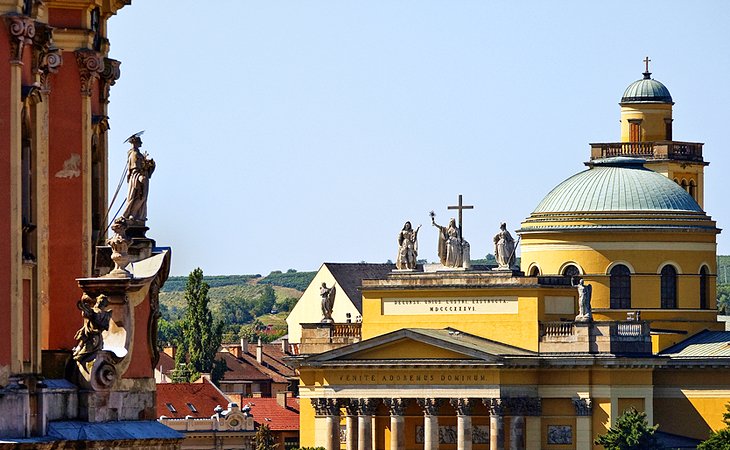
The town of Eger, located 140 kilometers east of Budapest on the southern slopes of the Bükk Mountains, is undoubtedly one of the most beautiful small towns in Europe. Boasting 17 Baroque churches, thermal baths, and a Turkish minaret, this well-preserved historic town makes a great day trip destination from Budapest.
Highlights include the lovely Eger Cathedral (Egri főszékesegyház). Also known as Cathedral Basilica of St. John the Apostle, this beautiful structure was built in 1837 in classical style, featuring twin towers and a wide stairway leading to its portico. Superb views over the Old Town can be enjoyed, too.
Other fun things to do in Eger include visiting the István Dobó Castle Museum , as well as the Baroque Lyceum. The latter is notable for its 53-meter-tall tower and revolving dome with more fine views.
Be sure to also explore the narrow lanes of the Old Town. It's here you'll also find the large central market place and the impressive church of St. Anthony, built in 1773.
Finally, no sightseeing visit would be complete without visiting medieval Eger Castle (Egri vár). Built in the 11th century, it was expanded numerous times over the ages, and is a delight to explore.
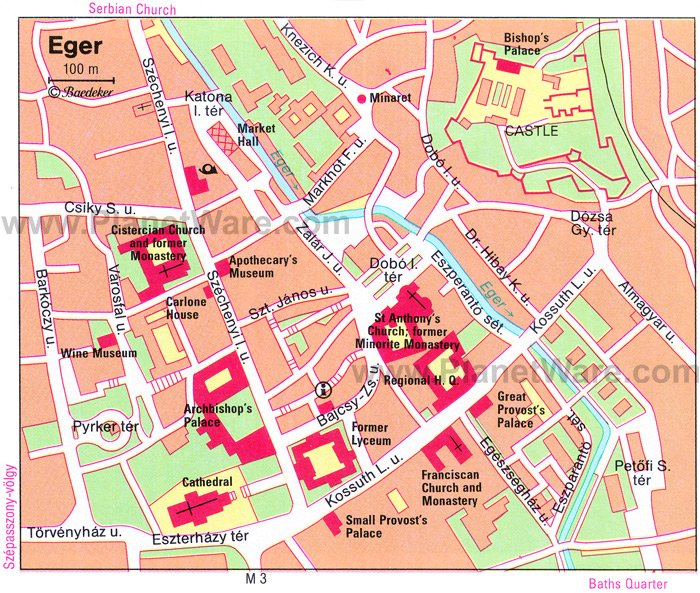
Between Esztergom and Szentendre in western Hungary, the Danube River makes a sharp turn south before flowing through Budapest. The historic town of Vác, situated in the middle of the bend on the left bank, is just 34 kilometers north of Budapest and has retained the charm of an attractive little Baroque town.
You can also admire great views of the town's silhouette, with its characteristic church towers, from a river cruise or from Danube Island, accessible from Vác by car ferry. The town's historic center is in fact dominated by its huge cathedral, the Assumption Cathedral. Also notable here is Március 15 tér (March 15th Square) to the north, lined by fine old merchant homes.
The road from Budapest crosses a twin-arched, 18th-century bridge that spans the Gombás River, and is worth a visit for its fine statues. Other landmarks easily explored on foot are the 1745 Piarist Church of St. Anna, with its narrow towers and pointed spires, and the Baroque triple-naved Franciscan church, built using stone from the medieval cathedral.
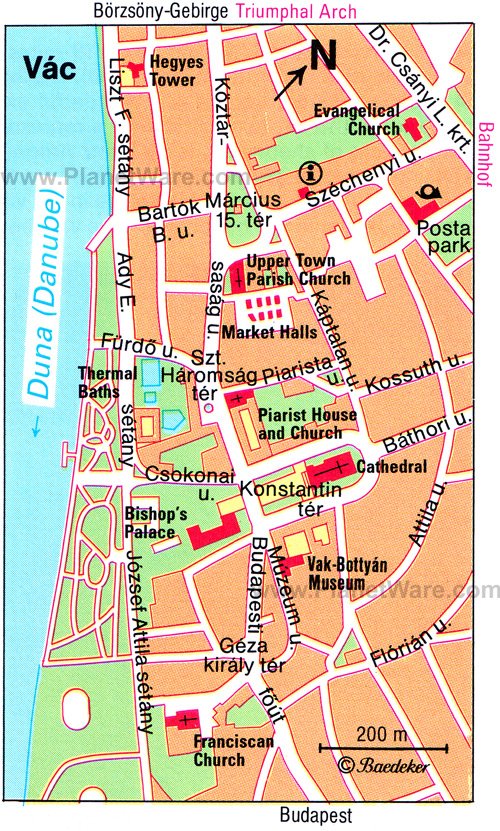
Located only 30 kilometers northeast of Budapest stands one of Europe's largest Baroque palaces: the Royal Palace of Gödöllo. The favorite summer retreat of Austro-Hungarian Emperor Franz Joseph and his wife Queen Elisabeth (known as "Sisi"), this spectacular 250-year-old structure is a masterpiece of Hungarian Baroque architecture.
The palace was in fact originally built in the 1700s as the estate of the Grassalkovich counts, and was later owned by the Hapsburg monarchs. A variety of guided tour options are available that include its extensive park, gardens, and royal stables. A variety of fun programming is also available for families traveling with children.
Address: Gödöllo, Grassalkovich-kastély 5852, 2100 Hungary
Official site: https://kiralyikastely.hu/main-page.html
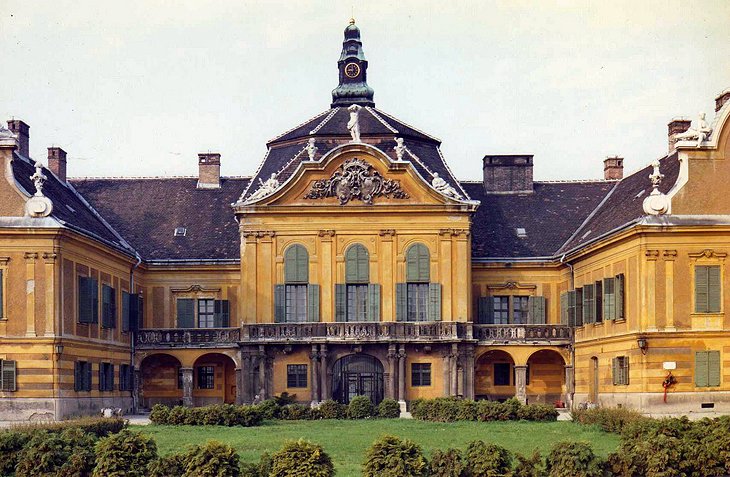
Nagytétény, the most southerly district of Budapest and just a few minutes away via car or public transit, is set on the Buda side of the Danube in a largely agricultural region once favored by the Romans. Here, you'll find the lovely old Baroque Nagytétény Castle, built in the 18th century on the remains of a 15th-century palace.
After extensive damage, it was rebuilt after WWII and now houses the Furniture Museum of Budapest's Museum of Applied Arts . Of particular interest are its many fine examples of German and Hungarian furniture from the 15th to 19th centuries, along with a collection of stoves, artwork, china, and Roman artifacts.
Address: Budapest, Kastélypark u. 11, 1225 Hungary
Official site: www.imm.hu/en/contents/239,Nagytétényi+Kastély
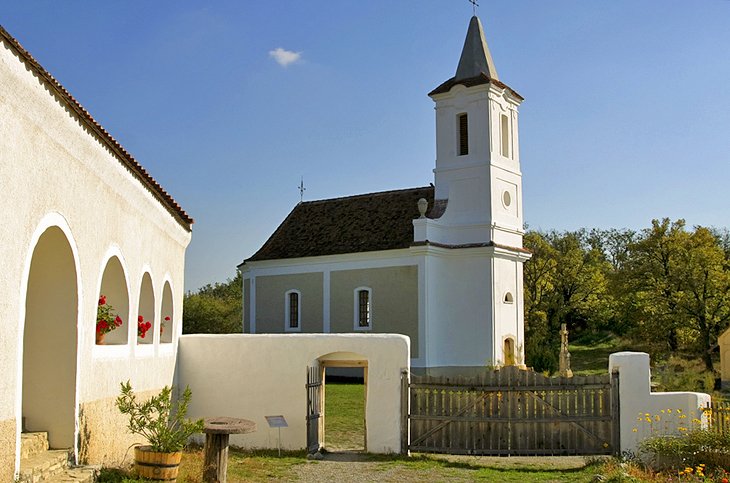
The Hungarian Open Air Museum (Szentendrei Skanzen Village Museum) is located just 23 kilometers from Budapest and faithfully recreates the rural architecture and lifestyle of 10 different 18th-century Hungarian settlements. Buildings typical of the region are scattered throughout the gently rolling landscape and linked by pathways.
In addition to visiting the quaint houses, you'll see various working quarters, including old mills, stables, barns, a forge, and a weaver's workshop. There's also a village church. Guided tours are available, as are fun programs and things to do for kids, including the chance to ride on the historic Skanzen train.
Address: Szentendre, Sztaravodai út 75, 2000, Hungary
Official site: http://skanzen.hu/en
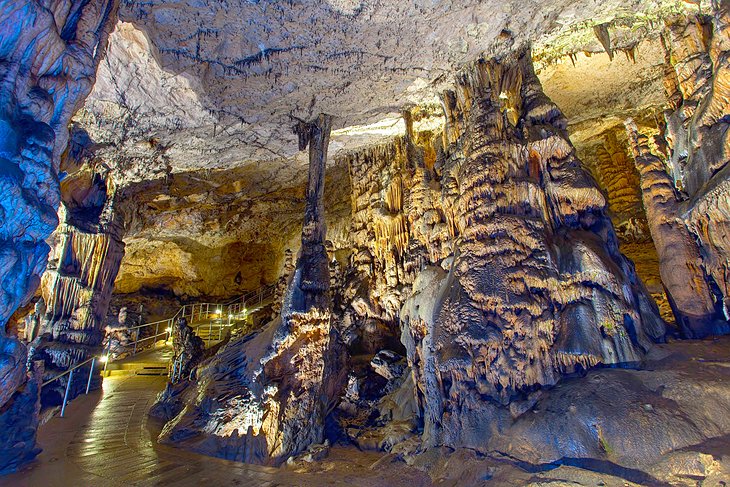
Covering a vast area of nearly 200 square kilometers, much of it protected as a UNESCO World Heritage Site, Aggtelek National Park (Aggteleki Nemzeti Park) sits astride the Slovak-Hungarian border. A travel time of just 2.5 hours by car from Budapest makes it one of the country's most popular (and easy) day trips.
In addition to its unique flora and fauna, the park is famous for an excellent network of marked paths attracting walkers from across Europe. The chief attraction here, however, is the Baradla Cave .
Over 25 kilometers long and extending into Slovakia, it's one of the largest and most impressive stalactite caves anywhere on the continent. The main tunnel stretches seven kilometers, with several wide passages formed over thousands of years as rain and melting snow penetrated cracks in the limestone.
The water dripping through the chalk has carved bizarre shapes, with stalactites hanging from the roof like giant icicles, and stalagmites in all colors of the rainbow rising up from the floor. A variety of English language guided cave tours are available, some of which can be organized to include travel from Budapest.
Address: Aggtelek National Park Directorate, H-3758 Jósvafo, Tengerszem oldal. 1, Hungary
Official site: https://anp.hu/en/
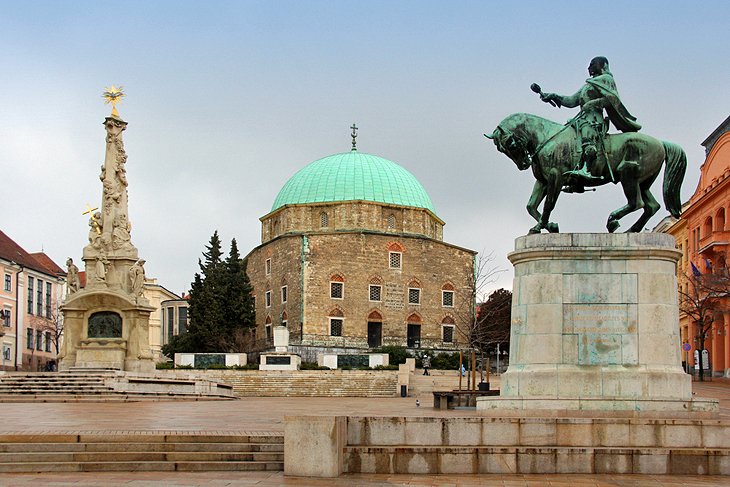
Pécs, a small town just a two-hour drive south of Budapest, is one of the most popular day trips for tourists due to its mild climate and location on the slopes of the Mecsek Mountains. Its many first-rate historical and cultural attractions range from Early Christian burial chambers to Turkish mosques, along with numerous well-preserved medieval buildings and contemporary art galleries.
The most popular points of interest in the fortified Old Town are the Cathedral Precincts surrounding the lovely Pécs Cathedral (Sts. Peter and Paul's Cathedral Basilica). Built between the 11th and 12th centuries along with many later alterations, the church also served as a mosque during the Turkish occupation.
Below the cathedral square and in the courtyards of the old houses are graves dating from the 3rd and 4th centuries. These are considered to be the most important surviving examples of Early Christian culture in Hungary. Be sure to explore Szénchenyi tér , a lovely medieval market place in the heart of the Old Town.
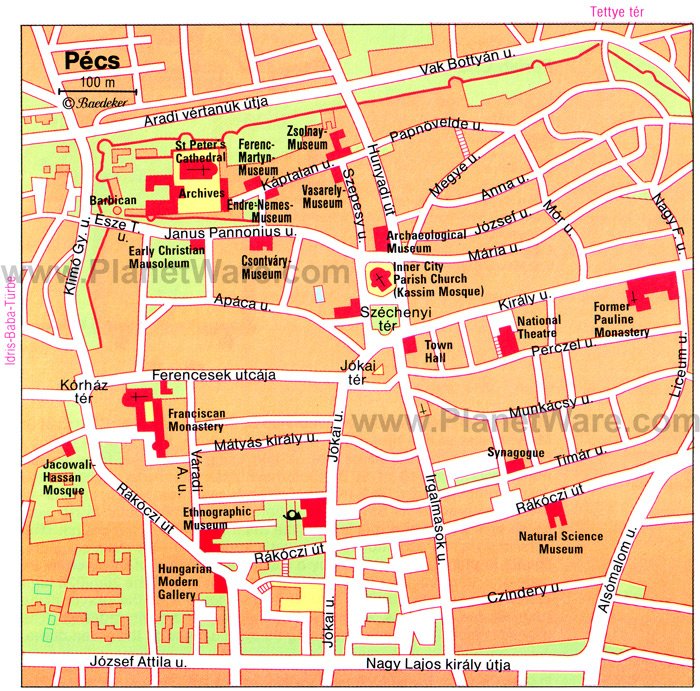
Szentendre, a small town perched on the hilly right bank of the Danube, 20 kilometers north of Budapest, is one of the most popular getaways for people from the capital.
Highlights include Blagoveshchensk C hurch , a Serbian Orthodox place of worship built in 1752. The doorway is a focal point, with its Baroque curved balcony and a fresco above the side entrance depicting the Emperor Constantine and his mother Helena with the cross of Christ.
Visitors can also admire Fo tér , the main square. Notable features include the Merchants' Cross built following a plague, and the lovely old Church Square with architectural influences from the Catholic Croats of Dalmatia who settled around the church. Another must see is the nearby Hungarian Open Air Museum, a popular tourist attraction for those wanting to learn more about the country's rich history, culture, and traditions.
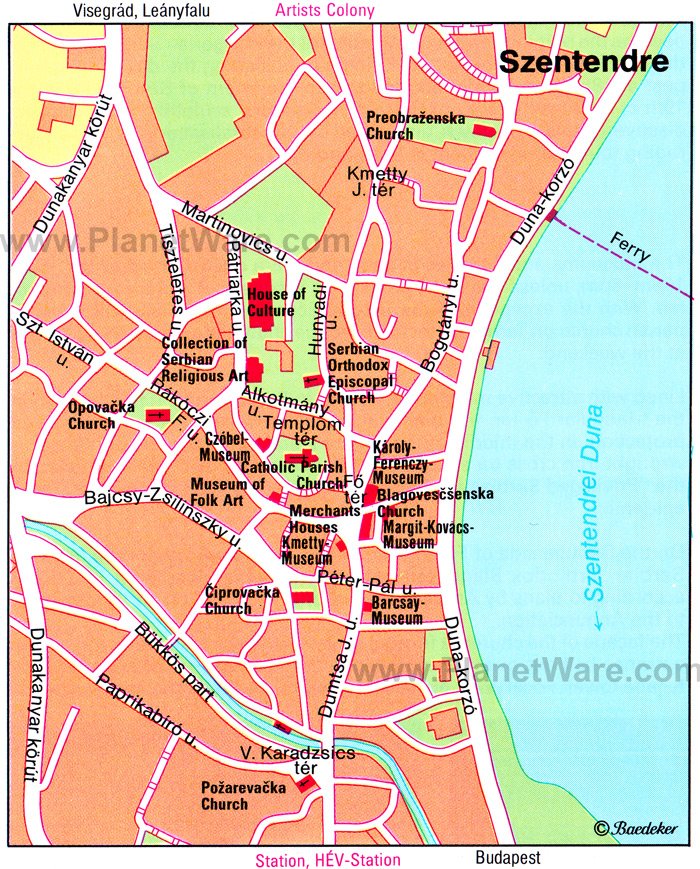
Gyor, 123 kilometers west of Budapest, sits at the confluence of the Mosoni-Duna (Danube), Rába, and Rábca rivers, in the middle of what's known as the Little Hungarian Plain. The Old Town , including Cathedral Chapter Hill and the Royal Town, is one of the most beautiful Renaissance and Baroque townscapes in Hungary and includes 170 listed buildings and monuments.
The town's most famous feature is its Vienna Gate Square (Bécsi kapu). It's a much-photographed spot, consisting of a lovely Baroque square surrounded by well-preserved 17th- and 18th-century homes. Also worth seeing is the impressive Carmelite Church.
Other fun things to do in Gyor include visiting the Bishop's Castle, with its museum and 14th-century tower and later residence of Bishop Kálmán (his coat-of-arms still adorns its front). Look also for the 11th-century Gyor Cathedral, the Cathedral Basilica of the Assumption of Our Lady, as well as the eight-meter Ark of the Covenant Monument built at the request of Emperor Charles III and depicting two angels holding the Ark of the Covenant .
Other highlights include the famous Iron Cockerel atop the bank of the Mosoni Danube, famous as the town's emblem; and Széchenyi tér , the 17th-century Hungarian Old People's Home still in use today.
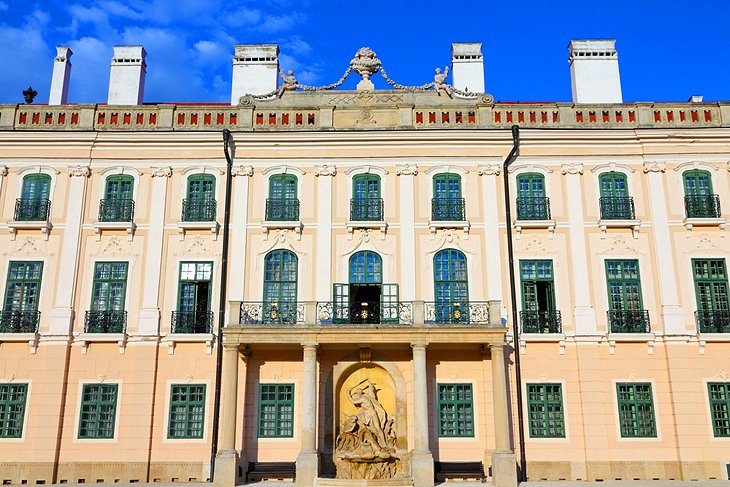
Fertod, 180 kilometers west of Budapest near the borders with Austria and Slovakia, is where you'll find Esterházy Palace (Esterházy-kastély). The largest and most beautiful mansion in Hungary, it's often called the Hungarian Versailles.
This stunning Rococo residence was built between 1760 and 1767 and is an impressive estate with a magnificent wrought-iron gate and courtyard fountains. Other notable features include its splendid two-story side wings linked to the main building, which is dominated by a central tower.
A highlight of a visit is the spectacular view from the garden balcony overlooking the estate's remaining parkland. Inside, the Chinese Salon, the Green Salon and the Maria Theresia Chamber are all decorated with fine Rococo furniture and fireplaces. One of the estate's most famous guests was composer Joseph Haydn, who spent much time here as a court musician for the Eszterházy family.
Address: Fertod-Eszterháza, Joseph Haydn utca 2, 9431, Hungary
Official site: https://esterhazy.at/en
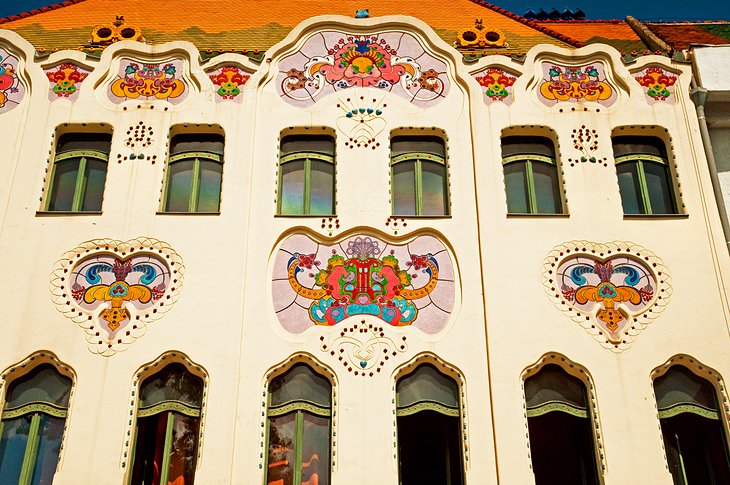
Hungary's southern Great Plains region is a scenic land of rivers and lakes, wheat fields, and grassland marked by rustic farms. At the heart of it is the small city of Kecskemét, known for its colorful Art Nouveau architecture.
After a scenic ride to Kecskemét and some sightseeing of its landmarks, continue onwards to the town of Lajosmizse. Some of the things to do here include watching Puszta horsemen perform in a show, or take a carriage ride through the Puszta, also known as the Pannonian Steppe. Both towns are easily accessible from Budapest by train.
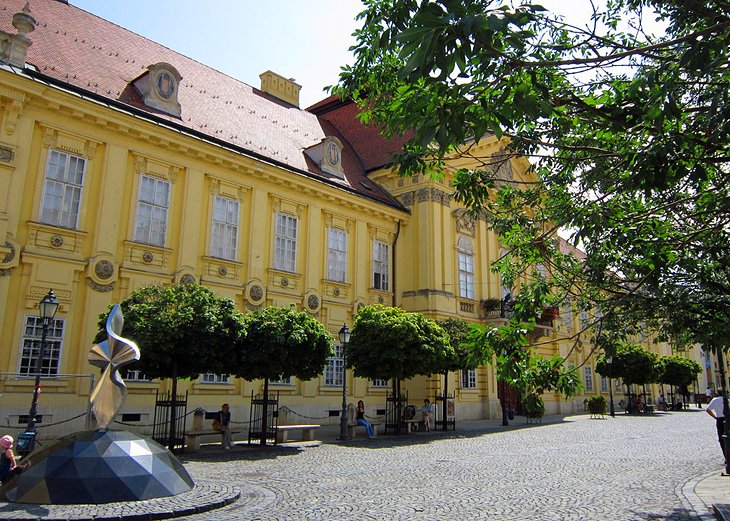
Few towns are as closely linked with the beginnings of the Hungarian monarchy as Székesfehérvár , which also possesses the former sepulchral and coronation church of the Hungarian kings. Situated between the foothills of the Bakony Forest and the Velencei Mountains and just 45 minutes southwest of Budapest, Székesfehérvár is an easy day trip that has a well-preserved inner town.
Popular points of interest include Városház tér and the Bishop's Palace , the Town Hall and Hiemer House , all built between the late 17th and 18th century. Another must-see is the Romanesque Royal Basilica , a triple-naved church with a semicircular apse, founded by King Stephen in the 11th century and rebuilt several times since.
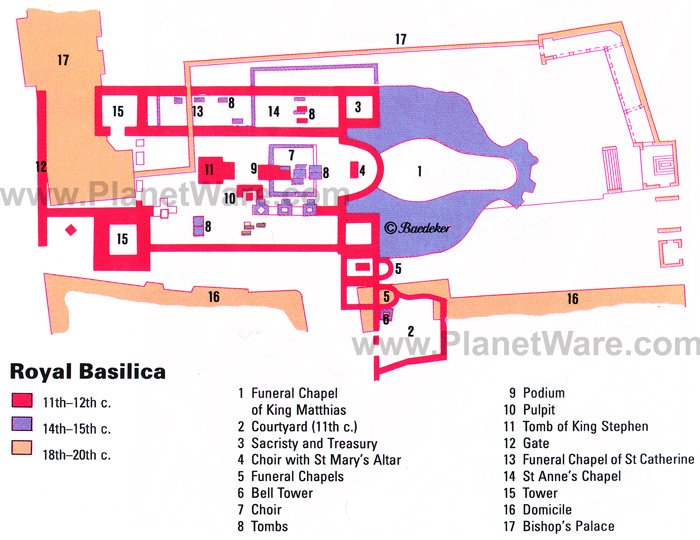
It's believed the invading Magyars erected the first fortress on the site of the present Diósgyor Castle. Located near Miskolc, 180 kilometers northeast of Budapest, this impressive fortress was built in 1340 and modeled on the castles found in southern Italy, it's flanked by four towers and protected by an outer ring of fortifications.
Although now largely ruins, the outer foundations have been uncovered, and parts of the inner fortifications reconstructed. Visitors can, however, be impressed by the size of the great Knights' Hall in the north wing and the castle chapel in the east wing.
Three of the four corner towers have been reconstructed, and in the southwest tower, the Late Gothic vaulting of the corner room has been rebuilt. Some of the stone-masonry and other castle finds are on display in the castle museum in the northeast bastion. Open-air events are held in the castle courtyard during the summer months.
Editor's note: Be sure to check the attraction's website, below, for restrictions due to a major renovation program currently underway here.
Address: 3534 Miskolc, Vár St 24, Hungary
Official site: https://diosgyorivar.hu/en
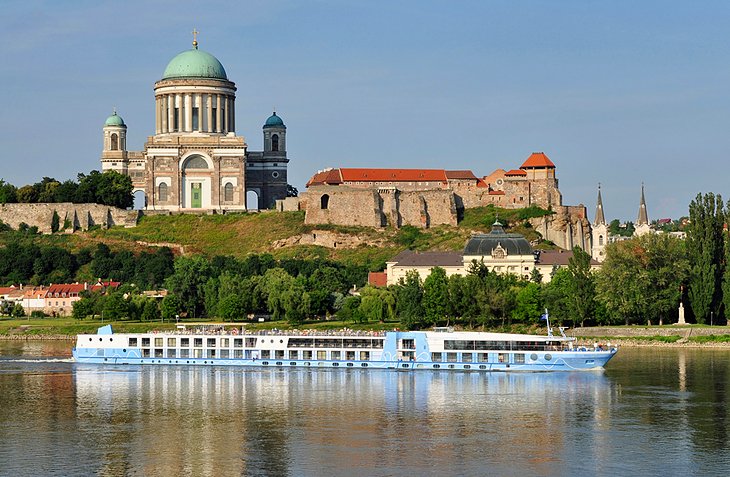
Esztergom is one of the oldest towns in Hungary and lies only 46 kilometers northwest of Budapest where the Danube breaks through the Hungarian Central Uplands. It's an area that's easily accessible from the capital either by car or public transit, and makes for a perfect day trip from the capital.
Highlights of the town's historic Castle Hill area, Várhegy, adjacent to the Danube include the ruins of the 10th-century Hungarian Royal Palace ; the imposing cathedral, the Basilica of Esztergom, with its entrance marked by two tall towers and several Corinthian Columns; and the adjacent Christian Museum (Keresztény Múzeum) with its collection of works of Hungarian Italian Renaissance artists.
If visiting Esztergom by car, be sure to venture into the Pilis Mountains . Located in the loop formed by the Danube Bend, this chain of mountains, an official nature reserve, is well known for its caves and fossils. Add to the mix its mountain slopes covered mainly in forests of beech and oak with steep and picturesque chalk cliffs, and it's a popular area to explore on foot.
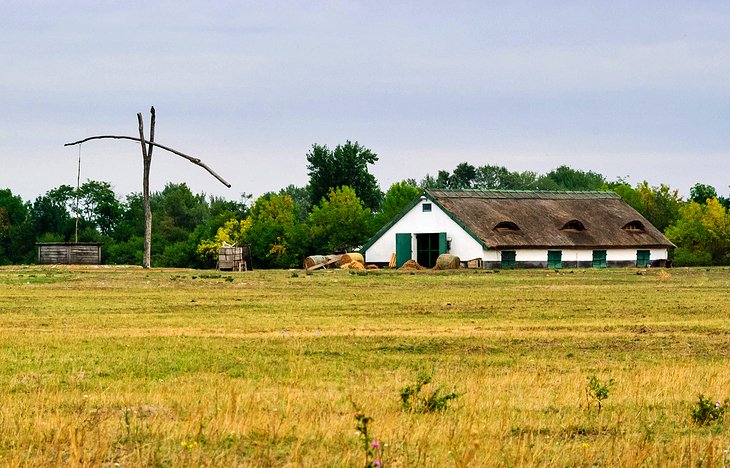
Situated between the Tisza River and the eastern Hungarian town of Debrecen stretches the Hortobágy, or Puszta, a lowland prairie of grass-covered steppes and pasture famous for its cattle, sheep, and horses.
Much of the area has been preserved in the Hortobágy National Park in order to safeguard its unique and varied fauna and flora. Covering an area of 800 square kilometers, it also preserves the traditional farming methods employed here since the 14th century. As a result, it's the perfect place for a driving tour and to explore the area's many small villages and towns.
It's also very popular among bird-watchers, who travel from afar just to see migrant birds such as various species of heron, spoonbills, white geese, reed-warblers, waders, rare black storks, falcons, and eagles. A variety of domesticated animals are also unique to the area, including the Hungarian Steppe cattle, long-horned sheep, the nonius horse, and the komondor and puli dogs so beloved by the shepherds.
Official site: www.hnp.hu/en
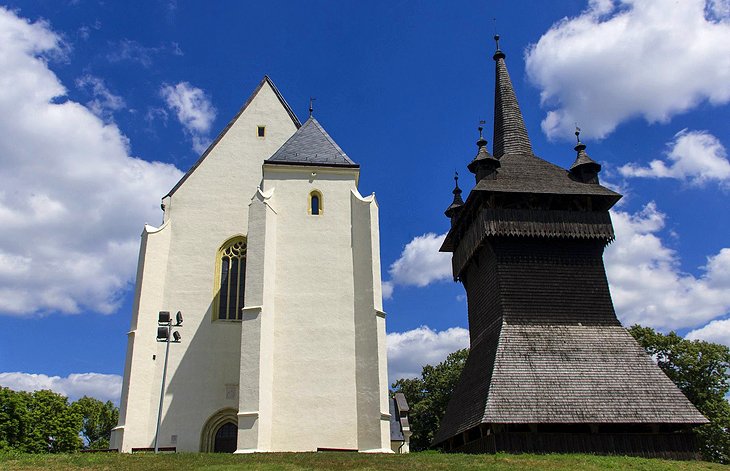
In the Middle Ages, this rural town 260 kilometers east of Budapest on the Romanian border once belonged to the Báthori family-princes from Transylvania who become great feudal lords. As a result, Nyírbátor boasts two magnificent medieval churches of which St. George's Church, now the Reformed Church , is one of the major late Gothic Hungarian edifices.
The Báthori coat-of-arms can still be seen above the west door, with a projecting tower at the side, while the main Renaissance-style door is on the south side. Inside, the eye is immediately drawn to the filigree reticular vaulting. The tomb in the choir is that of the writer István Báthori, who died in 1605, and the founder of the church is interred under a marble gravestone in the crypt.
Address: Nyírbátor, Egyház u. 1, 4300 Hungary
Official site: http://nyirbator.reformatus.hu/about-us/
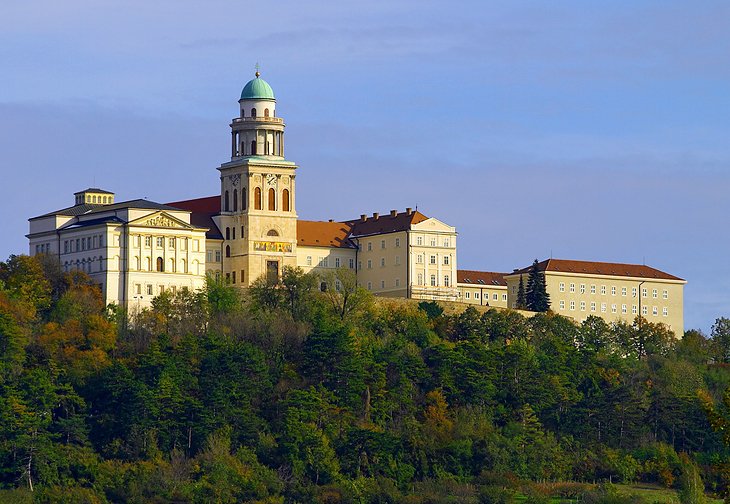
Visitors travel to Pannonhalma largely to see the famous Abbey of St. Martin, also known as the Territorial Abbey of Pannonhalma. The focal point of the Benedictine order in Hungary, many monks still live here, and since 1997, the monastery-together with the Lady Chapel, the Calvary, and the surrounding cultural region-has been on the list of World Cultural Heritage Sites.
This huge complex sits on a high point of land known as the Mount of St. Martin (Márton-hegy) and can trace its roots as far back as the 10th century. It's also a very popular destination for cultural programming, including jazz festivals and organ recitals. For those looking for a fascinating place to stay, accommodation packages are available.
Address: 9090 Pannonhalma, Vár 1, Hungary
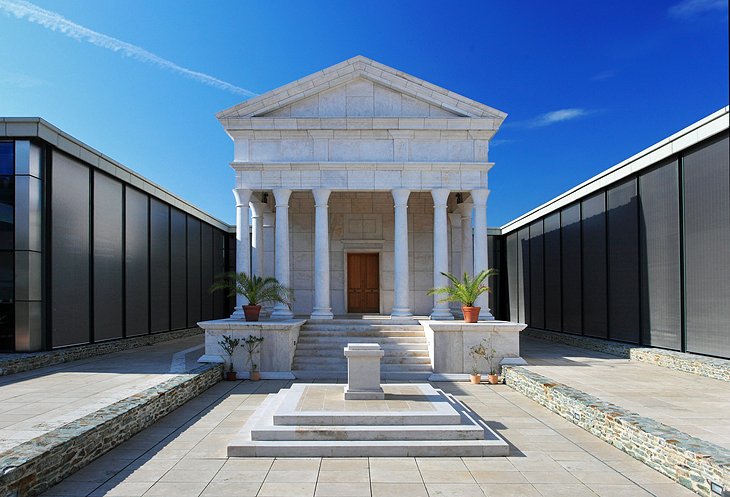
Szombathely, about 220 kilometers from Budapest on the eastern edge of the Alps, is home to the excellent Savaria Museum (Savaria Megyei Hatóköru Városi Múzeum) with its outstanding collection of Roman antiquities. The lapidarium in the basement is of particular note and contains statues and mosaics from Savaria, as well as ornaments from the church in Ják.
On the upper floor are extensive exhibitions of archaeology and the natural history of the Szombathely region. Afterwards, be sure to explore the area around the Iseum , a reconstruction of the ancient Roman temple that once existed in the city. The museum features a variety of fun programs for kids, along with a gift shop and restaurant.
Address: Kisfaludy Sándor utca 9, Szombathely, Vas 9700, Hungary
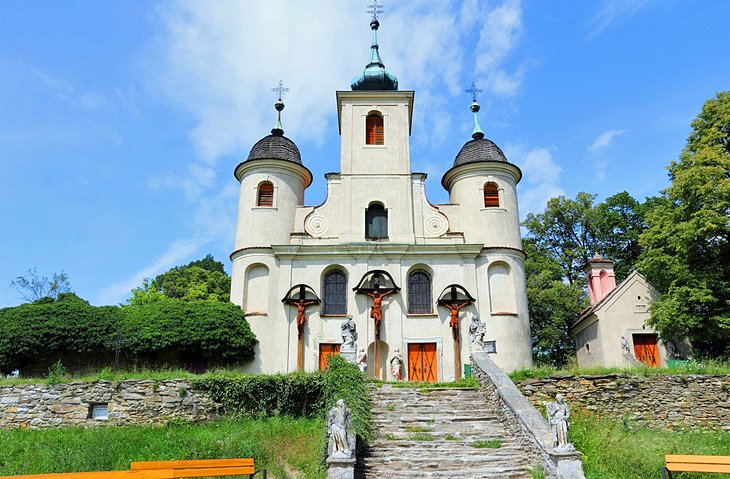
The most important historical building in Koszeg, 220 kilometers west of Budapest, is the Church of St. James. It was built in Late Gothic style in 1407 using the remains of a Romanesque Minorite church.
The front of the church and its furnishings were redesigned in Baroque fashion in 1758, while the tower is 15th century. The interior of the triple-aisled edifice is Gothic, and the keystone of the groin vault in front of the choir bears the arms of the founder, Miklós Garai.
Along the south side of the choir are niche-seats with pointed arches, and a Gothic Madonna and Infant Jesus above the tabernacle date from around 1500. Also Gothic are the wall paintings on the end wall of the south side-aisle depicting the Magi, an outsize St. Christopher and a protective Madonna.
The heart of the Old Town, the well-proportioned Jurisics Square containing the Town Hall, two churches and medieval town houses with characteristic enclosed gables, is also worth a visit.
Address: Koszeg, Jurisics tér 1, 9730 Hungary
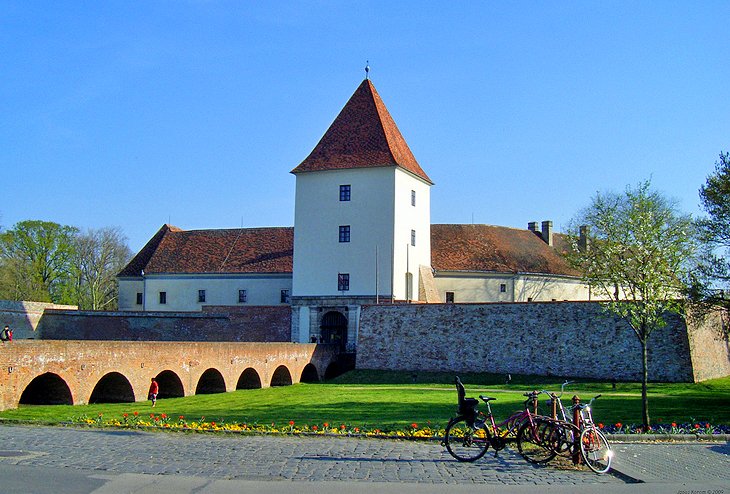
Built on the site of a 12th-century fortress, Nádasdy Castle was named after the wealthy family that owned it for centuries. It was designed in a pentagonal Renaissance style.
Located in Sárvár, about 200 kilometers west of Budapest, its Renaissance tower has been preserved in its original style of 1598. Inside is an impressive palatial room with stucco-framed frescoes decorating its walls.
The ceiling paintings portray the Nádasdys as commanders in the Turkish wars, and on the walls are scenes from the Old Testament. The allegorical paintings in the tower room offer a continuation of the frescos from the palatial room. Also of interest is the Ferenc Nádasdy Museum devoted to the history of the family, regional folk art, and the town's history.
Address: Sárvár, Várkerület u. 1, 9600 Hungary
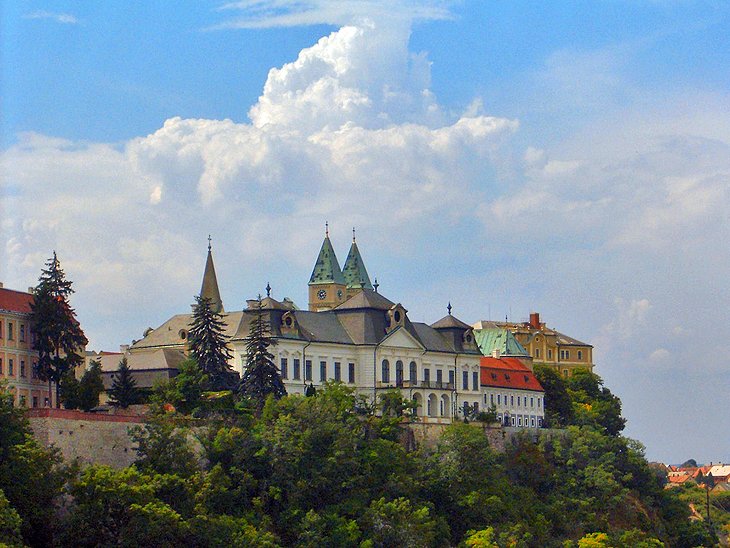
The walled castle quarter of Veszprém, 120 kilometers west of Budapest, is best known as Várnegyed by locals. This historic area includes a number of historic attractions worth visiting. One highlight is the Neo-Romanesque Heroes' Gate , erected in 1936 on the site of the former medieval gate, and home to a small museum chronicling the history of Várnegyed.
Another highlight is Gisela Chapel . Built in 1230, it served as a private chapel to the bishop as well as the queens who resided here, and its small interior contains fine cross-ribbed vaulting with original paintings and notable keystones. On the north wall, original frescos were exposed during its restoration depicting six apostles and ghostly floating figures suggesting Byzantine influence.
St. Michael's Cathedral is also worth seeing. Built on the foundations of a bishop's church founded by King Stephen and first documented in 1001.
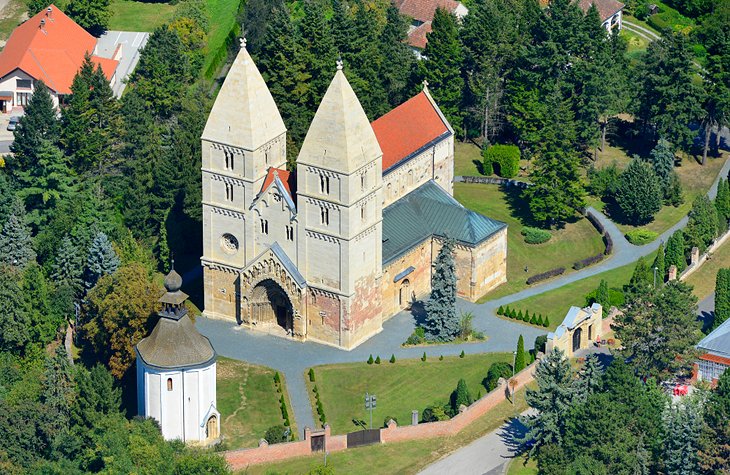
The village of Ják, 230 kilometers west of Budapest, is a treat for those interested in art and church architecture. One of Hungary's outstanding Romanesque churches, the impressive St. George's Church has a history dating back to the early 1200s, and although extensively restored in the late 19th century, elements of the past can still be seen.
Opposite the west front of the church, on a quartered ground plan, stands the small, two-story St. James' Chapel built in 1260. The rounded decorations on the double-windows of the upper floor complement the motifs on the windows of the abbey church, and the relief on the tympanum above the south door depicts the Lamb of God between two dragons. The interior furnishings of the chapel are Rococo, and the mid-18th-century altar is also of note.

More on Hungary
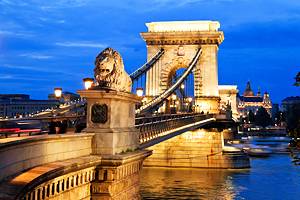

Home » Travel Guides » Hungary » 25 Best Things To Do In Budapest (Hungary)
25 Best Things To Do In Budapest (Hungary)
Hungary’s capital city Budapest is actually made up of 3 unified cities, with Buda and Óbuda on the west bank of the Danube and Pest on the east bank. Much of the city has been granted UNESCO World Heritage Site status, and many visitors consider the city to be amongst the most beautiful cities in Europe.
The city successfully mixes its fascinating history with a brilliant, laid-back contemporary artistic style. There are a wide range of different things for visitors to see and do, from museums to thermal spas, so everyone should be able to find something that tickles their fancy.
Lets explore the best things to do in Budapest :
1. Parliament Building

The Hungarian Parliament Building, which was designed and built in the Gothic Revival style, is one of the largest buildings in Hungary, and is home to hundreds of parliamentary offices. Although the impressive building looks fantastic from every angle, to see the whole building in its full glory, it is worth viewing it from the other side of the Danube.
Tours of certain areas of the building are available daily, and run in different languages. You will need identification to get in, and your bag may be searched on entry. There is a top selling guided tour which you can book here .
2. Gellért Baths

One of the grandest spas in the city is the Gellert Bath and Spa centre, which includes an open-air pool (which turns into a wave pool), an effervescent swimming pool, a Finnish sauna, and a range of other saunas and plunge pools.
Massages and other spa treatments are also available at an extra fee. The complex was originally built between 1912 and 1918 in an Art Nouveau style, but it sustained serious damage during World War II. The whole spa was extensively renovated in 2008 to bring the baths back to their former glory. The baths are open all week for mixed bathing.
3. Heroes’ Square

Heroes’ Square (Hosök tere), which marks the end of Andrássy Avenue is home to an iconic monument which features depictions of the Seven Chieftains of the Magyars, who are believed to have led the Hungarian people from central Asia to the Carpathian basin.
Atop the central pillar is the Archangel Gabriel, who is holding the Hungarian crown. At either side of the central column are two matching colonnades, which depict a variety of other historical Hungarian figures. The impressive buildings at either side of the square are art galleries. Take care when crossing to the statue, because traffic around the monument can be erratic.
A great way to explore the city: Budapest Segway Tour
4. Margaret Island

Margaret Island is a 2.5km long island which sits in the middle of the Danube, which is covered in parkland and recreational facilities.
There are a number of companies which rent pedal carts, golf carts, and other self-powered vehicles, so that you can explore the island properly.
A rubber-coated 5.5 km running track encircles the island, and is a popular jogging spot for runners who want to get away from the hustle and bustle of the city. One of the most famous features of the island is the “music fountain”, from which water regularly “dances” in time to classical music.
Other notable features on the island include medieval ruins and small aviary which primarily caters for injured water birds and wildfowl.
5. Danube Promenade

This stretch of the Danube walkway goes from the Elizabeth Bridge to the Chain Bridge, and is perfect for those who want a short, but interesting walk. Promenading along the Danube is a great way to see many of the most famous sights in the capital.
Looking over towards to Buda side of the river, you will see the Buda Castle, the Liberty Statue on Gellert Hill and the Fisherman’s Bastion. On the Promenade side of the river you can enjoy restaurants, cafes, Szechenyi Istvan Square and a range of different sculptures, including the Little Princess.
The Danube is also perfect for a river cruise, there’s a fun dinner cruise and folk show (with gypsy music) which you can book here .
6. House of Terror

The House of Terror holds exhibitions about the successive Fascist and Communist regimes which ruled Hungary during the 20th Century. The building itself was the former headquarters of the Fascist Arrow Cross party, and the building was subsequently used as a prison and torture venue by the State Security services of Hungary.
There is the opportunity to tour some of the prison area in the basement. The exhibition includes information about both regimes, as well as testimonials from some of the victims. As well as exhibitions about the fascist and communist “security services”, the building often houses other temporary exhibitions.
7. St. Stephen’s Basilica

This basilica is one of the most important religious buildings in Hungary, and visitors to the reliquary can see the (reported) right hand of Stephen, first King of Hungary. As this is a holy site, visitors who plan on entering the church are asked to keep their knees and shoulders covered.
Those with a head for heights can travel up to the base of the dome and look out over the city. On a clear day, this is a great vantage point from which to survey Budapest from the air. Classical music concerts and organ concerts regularly take place inside the Basilica, and sometime spill out into the square outside. Fun fact: You can book an Organ Concert in the Basilica right here .
8. Hungarian State Opera House

This Neo-Renaissance building was first opened in 1884, following a commission from Emperor Franz Joseph. Outside of the building, you can see statues to Ferenc Erkel (composer of the Hungarian National Anthem) and Ferenc Liszt (Hungarian composer).
The 1200 seat auditorium is considered to be one of the best in the world for operatic performances, and it is well worth it to buy a ticket to a show.
Ticket prices start from as low as 500ft. If you cannot find time to see a show, guided tours of the Opera House are available during the day, although these usually need to be booked in advance.
9. Fisherman’s Bastion

Although the Fisherman’s Bastion looks like a medieval monument, it was actually built in the early 20th century in a neo-Gothic style, specifically to act as a panoramic viewing platform across the Danube, Margaret Island and Pest.
It is named after the Guild of Fishermen, which was responsible for defending that stretch of the city walls during the Middle Ages.
The seven towers of the Bastion represent the seven Magyar tribes that helped to settle the Magyar people in the Carpathian Basin. Come at sunset to see a particularly beautiful view of the city.
10. Invisible Exhibition

The Invisible Exhibition aims to give visitors the chance to experience what life is like for people who are completely blind. A registered blind guide will take you on a tour through various different artificially created environments (garden, supermarket, bar etc) which are in completely dark rooms.
On arrival, you will be asked to turn off any potential light sources, such as mobile phones or digital watches, so that there will no light at all in the rooms. After the exhibition, you can enjoy dinner in the dark, served by blind waiters, who will help you to find your way around your dinner plate.
You may also like: Private Art Nouveau Budapest Tour
11. Faust Wine Cellars

This historic wine cellar, which is located underneath the Buda Castle is the perfect place to sample wines from some of the 22 Hungarian wine regions. You will also have the opportunity to sample traditional Hungarian fruit palinka. A sommelier will give you tasting notes during your visit, so that you can get the most out of each wine that you try.
There are a range of different tasting programmes available, depending on how much time you have and how much you want to spend. Due to the size of the cellars, you are advised to book ahead.
12. Memento Park

This wonderful sculpture park is now home to some of the many Communist monuments and statues which dotted the city during the Communist Era.
These statues were either removed by the government as part of the decommunization process, or they were forcibly removed by the Hungarian people in protest at the previous regime.
When the park was opened in 1993, it became a place to display some of these monuments and showcase an important part of the city’s history.
A small museum on site also includes temporary exhibitions about life under the communist regime, including information about the Hungarian Secret Police.
13. Dohány Street Synagogue

This synagogue is currently one of the largest in the world outside of Israel, despite the fact that Hungary’s Jewish population was significantly depleted during World War II.
The interior and the garden were restored in the 1990’s, with much of the funding coming from the Hungarian Jewish diaspora population worldwide.
In the garden you can see a weeping willow memorial, whose metal leaves bear the names of some of those killed during the war.
There is also a memorial to Swedish diplomat Roual Wallenberg, who helped to save hundreds of Hungarian Jews from concentration camps and ghettos.
14. Ecseri Flea Market

This fantastic flea market on the outskirts of the city is a great place to find a bargain. It is possible to pick up a variety of different treasures from here, although you may have to search through stalls full of things that you consider to be trash in order to find them.
Even if you are not planning on buying anything, it is still possible to wander for hours amid the stalls, dreaming about the past owners of all of this bric-a-brac. Stalls sell everything from retro clothing, through to memorabilia from the Communist era.
Haggling is recommended, although you should expect to pay a bit more if you are not a local.
15. Ruin Pubs

Budapest is famous for its “ruin pubs”, in which shabby-chic is the order of the day. The best ruin pubs are set up in sprawling, deserted buildings, which have been filled with comfortable, but slightly worn out furniture.
Each pub has its own unique style, so you will often find visitors referring to their favourite pub as “the one with the…”. Popular ruin pubs include Instant (“the one with the crazy animal pictures”), Fogas Ház (“the one with the teeth), Kuplung (“the one with the whale”) and Szimpla Kert.
16. Central Market Hall

The Great Market Hall in central Budapest is Budapest’s most famous marketplace.
Whilst many locals still use the market hall as a place to buy their groceries, the market is incredibly popular with the tourists too.
Locally grown fruits and veg, and locally sourced meats are found on the lower floors, and souvenirs including lace, chess sets and leather goods are available in the upper floors.
As well as individual ingredients, it is possible to pick up homemade local delicacies like goulash and langos from the food stall upstairs.
17. Buda Castle Hill Funicular

This funicular, which first opened in 1870, is the second oldest funicular of its kind in the world. A system of weights and counterweights is used to help to raise the carriages up and down the hill. The funicular is the fastest way to get to the top of Castle Hill, and is exceedingly popular because of its panoramic views out across the Danube. (You can also get there with this Segway tour )
The speed of ascent was actually slowed down as of 1988, to give passengers more time to enjoy their ride. The track is open daily until 10pm, so it is also a great way to enjoy views of Pest at night.
18. The Buda Hills

The Buda Hills are one of the greenest areas of the city, and are very popular with Budapest citizens who want to take a little time away from city life.
There are various hiking trails to follow and mountain bike paths as well, which range from easy to medium level of difficulty.
For those who want to explore the hills in a more leisurely fashion, visit the Children’s Railway, which is entirely staffed by children aged 10-14 (with the exception of some adult staff who are responsible for safety).
There are plenty of picnic spots dotted around so that you can enjoy a lovely packed lunch.
19. Andrássy Avenue

This wonderful boulevard takes visitors from Erzsébet Square in central Pest, out to the City Park. Due to its interesting cultural heritage, it was declared a World Heritage Site in 2002.
Taking a walk down Andrássy is a great way to see a number of Budapest’s different architectural styles, including the Hungarian National Opera House, neo-renaissance townhouses and mansions, and a number of different national embassies.
If you do not fancy promenading down the boulevard, the metro line which runs underneath the Avenue is the third oldest underground railway in the world.
20. Liberty Statue

The Liberty Statue on Gellert Hill is one of the few prominent Communist statues which remained in situ after the transition to democracy, in part because of its iconic location overlooking the city.
The statue was first erected in 1947 to commemorate the Soviet troops who lost their lives liberating the country, however the engraving was later changed so that it commemorated “all who sacrificed their lives for the independence, freedom, and prosperity of Hungary”.
The panoramic views from underneath the statue are unparalleled, and help to make the walk to the top of the hill well worth it.
21. Citadella

The Citadel, which sits atop Gellert Hill, was constructed by the Hapsburgs following the failed Hungarian War of Independence.
It was thought that its prime strategic position would make it easy to control both Buda and Pest, should any future uprisings occur.
Troops were stationed at the Citadel until 1897. Soviet forces once again used the fortress to control the city during the 1956 Hungarian Revolution, and tanks which were situated there fired down on the city.
The Citadel now houses a restaurant, a hotel and a museum.
22. Széchenyi Thermal Baths

The Széchenyi Baths complex is the largest “medicinal” bath centre in Europe. The waters are rich in sulphates, calcium, magnesium, bicarbonate and fluoride, which are believed to help patients with degenerative joint illnesses and other medical issues.
For those who just want to enjoy the relaxing powers of the thermal pools, there are a variety of different thermal pools on site, as well as saunas and steam rooms.
Massages and beauty treatments are also available at an additional fee.
The two outdoor pools are fantastic places to visit on a cold, dark night, as the steam rising from the hot water makes the whole place seem wonderfully mysterious.
23. City Park

The City Park is a wonderful leisure facility for the citizens of Budapest, and includes sports facilities, swimming baths, and a boating lake.
During the winter months, the boating lake is transformed into one of Europe’s largest ice rinks.
The park is also home to the Budapest Municipal Zoo and Botanical Gardens, the Budapest Circus and the Vajdahunyad Castle (housing the Museum of Hungarian Agriculture).
Just outside of the park you can find the Time Wheel, which is one of the largest sand timers in the world.
In this sand timer, all of the grains of glass take 1 year to fall from the top section to the bottom, and the timer is rotated every New Year.
24. Hungarian National Museum

The Hungarian National Museum is home to thousands of exhibits detailing the history, art, religion and archaeology of the country, including exhibitions from areas which are now considered to be outside of Hungary’s borders.
The spectacular Neoclassical museum building itself is worth looking at, even if you do not plan on touring the inside.
The peaceful gardens outside of the museum are considered to be a popular meeting spot, and are particularly popular during the summer months.
25. Aquincum Museum and Ruin Garden

This is a great chance to explore some of Hungary’s ancient history. Aquincum was a Roman city which stood where Budapest stands today, and served as an important military base in the ancient Roman Empire.
It is possible to walk around some of the ruins, including those of an ancient gladiatorial amphitheatre, and other structures, such as the city bathhouse.
In the museum itself, you can view various Roman relics, and a working replica of famous water organ which was discovered in the area in 1931.
Want to know what to do in Budapest with the little ones? Check out this post by trip101: Things to do in Budapest with kids
25 Best Things To Do In Budapest (Hungary):
- Parliament Building
- Gellért Baths
- Heroes’ Square
- Margaret Island
- Danube Promenade
- House of Terror
- St. Stephen’s Basilica
- Hungarian State Opera House
- Fisherman’s Bastion
- Invisible Exhibition
- Faust Wine Cellars
- Memento Park
- Dohány Street Synagogue
- Ecseri Flea Market
- Central Market Hall
- Buda Castle Hill Funicular
- The Buda Hills
- Andrássy Avenue
- Liberty Statue
- Széchenyi Thermal Baths
- Hungarian National Museum
- Aquincum Museum and Ruin Garden
Nomadic Matt's Travel Site
Travel Better, Cheaper, Longer
My Suggested 3 Day Itinerary for Budapest
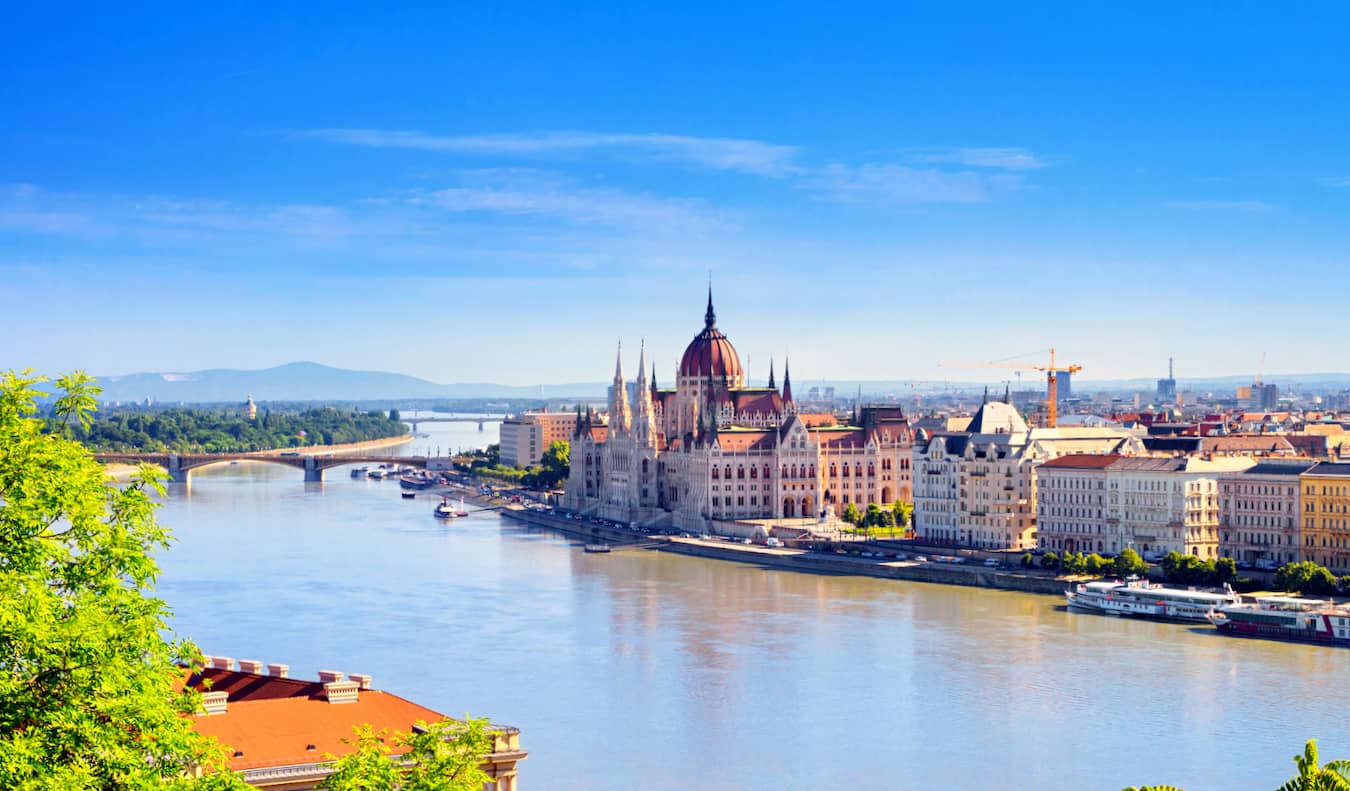
Before I first visited Budapest , I pictured the city as a rundown former Communist capital with little to do. I thought it would be drab.
Fortunately, I was wrong.
Very wrong.
Budapest is a vibrant city with a rich history, beautiful parks and buildings, bustling food halls, cool underground bars , and centuries-old thermal baths.
And, in the decade since that first visit, Budapest has only gotten better.
It’s a lively capital that rivals the best of Western Europe. While it may have something of a drab exterior due to all those Soviet era buildings, if you can look beyond its concrete façade you’ll find a cool city with plenty on offer.
To help you plan your visit to this marvelous Central European capital, I’ve created this Budapest itinerary with the best things to see and do in the city so you can have an amazing, budget-friendly experience. It’s a packed itinerary, but you don’t have to do everything — just pick and choose the things you prefer to see!
Budapest Itinerary Highlights
Day 1 : Castle Hill, National Gallery, Fisherman’s Bastion, & more
Day 2 : Parliament, Great Market Hall, Ruin Bars, & more
Day 3 : Gellért Hill, Cave Church, Terror Museum, & more
Budapest Itinerary: Day 1

Take a Walking Tour I love walking tours. If you’ve read some of my other posts, you probably know that already, since I’m always recommending them. They are a wonderful way to get an overview of a place, learn about its culture, orient yourself, and connect with a local guide who can answer all your questions. Budapest has a number of good tours — just be sure to tip your guide at the end:
- Tourist Angel
- Trip to Budapest
- Generation Tours
After the walking tour, which lasts two to three hours, head over to Castle Hill.
Tour Castle Hill This area has a lot of charm, with cobblestone streets and narrow alleys running through the Old Town. There are panoramic views of Pest and the Danube, great cafés and restaurants, and shops to explore.
The cheapest and easiest way to get up the hill is on the No. 16 bus. The funicular is another option, but it usually has a lengthy wait. I actually prefer walking, as I don’t think the hill is that steep.
See Buda Castle They call it a castle but it’s more of a palace complex than a traditional castle. Though it was originally constructed in the 13th century, the huge Baroque complex you see today was built between 1749 and 1769. The palace’s days of being a luxurious living space ended in World War II, though, when Nazi (and then Russian) troops looted it. Today, it’s home to a collection of museums (see below).
Beneath the castle, Vlad the Impaler (who we know colloquially as Count Dracula) was apparently imprisoned for 14 years. In the dungeon area, there is a labyrinth that tourists can explore.
Szent György tér 2, +36 1 458 3000, budacastlebudapest.com. The courtyards are open 24/7 while the castle has hours that align with the museum and gallery below. Tours cost 6,180 HUF (must be booked in advance).
Visit the Budapest History Museum This museum covers four floors of Buda Castle and really gives you a comprehensive overview of the city’s entire history (plus the views across town are amazing!). Rooms date back to the 15th century, including the old cellar, which you’re free to explore. The museum also offers an insightful overview of the historical sites around the city center and their role in Hungarian history, from prehistoric times right up to the present.
2 Szent Gyorgy Square, +36-1-487-8854, budacastlebudapest.com/budapest-history-museum. Open Tuesday-Sunday 10am-6pm. Admission is 3,800 HUF (free admission if you have the Budapest Card ). There is an additional charge for taking pictures.
Admire the Hungarian National Gallery Established in 1957, this art museum is located inside Buda Castle. Once one of the most glorious royal residences in Europe, Buda Castle dates to the 14th century and was restored in the Baroque style in the late 1700s. World War II damaged the palace severely and it was restored again in the 1960s before becoming home to the National Gallery in 1975. It has works from prominent Hungarian and European artists as well as a collection of Medieval altarpieces from the 15th century.
During your visit, you can also check out the underground Habsburg Palatine Crypt and climb to the top of the iconic dome for panoramic views of the city.
1014 Budapest, +36 20 439 7325, mng.hu. Open Tuesday-Sunday 10am-6pm. Admission is 4,800 HUF and there is an additional charge for taking pictures. Audio guides are available for 1,200 HUF.
See the Hospital in the Rock This museum is underneath Castle Hill and just a five-minute walk from the castle. It has a fascinating history, having served as a hospital, bomb shelter, prison, and nuclear bunker. Inside, you can learn about World War II, the 1956 revolution, and the Cold War. It opened as a museum in 2008 and is one of the most popular attractions in town. There’s a one-hour guided tour complete with wax figures, tools, equipment, and furnishings.
Lovas ut 4/c , +36 70 701 0101, sziklakorhaz.eu/en. Open daily 10am-7pm. Guided tours in English are one hour long and cost around 7,500 HUF.
Visit Matthias Church This Neo-Gothic Roman Catholic is super unique. I’ve seen hundreds of churches and cathedrals across Europe , and this one is unique. The colorful roof almost looks like it was built from Lego. The original church was built in the 11th century, though nothing remains of it. The current building was constructed in the 14th century and it saw significant renovations in the 19th century. Once inside, look out for the vaulted ceilings and ornate décor. It was a mosque for a while, which explains its vibrant colors and painted designs that aren’t the norm in European churches.
Szentháromság tér 2, +36 1 355 5657, matyas-templom.hu. Open 9am-5pm on weekdays, 9am-1pm on Saturdays, and 1pm-5pm on Sundays. Admission to the church is 2,900 HUF and it’s 3,400 HUF to visit the tower.
See Fisherman’s Bastion This ornate, fairytale structure faces Pest and provides great panoramic views across the Danube River. Built between 1895 and 1902, the terrace comprises seven lookout towers that represent the seven Hungarian tribes that founded Budapest. (It was designed by the same architect who constructed the Matthias Church next door.) The name comes from either the fact that the terrace overlooks the fishermen’s guild or that the fishermen’s guild actually was responsible for protecting that area of the wall (no one is certain which).
Szentháromság tér, +36 1 458 3030, fishermansbastion.com. Open daily 9am-11pm. Admission is free in the mornings before 9am or evenings after 7pm, with a charge of 1,200 HUF to visit the upper turrets.
Tour the Hungarian Presidential Palace This is the home of the Hungarian president. The palace is called Sándor-Palota (Alexander Palace), and while it’s not terribly eye-catching compared to the surrounding buildings, you can see the changing of the guard at the top of each hour for free (from 9am-5pm, excluding Sundays). Occasionally, the palace is open for tours in the summer (you’ll have to inquire in person about prices and hours as they occur infrequently).
Szent György tér 2, +36 1 224 5000. Admission to the changing of the guard is free. There is an additional fee for palace admission (when available).
See Buda Tower This reconstructed “tower” is all that remains of the Church of Mary Magdalene, which was built in the 13th century but nearly destroyed during an air raid in World War II. When the Turks occupied the city between 1541-1699, it was used as a mosque. Since reopening in 2017, you can now climb the 172 steps to the top, but given the great free views of Castle Hill, I’d skip it and just view the tower from the outside.
Kapisztrán tér 6, budatower.hu/en. Open daily 10am-4pm (except January-February when it’s only open on weekends). Admission is 1,500 HUF or free if you have the Budapest Card .
Budapest Itinerary: Day 2
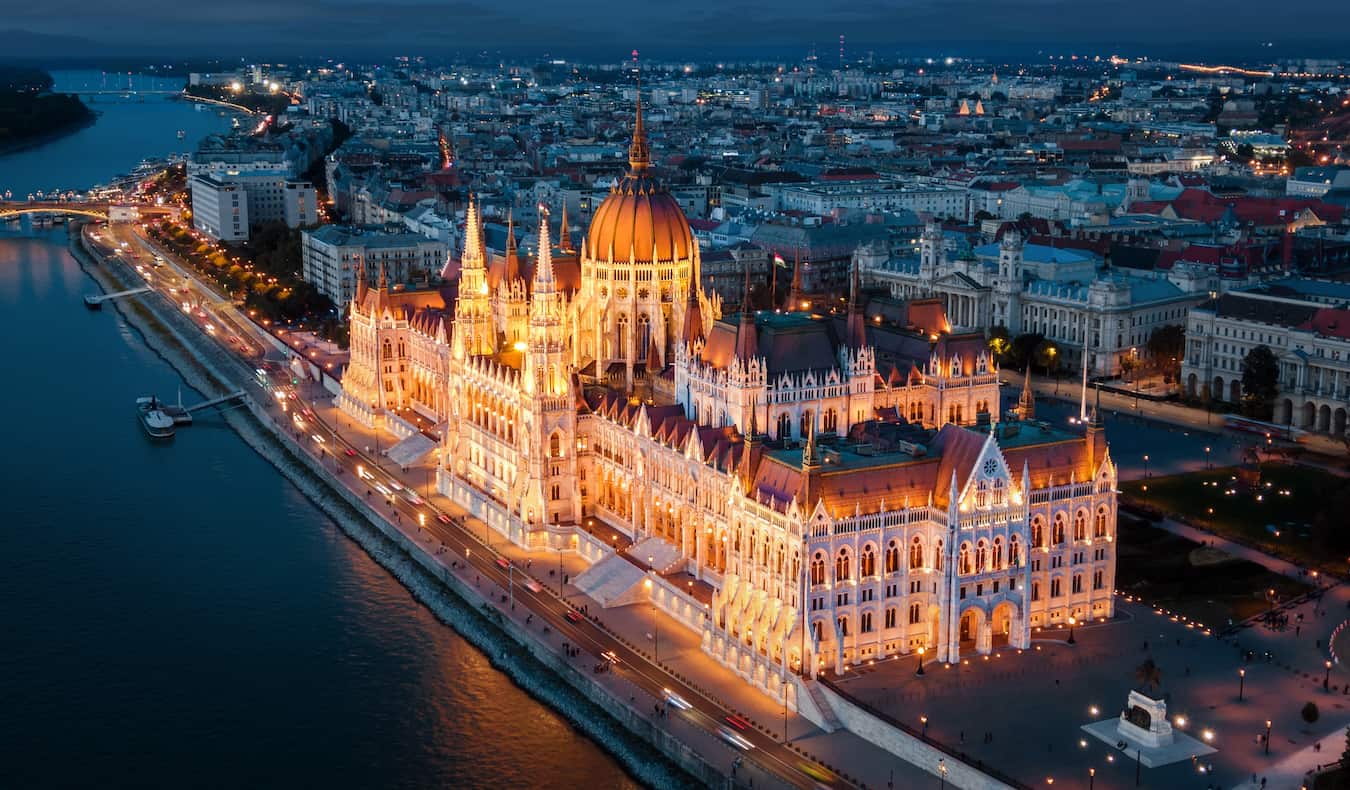
Visit Parliament This massive building on the Danube is where the Hungarian legislature meets. The literal translation means “House of the Nation” or “House of the Country.” After the three cities that make up modern Budapest (Buda, Pest, and Óbuda) united in 1873, it was decided that a new parliament building was needed. This massive structure took 19 years to build, with construction finishing in 1904. Not only is it the tallest structure in Budapest but it’s actually the largest in the entire country.
These days, you can tour the Gothic Revival edifice and watch the changing of the guard. I recommend purchasing your tickets in advance, as the lines to buy tickets on-site can be incredibly long.
Kossuth Lajos tér 1-3, +36 1 441 4415, parlament.hu. Open daily 8am-4pm (8am-6pm from April-Oct). Admission is 12,000 HUF for non-EU residents and 6,000 HUF for EU residents.
Stroll Along the Danube A walk along the river is a nice activity after visiting Parliament. Head south and check out the promenade and its many green spaces and sculptures, including the sobering “Shoes on the Danube Bank,” a memorial honoring the Jews who were executed here during World War II. During World War II, fascist militia rounded up 3,500 citizens (800 of which were Jewish) and ordered them to take off their shoes before they were executed and thrown in the Danube. It’s a sobering, but necessary, stop.
Walk Across the Chain Bridge Continuing south, you’ll reach the Széchenyi Chain Bridge connecting Pest with Buda. This wrought-iron and stone suspension bridge is 375 meters (1,230 feet) in length. It opened in 1849, though it had to be rebuilt after World War II. At the Pest (east) end of the Chain Bridge is the Gresham Palace, a beautiful Art Nouveau building. It was once a luxurious office/apartment building and is now a luxurious hotel. Be sure to bring your camera as you can snap some nice pictures here.
Eat at the Great Market Hall Built in 1897, this is the oldest and largest indoor market in the country, located a bit southwest of the Jewish Quarter. There’s mostly produce, meats, baked goods, and candy on the ground floor, while the upper floor is home to restaurants and souvenir shops. It has a lot of traditional places to eat, so be sure to walk around and explore first. Sure, it’s touristy (it’s the central market, after all!), but I still found the food tasty.
Vámház körút 1–3, budapestmarkethall.com/great-market-hall-budapest. Open Monday 6am-5pm, Tuesday-Friday 6am-6pm, and Saturday 6am-3pm. Admission is free but tours are available (7,895 HUF for a guided tour or 25,650 HUF for a tour with samples of local specialties, such as Hungarian cheese scones, salami, truffle cream, and more). Market tasting tours are Saturdays at 11am.
Gaze at St. Stephen’s Basilica This is the largest church in Hungary and can’t be missed. It is beautiful inside and out, with ornate architecture, gorgeous artwork, sparkling marble, and a tall dome. No wonder it took 50 years to build! If you go inside, check out all the little chapels and St. Stephen’s mummified hand. If you’re there on a Monday, you can go to an organ concert.
Szent István tér 1, +36 1 311 0839, bazilika.biz. Open daily 9am-5:45pm (1pm-5:45pm on Sundays). Entry to the basilica is 2,300 HUF or 6,000 HUF for a ticket that includes the panoramic tower/observation deck.
Check out Dohány Street Synagogue Also known as the Great Synagogue, this is the second-largest synagogue in the world. It was built in 1854 and boasts some 3,000 seats. Make sure you go on the guided tour (included with admission) to get more perspective on the building. The guides are super knowledgeable, and you can learn about the construction of the synagogue, Jewish life during World War II, and a lot more. Also check out Wallenberg Memorial Park (right behind the synagogue) and the nearby Hungarian Jewish Museum.
Dohány u. 2, +36 1 413 5584, jewishtourhungary.com/en. Hours vary from month to month; call ahead or check the website for details. Admission is 10,800 HUF.
See the Hungarian State Opera House You can go inside this Neo-Renaissance masterpiece or just view it from outside. I recommend the latter usually as the tour doesn’t cover much of the architecture and it’s usually cheaper to just see a performance than take a tour (if you’re a die-hard opera fan than the tour might be worth it). Check the website before you visit to see what’s playing as I do recommend seeing a performance if you can. They are really impressive and usually quite affordable!
Andrássy u. 22, 1061, +36 1-81-47-100, opera.hu. Tours cost around 9,000 HUF and last one hour. Performances vary but can cost as little as 2,150 HUF.
Party at the Ruin Bars Ruin bars are all the rage in Budapest and have been around since the 2001 founding of Szimpla Kert, the mecca of all ruin bars. They are in Budapest’s District VII neighborhood (the old Jewish Quarter) in the ruins of abandoned buildings, stores, or lots. This neighborhood was left to decay after World War II, so it was a perfect place to develop an underground bar scene. (Not so underground anymore, though!)
From the outside, these bars look like normal homes. They don’t have large signs pointing the way, you don’t hear any loud noise, and there’s no line of people waiting to get in. My two favorite bars are:
- Szimpla Kert – This is the original and most famous ruin bar that started this trend. Once an abandoned factory, it has a large open courtyard, a top floor with eclectic furniture, cocktail bars, and even an old, stripped-down Trabant (Communist-era car) you can have a drink in. It’s one of the coolest bars in the world. Kazinczy u. 14, szimpla.hu. Open Monday-Friday 3pm-4am, Saturdays 12pm-4am, and Sundays 9am-4am.
- Instant – Occupying an entire apartment building, Instant is the biggest ruin bar, with more than 20 rooms. They’ve knocked down many of the walls to connect the apartments and make space for the DJs and dancing. It has more of a club vibe. Akácfa u. 49-51, +36 70 638 5040, instant-fogas.com. Open daily 6pm-6am.
For a longer list of the best ruin bars in Budapest, check out my in-depth guide .
Budapest Itinerary: Day 3
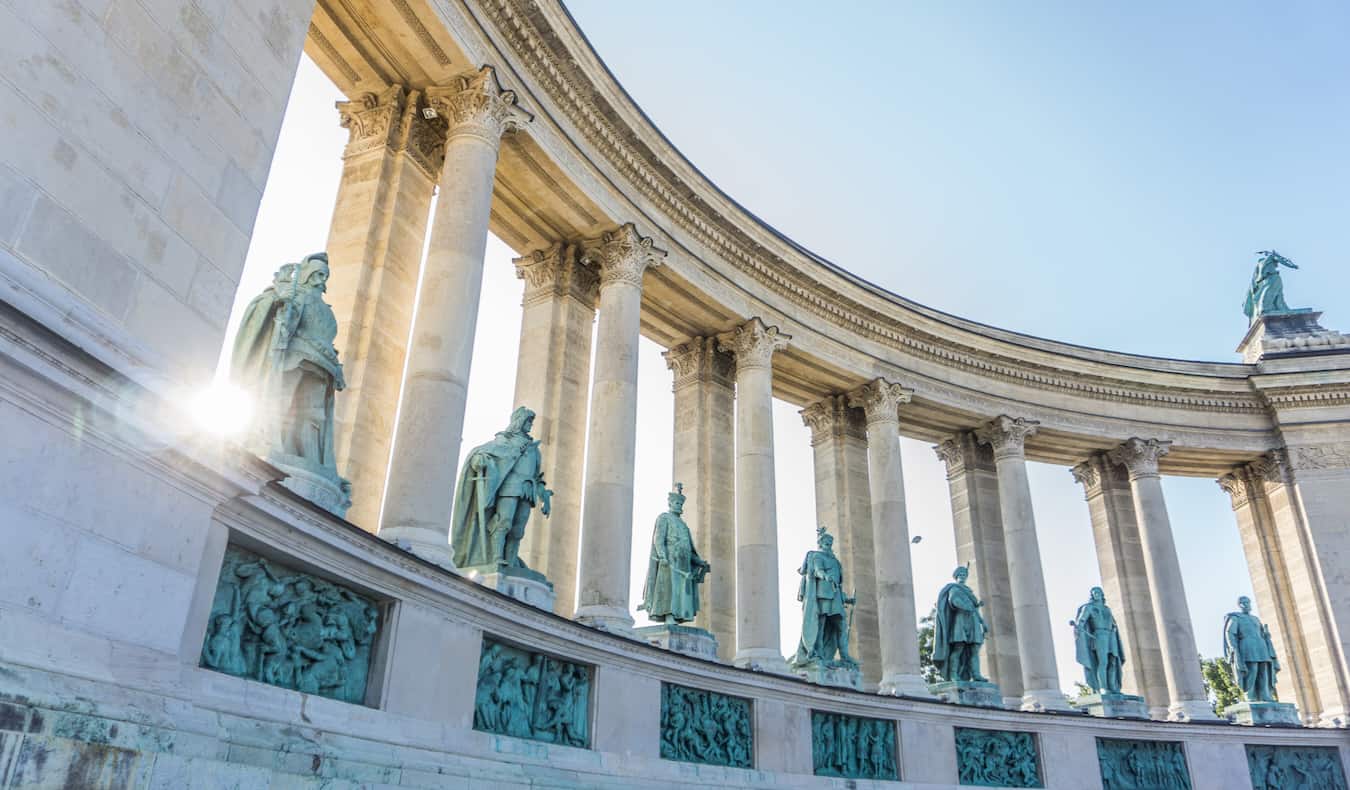
There are several monuments on the hill that are worth stopping to appreciate:
- Liberty Statue – This bronze statue was erected in 1947 to celebrate the liberating Soviet forces who defeated the Nazis. It’s 14 meters (49 feet) tall and sits on a 26-meter tall (85 feet) pedestal. When Hungary adopted democracy in 1989, the transcription and meaning of the statue was changed to reflect this.
- Statue of Queen Elisabeth – This statue is dedicated to the Empress of Austria and Queen of Hungary, Elisabeth, who married Franz Joseph I, Emperor of Austria.
- Statue of King Saint Stephen – This statue is dedicated to Hungary’s first king, who reigned from 1000 to 1038 CE. He helped establish the country as a Christian nation and provided a period of relative peace and stability.
- Szent Gellért Monument – This monument is dedicated to Saint Gerard, who was the first Bishop of Csanád in what was the Kingdom of Hungary in 1030 CE. He kicked off the conversion of Hungary to Christianity, and a monument was constructed in his honor in 1904.
See the Cave Church Aside from these picturesque statues and the epic view, Gellért Hill is home to the most unusual church in the city. In the 1920s, monks built this church in a cave that had been previously used by a hermit monk. It was used as a hospital during World War II, but then the Communist government covered the entrance in concrete after the war and executed the head monk. There’s a lot more to the history of this church than I have room to cover here, so make sure to use the audio guide. It’s very insightful!
Sziklatemplom út Gellért Hill. Open Monday-Saturday from 9:30am-7:30pm. Admission is 1,000 HUF.
Visit the House of Terror Museum In this frightening museum, you learn what life was like for Hungarians under the fascist and Communist regimes of the 1900s. The building was used by the ÁVH (Secret Police) and Arrow Cross Party (the Hungarian Nazi party). The permanent exhibits are spread over four floors and house all sorts of old propaganda, weapons, and informative multimedia displays. Over 700,000 Hungarians were killed or imprisoned by the Soviets, and the museum does a good job of illustrating just how dreadful their daily lives were.
Andrássy út 60, +36 1-374 26 00, terrorhaza.hu/en. Open Tuesday-Sunday from 10am-6pm. Admission is 4,000 HUF.
Tour Heroes’ Square At the end of Andrássy Avenue is the largest square in Hungary. Its centerpiece is the Millennial Memorial and the statues of Hungarian kings and other historical figures, including the seven chiefs who led the Magyars (modern-day Hungarians) in the 9th century. The monument was built in 1896 to celebrate Hungary’s 1,000th anniversary. At this time, Hungary was part of the Austro-Hungarian Empire ruled by the Hapsburgs, and space was left for statues of future Hapsburg leaders.
The square is at the entrance to City Park, where you can visit the zoo and the Széchenyi Baths (see below) if there’s time. The Museum of Fine Arts and the Palace of Art are located nearby as well, making for interesting stops if you’re interested in art.
Soak at the Baths Hungarians love their thermal spa baths. Budapest has more than 100 mineral hot springs that have been put to good use since Roman times. With 18 pools, the Széchenyi Baths in City Park are the largest and most famous in Europe. The stunning yellow buildings were built in 1913, and it’s a popular spot for locals and tourists alike. If you’re only going to one thermal spa, this is the one!
Állatkerti krt. 9-11, +36-20 435 0051, szechenyifurdo.hu. Open from 7am-7pm and weekends from 9am-8pm. Admission starts at 10,500 HUF on weekdays, 12,000 HUF on weekends, and 13,000 HUF on holidays.
These are lots of other baths around town too. Some worth checking out include:
- Veli Bej Bath – This is another Turkish-style bath, with a luxurious feel. Constructed in 1575, it’s one of the oldest (and arguably most beautiful) in town. Admission starts at 4,500 HUF.
- Dandár Bath – This is a no-frills bath that a lot of locals go to. Opened in 1930, it has an Art Deco style and was recently refurbished. You can also enjoy massages, a diving pool, and a sauna. Admission starts at 2,300 HUF for a two-hour ticket.
- Gellért Baths – Located in Hotel Gellért, this complex was built in the early 1900s. There are several indoor and outdoor pools that are great for relaxing and, some say, curing illnesses. The mosaic floors and stained glass windows are beautiful and make for quite the bathing experience! Admission starts at 10,500 HUF.
- Rudas Spa – At the foot of Gellért Hill, this spa’s interior dates back to 1550 and Ottoman rule. There are six therapy pools here as well as a swimming pool, with the water said to cure all sorts of illnesses. Admission starts at 9,300 HUF for weekdays,12,200 HUF on the weekends, and 13,000 HUF on holidays.
When visiting the baths, don’t forget your bathing suit and flip-flops. You can typically rent towels and lockers.
Other Things to See and Do in Budapest
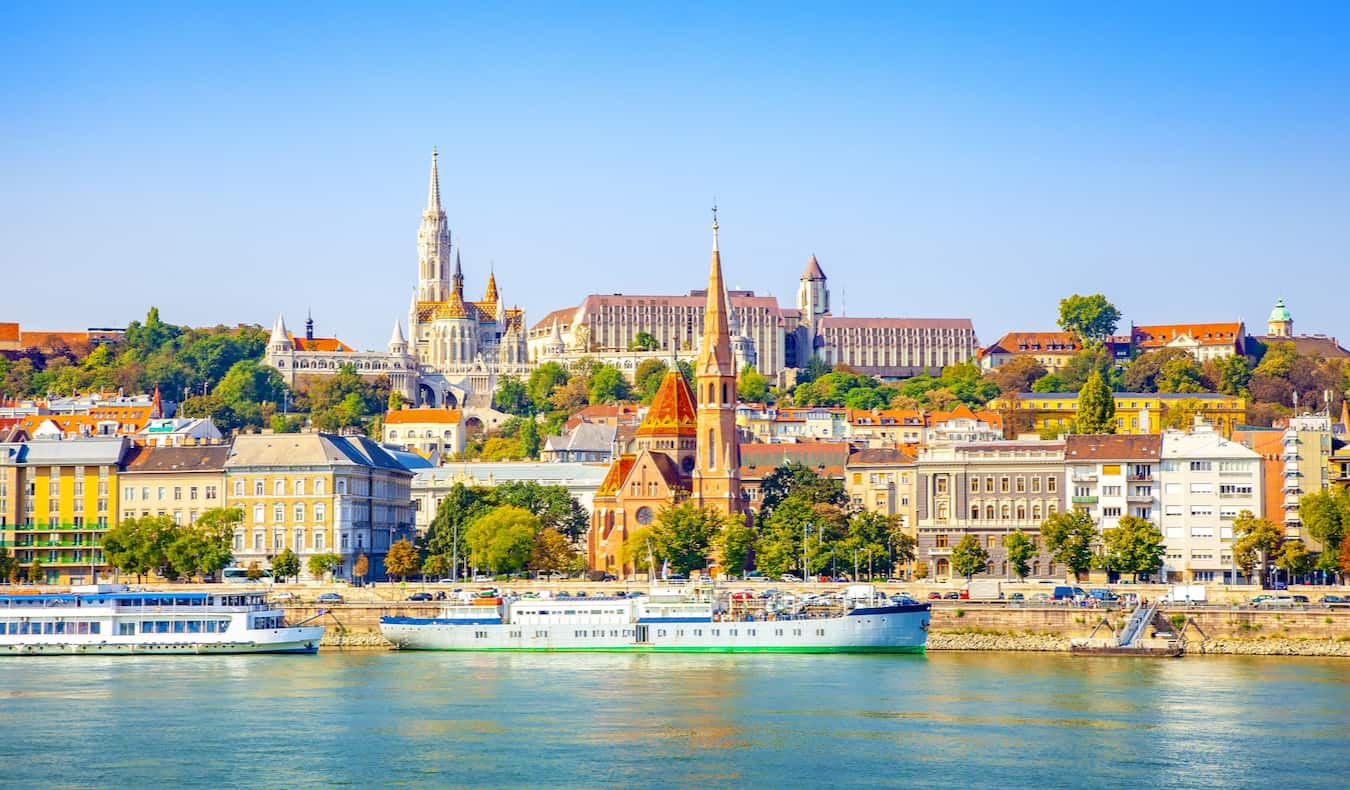
Visit the House of Houdini Harry Houdini was one of the most famous and well-known illusionists in the world. He was known for his elaborate escape tricks, and he was actually born in Hungary. This is the only museum in Europe dedicated to the Budapest native. It’s home to quite a few Houdini props and pieces of memorabilia, as well as live magic shows.
11 Dísz Square, +36 1-951-8066, houseofhoudinibudapest.com. Open daily 10am-7pm. Admission is 4,735 HUF per person.
Take a Tour Beyond free walking tours, Budapest has tons of other great walking, food, and historical tours. They aren’t free, but you definitely get your money’s worth! Here are a few worth checking out:
- Taste Hungary Food Tour
- Pub Crawl Budapest
- Buda Castle Vampires & Myths Evening Walking Tour
- Jewish Budapest Walking Tour
Admire Budapest’s Street Art In recent years, Budapest has become known for its street art scene. Budapest Flow, in addition to offering some cool alternative tours, has created a map of all the best street art spots so you can create your own walking tour or make a small detour to see different things in each area as you pass.
Go Caving Located on the Buda side of Budapest are around 200 underground caves. These hydrothermal caves were created by the thermal springs that supply the thermal baths in the city. Caving Under Budapest runs three types of tours, including one where you can climb up walls and squeeze through incredibly narrow spaces within the sprawling 30-kilometer (19-mile) cave system beneath the city. A three-hour guided adventure caving tour costs around 26,900 HUF.
Take a River Cruise The Danube is the second-longest river in Europe (after the Volga). If you want to tour the city by water, lots of hostels organize weekly Danube boat parties (the Budapest Party Hostel group is famous for theirs). Other boat tours are available with or without dinner and drink options as well. It’s a fun way to see the city and enjoy a night out. For a 90-minute river cruise (with an audio guide and unlimited prosecco), expect to pay around 9,780 HUF.
Where to Stay in Budapest
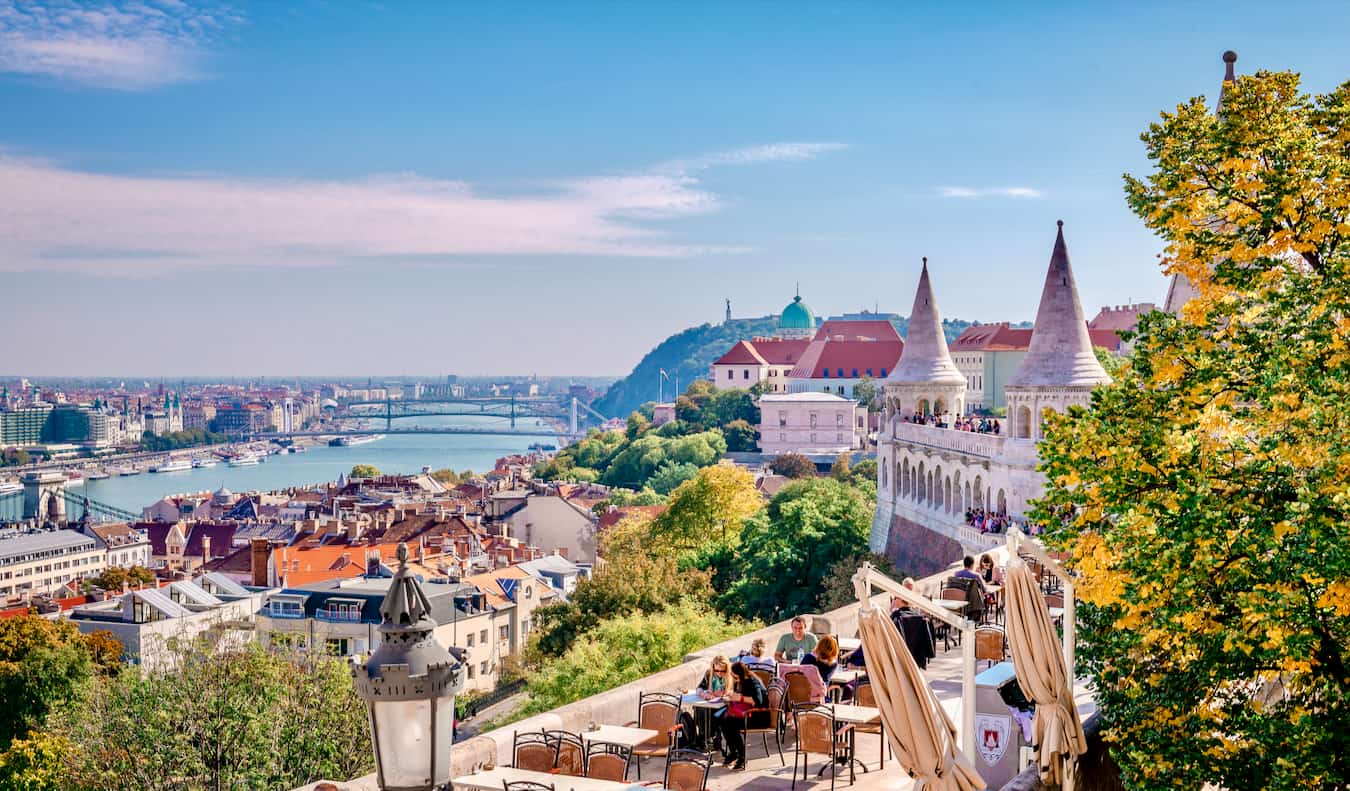
- BUDGET: Onefam Budapest – This cool hostel boasts a fully equipped kitchen, laid-back common areas, and Netflix if you’re in need of more tame activities. There are free weekly dinners and organized activities throughout the day so it’s always easy to meet people.
- BUDGET: Carpe Noctem Original – This is the original party hostel in Budapest. It’s super social and they organize trips out on the town every night. It’s a really small hostel, and it almost feels like you’re staying at a friend’s place.
- MIDRANGE: Three Corners Downtown – This stylish four-star hotel is right downtown, making it a great base to explore from (St. Stephen’s Basilica and the Hungarian State Opera are both nearby). There’s a sauna and fitness center on-site and the breakfast is exceptional.
- LUXURY: Párisi Udvar Hotel – This lavish, ornate five-star property is arguably the nicest hotel in the entire city. The interior feels like you’re in a palace, not a hotel, and the rooms are elegant and spacious. This is the pinnacle of luxury in the city.
Budapest is a fun city that really does have something for everyone. Don’t let the grim façade fool you. Budapest is vibrant and modern and packed with awesome things to see and do, whether you’re a history buff or night owl looking to party (or both!). It’s one of the best capitals to visit in all of Europe so you better make sure you add this quirky, historic destination to your bucket list!
Get Your In-Depth Budget Guide to Europe!

My detailed 200+ page guidebook is made for budget travelers like you! It cuts out the fluff found in other guides and gets straight to the practical information you need to travel while in Europe. It has suggested itineraries, budgets, ways to save money, on and off the beaten path things to see and do, non-touristy restaurants, markets, bars, safety tips, and much more! Click here to learn more and get your copy today.
Book Your Trip to Budapest: Logistical Tips and Tricks
Book Your Flight Use Skyscanner to find a cheap flight. They are my favorite search engine because they search websites and airlines around the globe, so you always know no stone is left unturned.
Book Your Accommodation You can book your hostel with Hostelworld as they have the biggest inventory and best deals. If you want to stay somewhere other than a hostel, use Booking.com as they consistently return the cheapest rates for guesthouses and cheap hotels. My top places to stay in the city are:
- Carpe Noctem
If you’re looking for more places to stay, here is a complete list of my favorite hostels in Budapest !
Don’t Forget Travel Insurance Travel insurance protects you against illness, injury, theft, and cancellations. It’s comprehensive protection in case anything goes wrong. I never go on a trip without it as I’ve had to use it many times in the past. My favorite companies that offer the best service and value are:
- SafetyWing (best for everyone)
- Insure My Trip (for those over 70)
- Medjet (for additional evacuation coverage)
Looking for the Best Companies to Save Money With? Check out my resource page for the best companies to use when you travel. I list all the ones I use to save money when I’m on the road. They save you money when you travel too.
Want More Information on Budapest? Be sure to visit our robust destination guide on Budapest for even more planning tips!
Got a comment on this article? Join the conversation on Facebook , Instagram , or Twitter and share your thoughts!
Disclosure: Please note that some of the links above may be affiliate links, and at no additional cost to you, I earn a commission if you make a purchase. I recommend only products and companies I use and the income goes to keeping the site community supported and ad free.
Related Posts
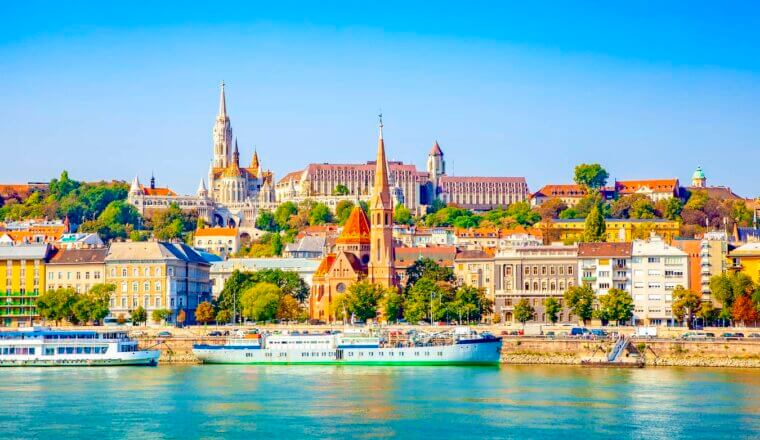
Get my best stuff sent straight to you!
Pin it on pinterest.
Best Time to Visit
Weather & Climate
Budapest Airport Guide
Public Transportation
Neighborhoods to Know
72-Hour Itinerary
Day Trips From Budapest
Top Things to Do
Free Things to Do
Best Museums
Thermal Baths
Shopping in Budapest
Hungarian Dishes to Try
Best Restaurants in Budapest
Ruin Bars to Visit
Your Trip to Budapest: The Complete Guide
:max_bytes(150000):strip_icc():format(webp)/RussianKerry2-56a39e8d5f9b58b7d0d2ca8c.jpg)
Jennifer Walker is a freelance writer specializing in art, travel, and culture. Jennifer's work has appeared in many publications, including Matador Network and CNN Travel.
Budapest is one of Europe's most photogenic capitals. Divided in two by the Danube River, many of the city's most famous sites cluster around the river. But no matter where you walk, especially if you remember to look up, you'll always find some unique detail that captures your imagination. Once your camera has run out of battery or you're done with sightseeing (whichever happens first), you can take a dip in one of the stunning thermal water baths or grab a drink at an iconic ruin bar . Whether you're into architecture with a touch of drama, old-world cafes, thriving nightlife, grand thermal spas, or even communist history, Budapest has something for you. You'll find history etched into its bullet-scarred walls and life buzzing around its boulevards and promenades downtown.
Here’s a complete guide about when to visit, where to stay, what to do, how you can get around, and more on your visit to the Hungarian capital.
Planning Your Trip to Budapest
- Best Time to Visit : The shoulder seasons like fall and spring are the best time to visit Budapest. The temperatures are the most pleasant and it’s not too crowded this time of year.
- Language: Hungarian
- Currency: Hungarian Forint
- Getting Around: Budapest has an excellent public transportation system, which makes it very easy to get around. It’s also a very walkable city, so if you are centrally located you can walk everywhere. Otherwise, you can take the metro, tram, bus, or even the local public transport boat, which runs along the Danube in the summer.
- Travel Tip: Make sure you validate your single tickets correctly when you get on the tram, bus, or metro. Plainclothes ticket inspectors may fine you if you’re caught with an unvalidated ticket.
Things to Do
First-time visitors should head up to Castle Hill for fantastic views over the river and the charming historic streets winding around Fisherman’s Bastion and the Royal Palace of Buda Castle. Once you’re done with the historic Buda side, cross the Chain Bridge on foot to downtown Pest for St. Stephen’s Basilica and the Hungarian Parliament.
Art lovers and history buffs have no shortage of excellent museums to explore. Be sure to make a stop at Memento Park—a large park where communist statues go to die. If you enjoy nature, head up to the Buda Hills for hiking, or go for a ride on the Children's Railway. The only capital where caves run below the city , Budapest offers many caverns to explore as well, including Pálvölgyi and Szemlőhegy Caves. Some things every visitor to the city should do are:
- Take a boat up the Danube. See the city from the river on a boat tour or take the local public transport boat for a couple of dollars.
- Bar hop in the Jewish District. Explore Budapest’s most famous ruin bars by night. Grab a drink at Szimpla, the first ruin bar of the city, and head over to nearby Instant-Fogas.
- Visit a thermal bath . Boasting more thermal baths than any other capital city , Budapest has rightfully earned its title as the City of Spas. There are more than 80 geothermal springs and 10 thermal baths here, so you have plenty to choose from. If you want grand architecture, head to the Széchenyi or Gellért Thermal Baths. For a spot of history, go for a dip in one of the historic 16th century Turkish baths like the Rudas Baths.
Get more information about activities in Budapest with our guides to the city's best museums and top things to do in Budapest .
What to Eat and Drink
Hungarian food is rich and hearty. Meat, especially pork, dominates the cuisine, which tends to be spicier than its Central European counterparts. Most typically Hungarian dishes like goulash, catfish soup, or chicken paprikás bear a deep red color thanks to their generous paprika content. Other specialties you may want to try are street food like lángos, a deep-fried savory dough topped with cheese and sour cream, or chimney cake, a grilled brioche-like cake rolled in cinnamon, cocoa powder, or ground nuts. If you have a sweet tooth, try some of the amazing cakes in one of the historic cafes or confectionaries. The chocolate-caramel Dobos cake or the nutty Eszterházy cake won’t disappoint.
When it comes to drinking, Hungary has got you covered. Hungarian wine is gaining a solid reputation, and it’s incredibly diverse. You have the famous sweet dessert wines from the Tokaj region, the dry, crisp whites from Badacsony, and the rich reds from Eger or Villány. The beer scene is growing, so if you want to sample some Hungarian craft beers, an excellent place to try them is Élesztő, a ruin bar with 20 local brews on tap. If you’re feeling adventurous, maybe you can try some pálinka, a potent fruit brandy, or Unicum, a bitter herbal liqueur.
Budapest has six Michelin-starred restaurants and plenty other award-winning dining establishments. You can still find more traditional restaurants scattered around town, but street food, craft burgers, and chic bistros are popping up more and more in Budapest’s Inner City and Jewish Quarter.
For more culinary inspiration, see our guide to the top restaurants in Budapest and Hungarian dishes you should try .
Where to Stay
Castle District: The Castle District puts you among some of the city’s most famous sites and charming bistros. If you like to sleep on quiet streets, this is a perfect choice as there are no clubs and very few late-night bars up here.
Inner City: You’ll find the best hotels in the Inner City in Pest’s V District. Not only will you be around the top shops and restaurants, but you can find the best hotels like the Four Seasons, the Aria Hotel, the Intercontinental, the Kempinski, and more in this district. You are also only minutes away from the main transport hubs, like Deák Ferenc tér, where you even have a direct bus to the airport.
Jewish District: If you want to be at the heart of the action, and don't mind having late nights, then you may want to stay in the Jewish District. You’ll find many hostels here—most of them party hostels—so it’s a part of town buzzing with youthful energy. Some of the hostels even have their own ruin bar.
Palace District: The Palace District is close enough to downtown to be within walking distance from the major sites, but is also a much quieter neighborhood than the neighboring Jewish District.
For more about accommodations, see our guide to the city's best hotels.
Getting There
Budapest’s Ferenc Liszt International Airport (BUD) offers direct flights to and from New York, Philadelphia, and Chicago via major airlines like LOT Polish Airlines and American Airlines.
From the airport, it's a 30 to 40 minute drive to downtown. You can rent a car, use a rideshare like Bolt, hail a taxi, or take the 200E bus directly to Deák Ferenc Tér in the center of the city, or take the 100E bus which connects you to the metro line 3.
Money-Saving Tips
- Come to Budapest during the off-season. Since hotel rates can be very high in the height of summer or around Christmas, you can save a lot by visiting at a quieter time like April or October.
- If you’re planning to use public transport a lot and hit many of the museums, you may want to invest in a Budapest Card. This card gives you free public transport access, discounts or free entry to some of the museums and even the entrance to the Lukács Baths.
- Go for the lunch menu. Most restaurants, even the high-end ones, will offer a good value lunch menu. You can also eat out pretty cheaply by opting for street food or picking up a picnic from one of the local market halls and heading over to the Danube Banks or one of the many parks in the city.
- Take one of the free walking tours in the city center to get your bearings and learn a little about Budapest’s history.
Budapest Festival & Tourism Centre . "The Caves of Budapest Open to the Public."
Budapest Festival & Tourism Centre . "Baths."
MICHELIN Guide . "Budapest Restaurants."
The Top 9 Neighborhoods in Budapest
Getting Around Budapest: Guide to Public Transportation
The Best 18 Things to Do in Budapest
The Best Time to Visit Budapest
72 Hours in Budapest: The Ultimate Itinerary
10 Reasons to Visit Budapest
Vienna Guide: Planning Your Trip
Paris Guide: Planning Your Trip
The Top 10 Restaurants in Budapest
January in Budapest: Weather and Event Guide
Regensburg: Planning Your Trip
Prague: Planning Your Trip
Washington, D.C. Guide: Planning Your Trip
Baltimore Guide: Planning Your Trip
Your Trip to Shanghai: The Complete Guide
Your Trip to Berlin: The Complete Guide

Travel Guide for Budapest: A Cheat Sheet for First-Timers
Budapest is a true European gem with a casual, hip vibe.
Despite a turbulent past, reflected in the city’s culture, food, politics, and architecture, Budapest shines through the grit and will dazzle you with its stunning sights and squares near and along the banks of the Danube River and up along its hilly slopes.
It’s a must-see city if you’re traveling to Eastern Europe. So, in this travel guide for Budapest, you’ll find ideas about what to do in Budapest, get helpful Budapest tips, and advice on where to stay in Budapest especially if it’s your first time in the city.
Ready to visit Budapest? Let’s go!
As a Budapest visitor, you’ll see evidence of Budapest’s past in the form of its architecture, culture, monuments, religious and political buildings, and even the city’s overall layout.
Budapest was formed officially in 1873 when the 3 adjacent cities of Buda, Pest, and Obuda joined into a single capital city. Today when you visit Budapest, you’ll see the Danube River. Pest was on the east side of the river where the Parliament Building sits. Buda and Obuda were on the west side, where Fisherman’s Bastion and Castle Hill are.
The Chain Bridge links the 2 sides, having served as a connecting point since the mid-1800s.
Where is Budapest?
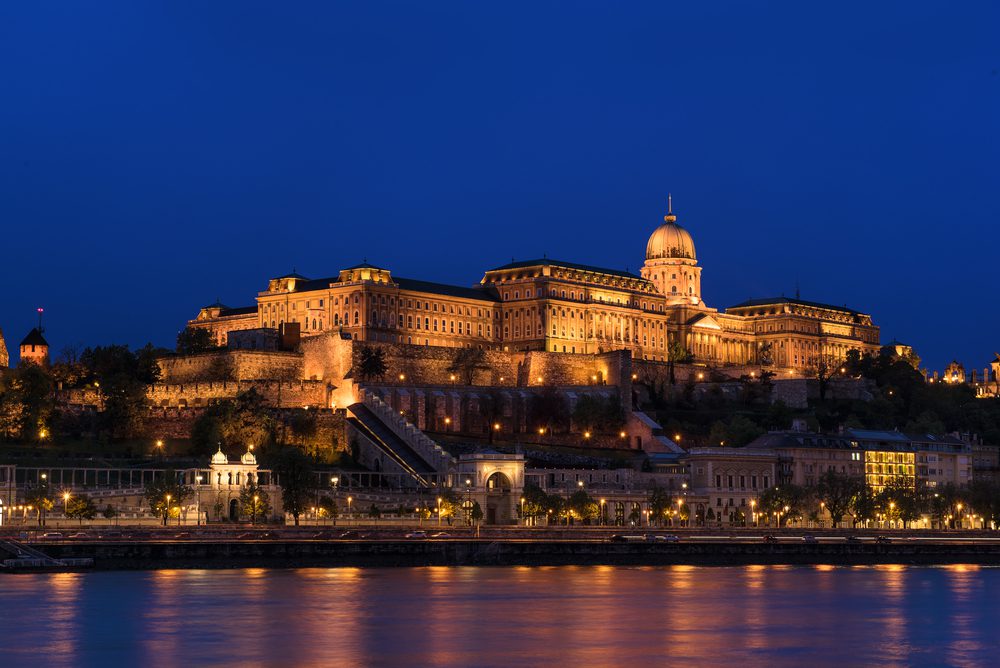
Budapest is the capital of Hungary. The country is bordered by Slovakia, Austria, Slovenia, Croatia, Serbia, Romania, and Ukraine. Budapest is well connected by train to many other European cities.
Budapest to Vienna is only 2 1/2 hours on the high-speed train. Bratislava from Budapest is about the same if you take the fastest trains. Prague is 6 1/2 hours away by train.
This is why a common trip to Prague, Vienna, and Budapest goes in that exact order. Fly into Prague and depart from Budapest with time in Vienna in between. The train trips between Prague and Vienna and then Vienna to Budapest are more than reasonable. It’s exactly what I did with my hubby on my first trip to Budapest.
What to Do in Budapest
Spending 2-3 days in Budapest will give you enough time to see and do first-timer musts. It’s likely, though, after spending time in this still (somewhat) off-the-beaten-path city, you’ll be thinking about your next visit to Budapest. (I was so happy to return!)
Start by Riding the #2 Tram.
This tram goes along the Danube on the Pest side of the river and gives a sense of how the former cities of Buda and Pest are situated. Tickets are easily purchased in a metro station. The ride will give you a glimpse of Budapest’s major sights, too, including the Buda hills where Castle Hill is, the Parliament building, and the Chain Bridge.
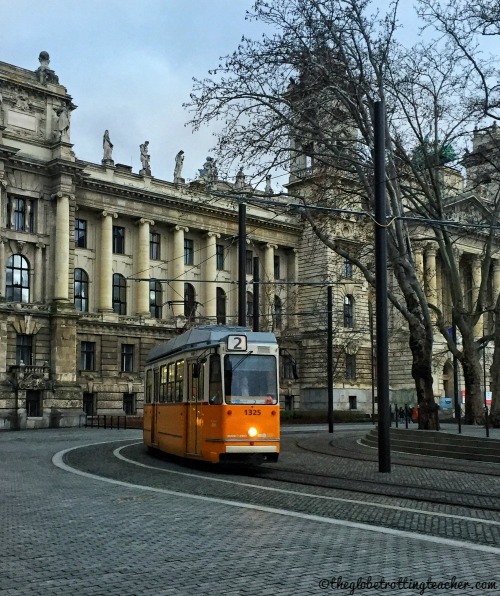
If you prefer a guided tour to orient yourself, check out Budapest Free Walking Tours . They offer daily tours at 10:30 a.m. and 4:30 p.m. that depart from Elisabeth Square, not far from the Budapest Eye Ferris wheel. This Budapest Tour is meant to help you understand the basics of Budapest.
You can reserve a spot on their website and no obligation to stay for the entire tour. Just remember, that if you’re happy with your guide, make sure to tip them what you can at the end of the tour.
Don’t Miss the Views on Spectacular Castle Hill.
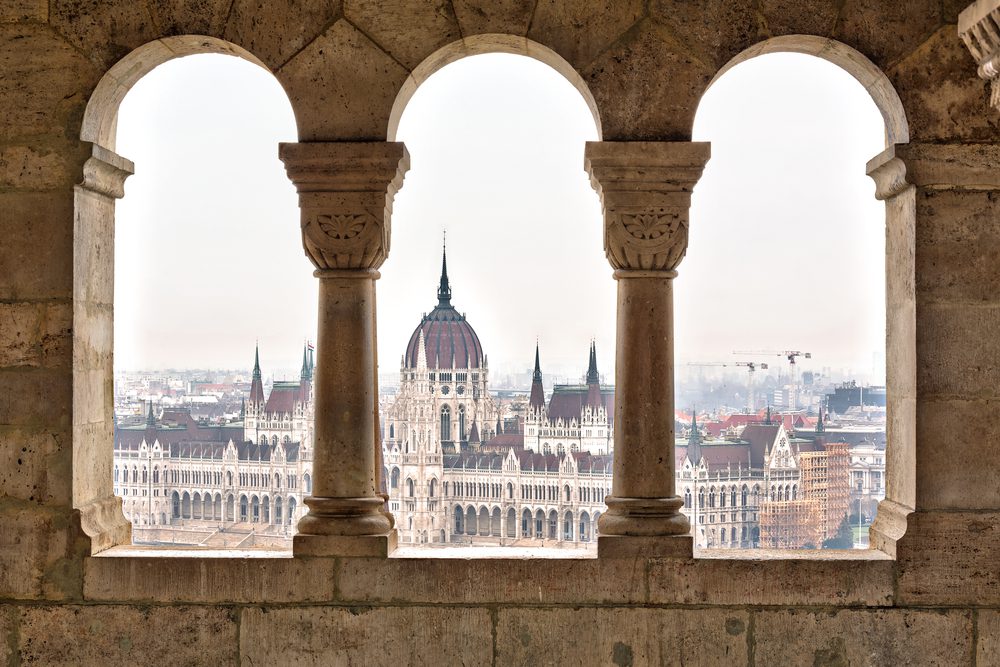
After this introduction to the city, walk across the Chain Bridge. From there walk or take the funicular up to Castle Hill . The funicular is on the Buda side and is undoubtedly easier than the walk. However, the walk up is not overly difficult and scenic along the way.
Once at the top, though, you’ll be rewarded with sweeping panoramic views of the city and the Danube. The views are absolutely breathtaking!
Do Some Castle Hill Sightseeing.
On Castle Hill, spend the morning or afternoon visiting the Royal Palace, Mathias Church, and Fisherman’s Bastion. You can walk around independently or go on a Buda Castle Walking Tour with a guide for more context.
Fisherman’s Bastion is part of Buda Castle and history says that fishermen back in the Middle Ages lived just below the castle walls and served as a line of defense protecting the castle. Today, the terraces along the walls that stretch opposite the Danube provide the lookouts over the river and city below.
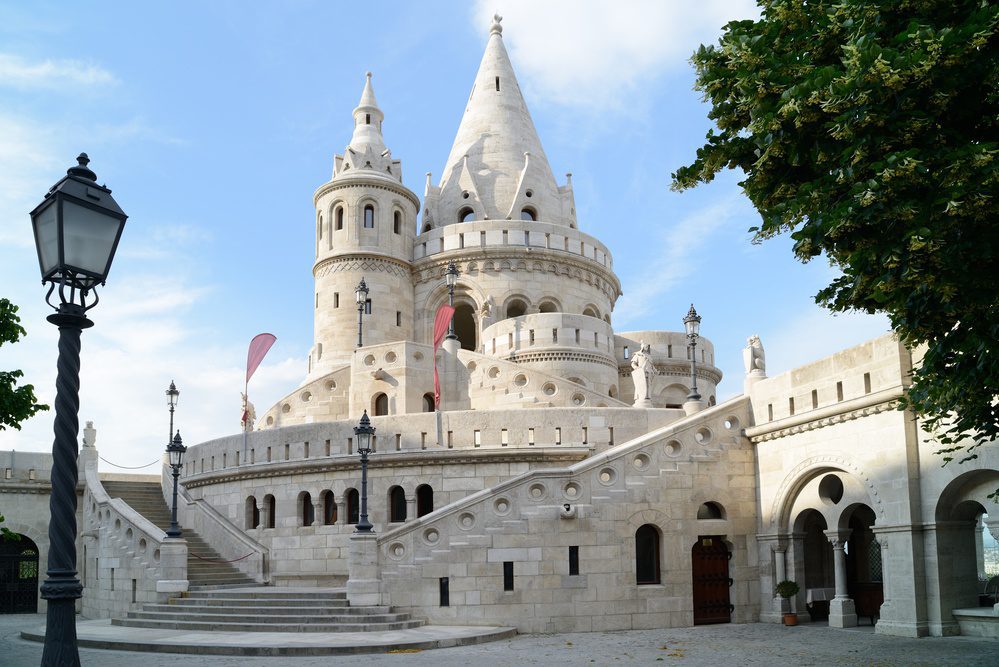
Matthias Church is a Catholic church built in the latter part of the 14th century in a Gothic style, replacing an even earlier Romanesque-style church dating back to the 11th century.
Also on Castle Hill is Buda Castle, a Baroque palace built in the 1700s.
The original structure dates back to the 1200s and was the residence of the Hungarian Kings throughout the years. Today, the palace houses the National Gallery and the Budapest History Museum, both of which have traditional daily hours. However, the Castle’s courtyards and surrounding grounds are open 24/7.
If you arrive on the hour between 8:30 and 5:00 p.m., you’ll also see the Hungarian Changing of the Guard at the castle. Or you just might want to head underground to explore the caves below Buda Castle which served as many things over the centuries including a medieval prison, wine cellars, and bomb shelters.
If you’re looking for some non-touristy things to do in Budapest, check out this Hospital in the Rock Tour . This is a guided tour of an underground WW2 bunker that was used as a top-secret military hospital!
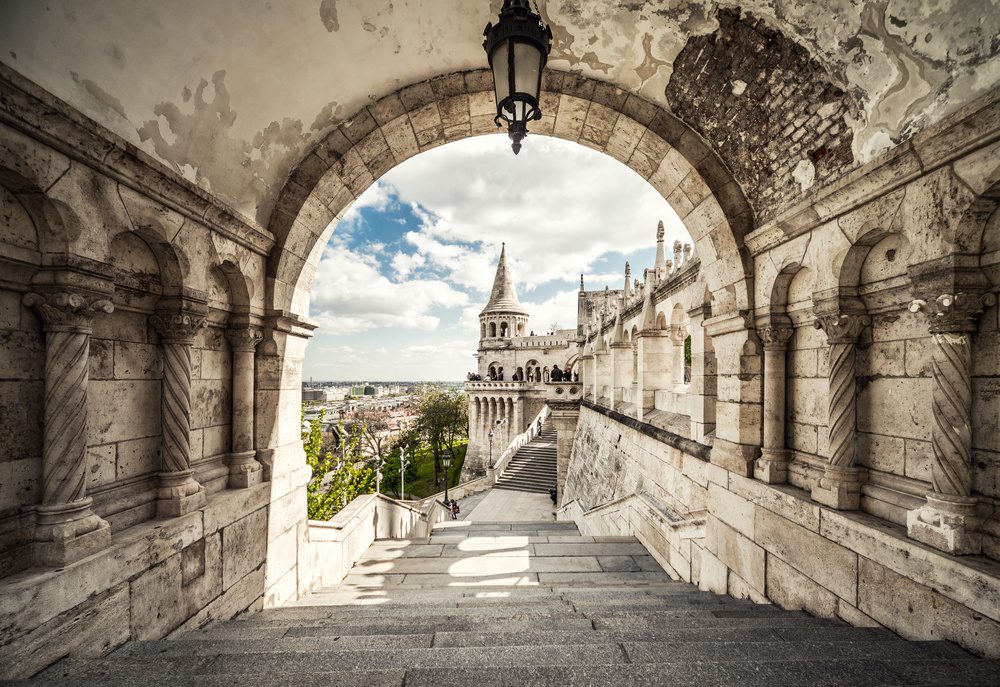
Tour Budapest’s Grand Parliament Building .
This ever-present architectural gem on the shores of the Danube is another of the many things to see in Budapest. You can opt to see it just from the outside but I recommend taking a guided tour of the inside. (You cannot get in without being part of a tour.)
The Parliament tour and its setup logistics take about 60-90 minutes. You can buy tickets online here and combine your visit with a city tour or get them through the official website . The website is in Hungarian but there is a way to switch the language to English at the top. Look for a tiny “HU” in the menu bar. this is where you can toggle between languages.
A limited number of same-day tickets are also sold at the Visitor’s Center below the Parliament building itself. Depending on the time of year you visit, this could be a long line and you’re at the mercy of whatever remaining tours that day have space.
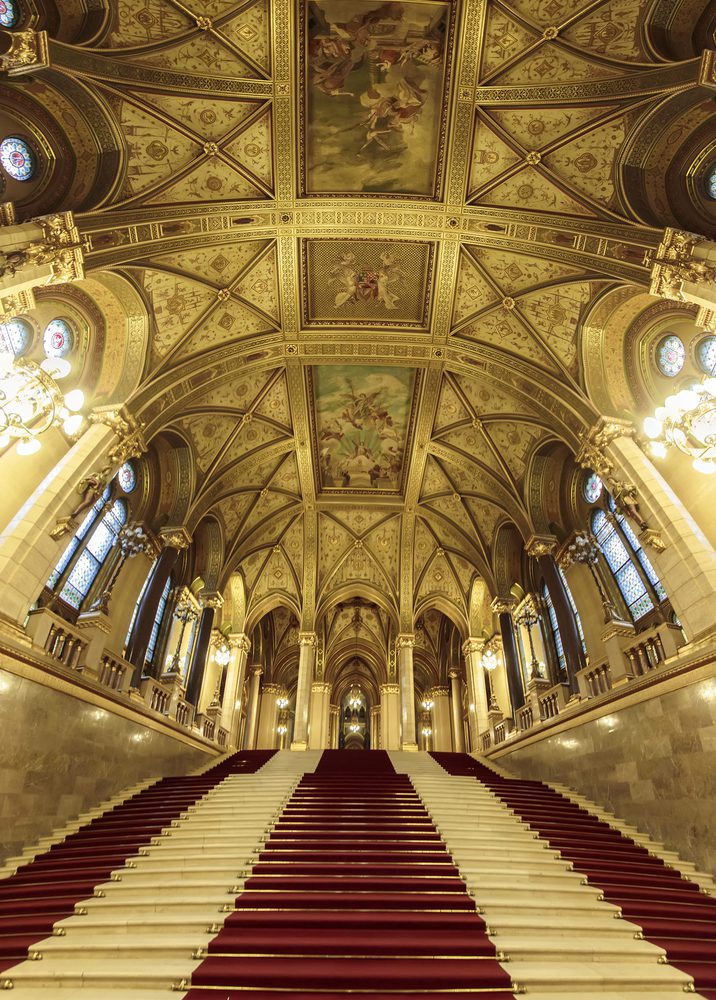
Take a Moment at the Shoes on the Danube Memorial.
Along the river, near Parliament, a simple but impactful bronze shoe exhibit stands as a memorial remembering Jewish people who were killed less than a day before the Soviets came to “liberate” the city.
Residents were told to take off their shoes and place their valuables inside of them. Then, they were shot execution-style along the river so their bodies would be swept off in the current.
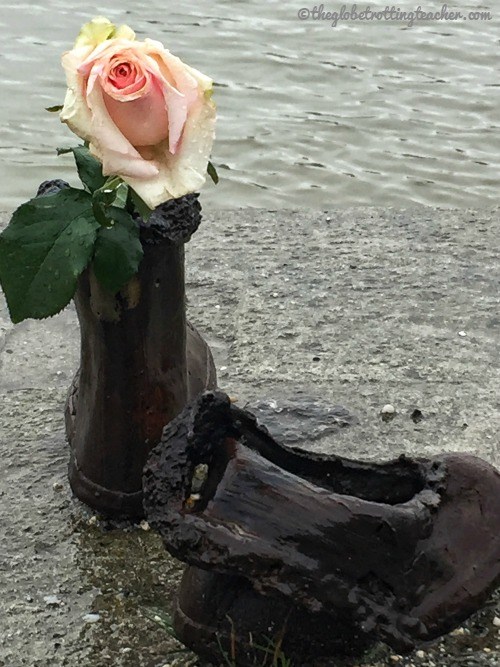
Soak in Budapest’s Thermal Baths.
Budapest is also famous for its thermal baths. Gellert Spa and Thermal Bath and Széchenyi Thermal Bath are the two most popular. With a ticket , you’ll have access to the baths and can also arrange spa treatments like a massage.
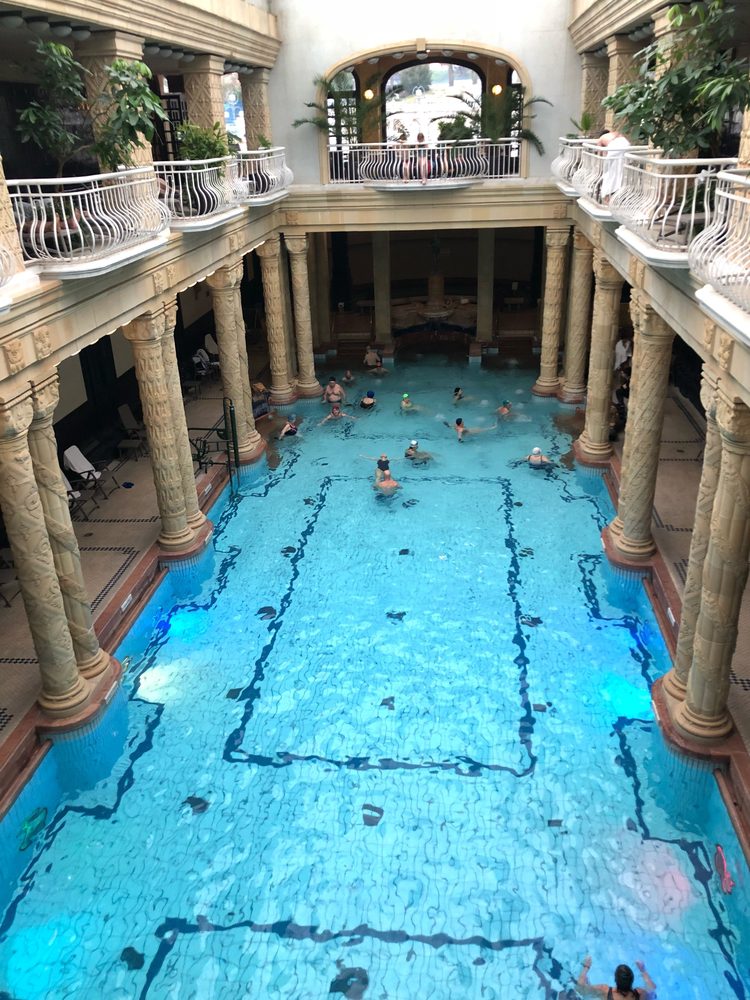
If you’re planning a visit to Budapest in summer, avoid the crowds and plan ahead . The baths are a major draw for visitors and can sell out during popular times.
Traveling to Budapest soon?
I had a comfortable stay and fantastic service at the Radisson Blu Beke . Research and book other great Budapest hotels on Hotels.com or Booking.com .
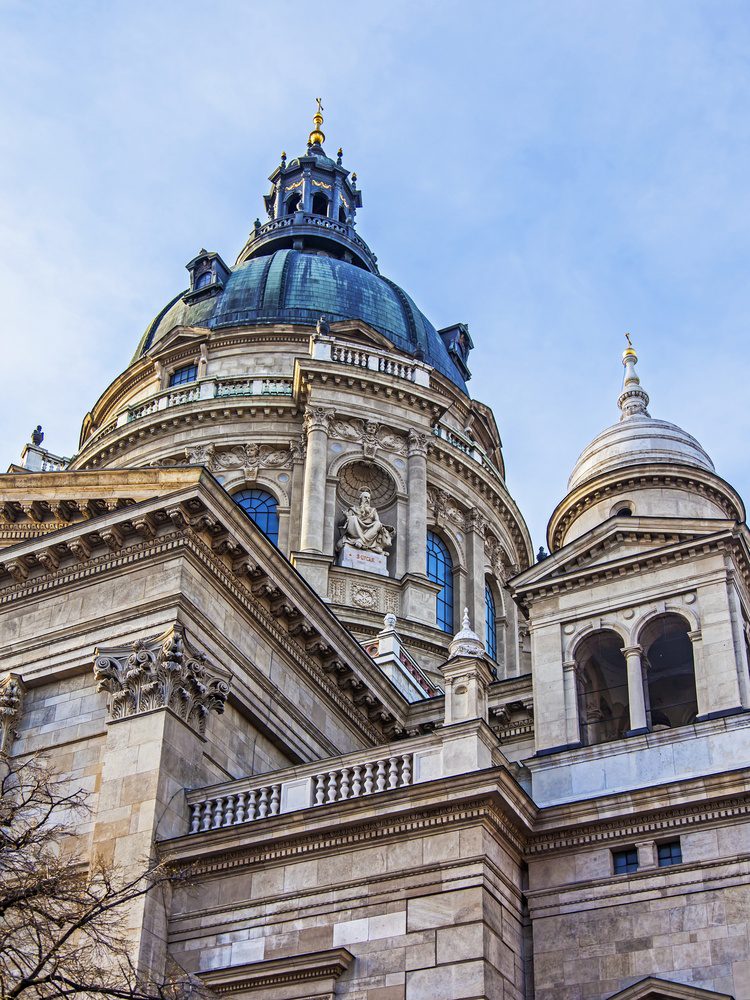
Visit Budapest’s Religious Sites.
Visit St. Stephen’s Basilica and D ohany Street Synagogue for a look at Budapest’s prominent religious structures. The architecture is unusual and the history, particularly of Budapest’s Jewish residents, is fascinating.
In fact, the Dohany Street Synagogue is the largest in all of Europe and the 2nd largest in the world. If you’ve traveled to other European countries and visited World War II sites like those in Normandy , it’s an altogether different perspective to what citizens of Budapest experienced, especially the Jewish population. The Dohany Street Synagogue played witness to all of this and more.
Walk along Andrassy Avenue.
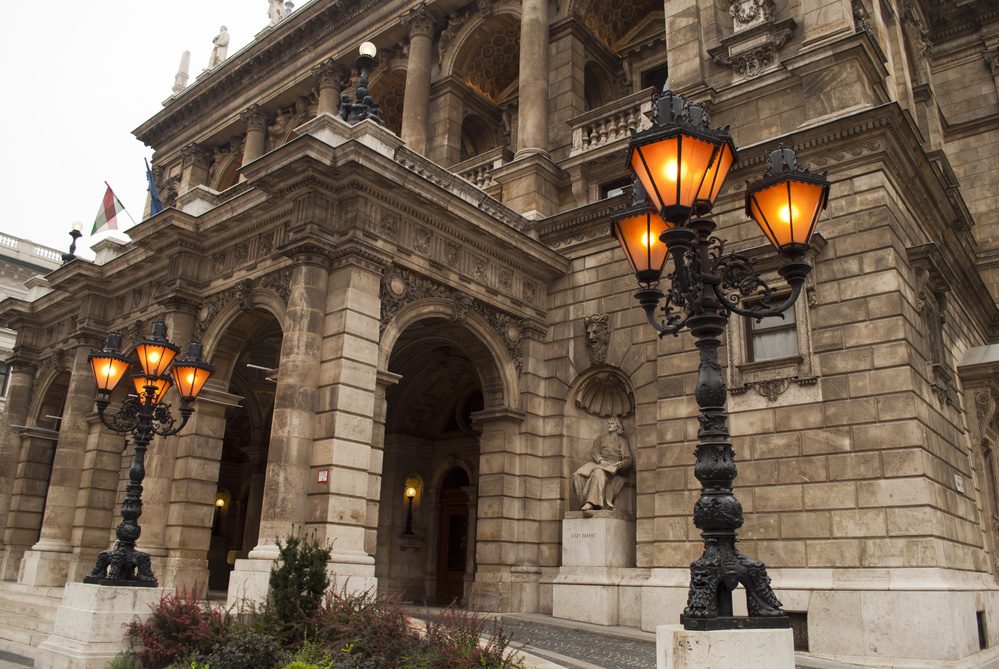
Andrassy Avenue is a place in Budapest where you can see the mix of old and modern. Just a walk along the avenue is an architectural tour from the renovated and refreshed, as well as mansions that are crumbling.
It’s along this walk where you can see both the grittiness and rebirth of Budapest over the past decades. The State Opera House is along Andrassy Avenue and guided tours are also possible. It’s absolutely one of the most gorgeous buildings you will ever see.
Visit Budapest’s Most Iconic Square.
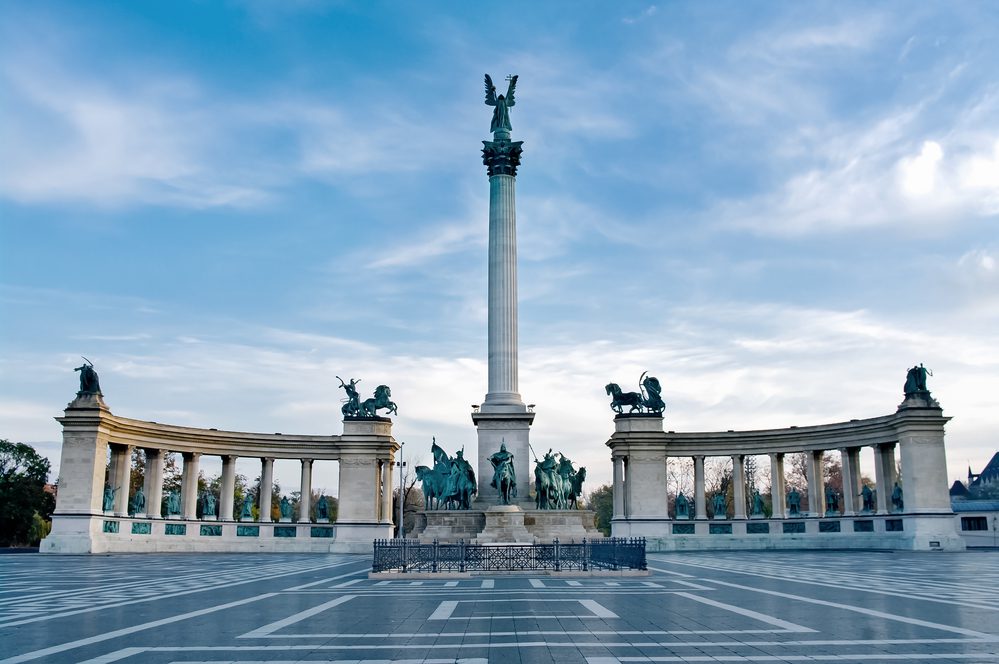
At the end of Andrassy Avenue where City Park begins is Heroes Square. The arc-shaped memorial centered around a tall column with the Archangel Gabriel on top remembers the 7 Hungarian tribes and their leaders who established the country of Hungary.
It was constructed in 1896 to commemorate the 1000th anniversary of these tribes conquering the land of what is now modern-day Hungary. Today, it’s one of the most visited and most photographed squares in Budapest. In 2002, Heroes Square and Andrassy Avenue were declared UNESCO World Heritage Sites.
Swoon over Budapest at Night!
After dark, be sure to see Budapest’s city lights from the water . It’s easily one of the best things to do in Budapest!
Boats operate from piers along the Pest side of the Danube. You can and should pre-arrange to take a sightseeing tour that loops past Budapest’s main sights and under its bridges or opt for a lengthier cruise with music and drinks.
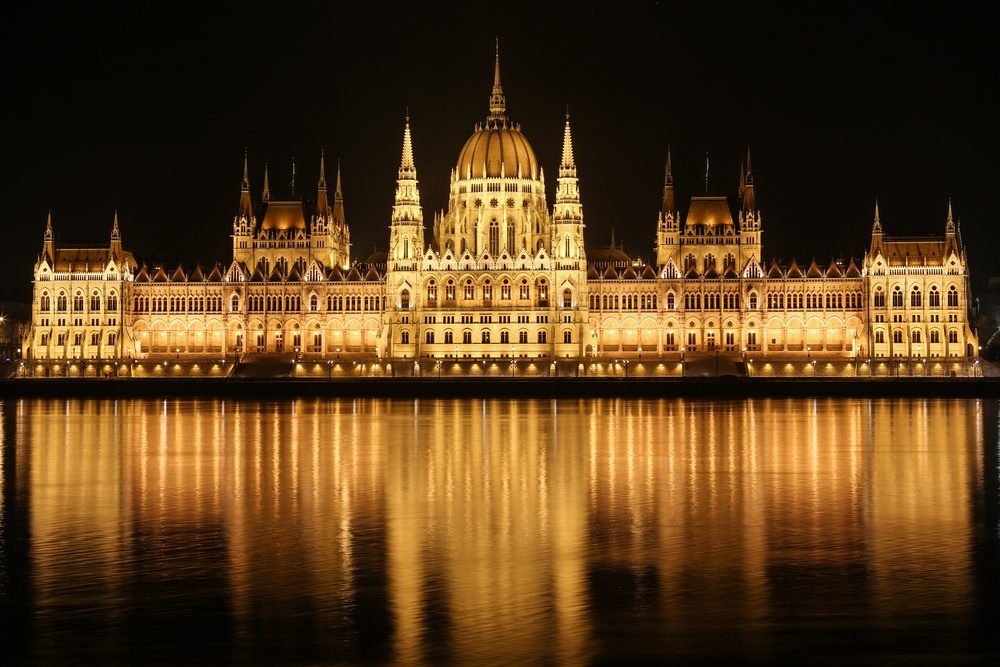
No matter how many days you have in Budapest, seeing the city from the water at night is a must. Have your camera ready! Budapest absolutely sparkles at night!
Spend a Night Out in Budapest’s Ruins Bars.
Wondering what to do in the evening in Budapest? After seeing the city dazzle from the water, have a Hungarian Beer at the Budapest Ruins Bars . The touristy but, still, fun Szimpla Kert plays different music in each room and the decor is fashioned with old computers, a car, and other odd salvage bits.
Getting To & Into Budapest
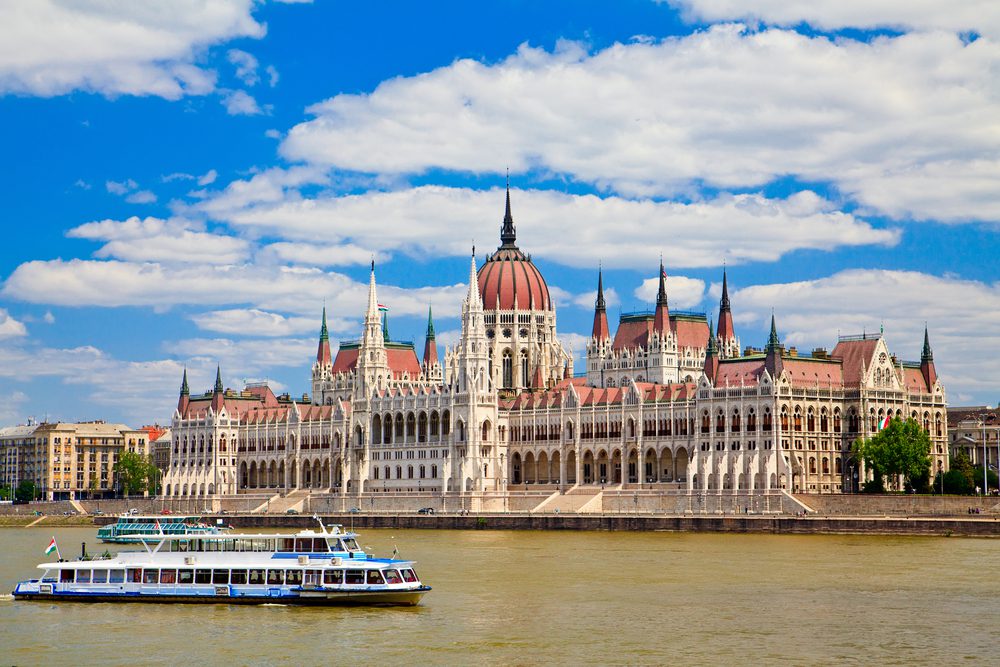
Budapest’s main train station is Keleti. Trains from Vienna are 2 1/2 hours while trains from Prague are just under 7 hours long. As you research your train options, plan to buy your train tickets ahead of time , as prices tend to go up the closer the departure date gets.
I’d read a few reports about Keleti Train Station’s sketchiness, particularly because of pickpockets. I’ve been through this station twice, once as a solo female traveler, and never felt unsafe. Still, it’s always important to be alert and keep your belongings within reach at all times.
If you’re arriving by plane, train, or cruise, book a transfer with Welcome Pickups . I’ve used them repeatedly for my transfers in Europe and around the world and have always had a great experience.
Never hail a taxi or get in a taxi parked at a taxi stand outside. There are numerous taxi scams to be aware of in Budapest. The best way to avoid this is to book your transfer in advance as mentioned above, use an app like Bolt (Uber in Budapest), or have your hotel arrange a pickup.
If you’re arriving at the airport, Budapest has also added a shuttle bus to transfer to the city center.
The 100E bus takes visitors from the airport to the Deák Ferenc tér central metro station. You can purchase a ticket for 3€ or 900 HUF at the vending machine or at a customer service desk in the arrivals area of the airport. Then wait for the bus between 5 a.m and half past midnight at the BKK stop conveniently situated between the arrival terminals.
Where to Eat in Budapest
Visit the Great Market Hall and walk through aisle after aisle of fresh meats, bread, and produce. Head to the upper level to order a Langos and other Hungarian specialties, like Goulash. The market is as much a sight to see, as it is a place where locals shop for food.
You can enhance your authentic Budapest foodie experience by joining locals for a Hungarian dinner or cooking classes.
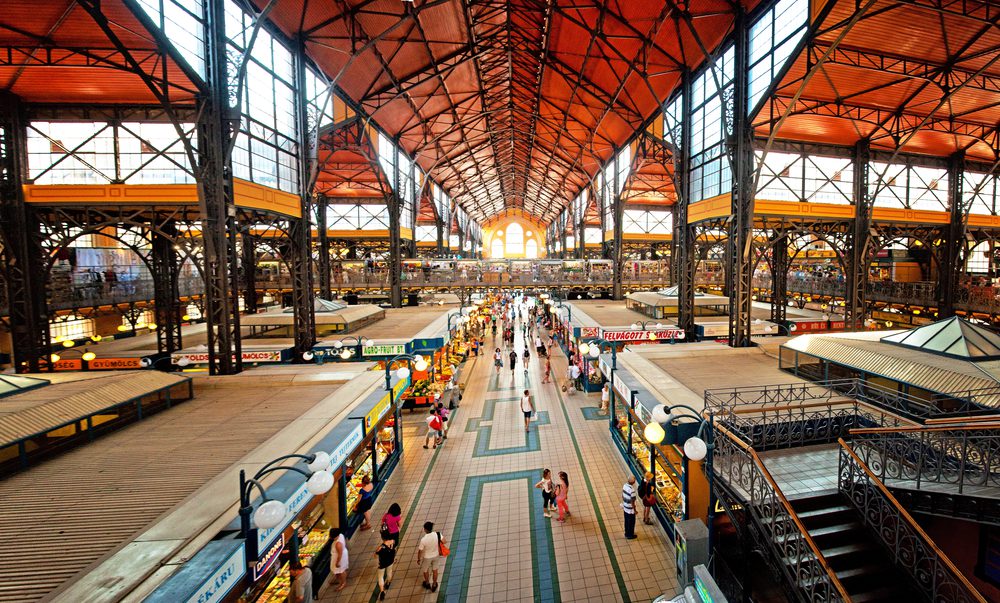
Enjoy Budapest’s colorful food scene with everything from Hungarian classics to restaurants serving cuisine from around the globe. Of course, you’ll want to taste some local specialties like roasted meats and hearty meat and bean soups served at favorites like Kispiac Biztro.
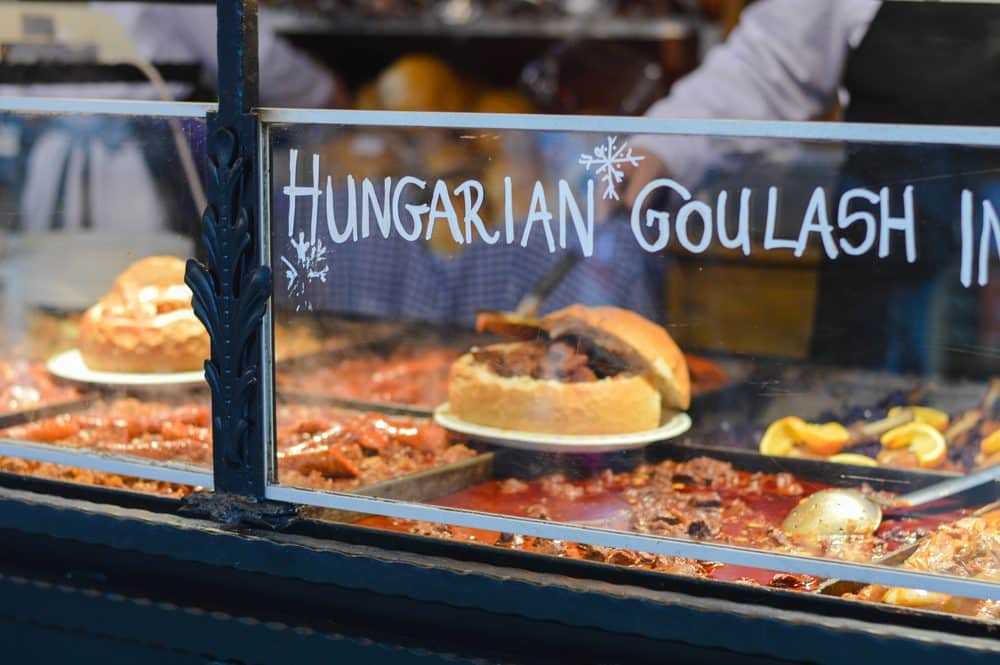
The area in and around the Ruins Bars is also a foodie area of Budapest. You’ll find cuisine that ranges from traditional Hungarian to tacos to Kosher vegetarian. Trofea Grill is not far from the Ruins Bars and has an eclectic array of foods from all over the world.
Where to Stay in Budapest
Staying along the Danube or within a 5-10 minute walk to the river will give you the best access to the sights you’ll want to visit on both the Buda and Pest sides of the city. The #2 tram also runs along the river and is a quick and easy way to get from Parliament to the Great Market Hall.
There are several well-situated properties if you’re hoping to use hotel points for award nights. IHG’s Intercontinental and the Budapes t Marriott are right along the shores of the Danube.
Hotel Clark Budapest and the Hotel Moments Budapest are also highly-rated and centrally located.
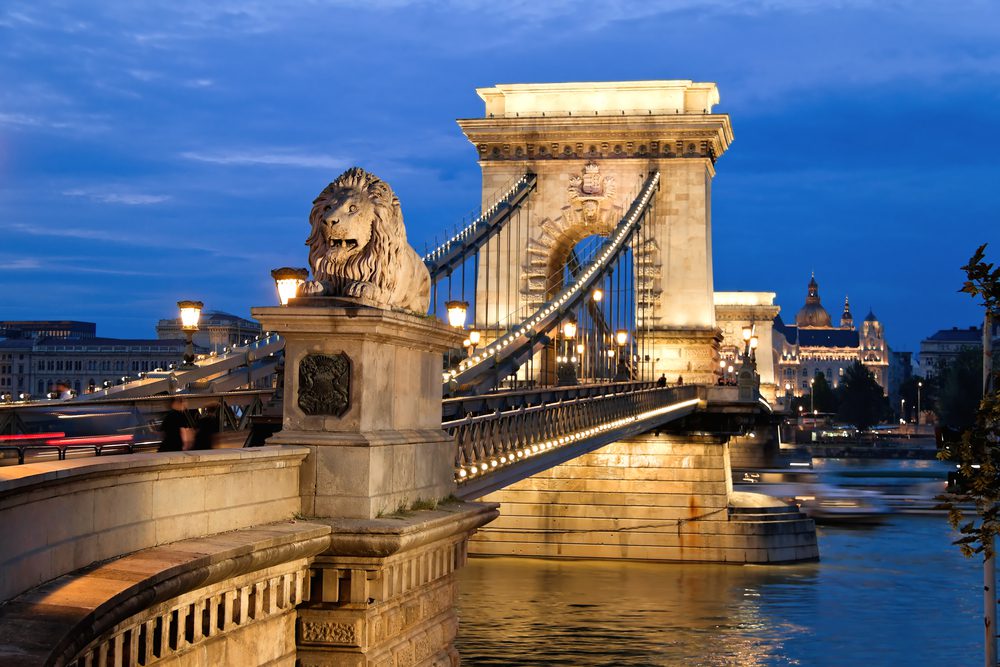
We stayed at the Radisson Blu Beke Hotel . It was a 10-minute walk to Parliament. The hotel lobby was open and bright, the staff was super helpful, and the rooms were comfortable. Since my stay, the rooms have been updated and are more in line with other Radisson Blu hotels where I’ve stayed.
If you have Radisson points, you can redeem them for a stay.
Travel Guide for Budapest FAQs
How many days is recommended in budapest.
For a first trip to Budapest, I recommend 3 days. This will allow you to see the city’s sights and spend part or all of a day relaxing at one of the thermal bath spas. With careful planning and a constant pace, it’s possible to see Budapest’s main sights in only 2 days.
What is the best month to travel to Budapest?
The months of May, June, September, and October are the best months to travel to Budapest. The weather is pleasant and the crowds of summer have eased. That being said, I did once visit Budapest in February, and although it was chilly, prices were lower and there was never a line to wait in. Not to mention, the Hungarian cuisine is perfect for warming you up on a cold winter’s day.
Is Budapest expensive?
Visiting Budapest is much less expensive when compared to other European cities. In particular, the costs for a hotel and food are quite affordable.
Is Budapest safe?
Yes, overall, Budapest is safe. You should still remain alert, though. Like other touristy cities, Budapest does have petty crimes like pickpocketing and scams.
Is Budapest worth visiting?
Absolutely, yes! The city is full of history, gorgeous architecture, and a vibrant cultural scene. If you’re planning a trip to Eastern Europe, in particular, add Budapest to your itinerary!
Bottom Line: Visiting Budapest is Unforgettable!
Budapest is a gorgeous city with incredible history and architecture. It’s not to be missed when planning a trip to Eastern Europe. Even long after your trip is done, Budapest will still dazzle in your memories!
So, what questions do you have about this travel guide for Budapest?
Like this post? Please share it on social media using the share buttons below.

Related Posts

Why You Should Drive the Icefields Parkway + Trip Planning Tips

3 Reasons to Visit Banff National Park Immediately
56 thoughts on “travel guide for budapest: a cheat sheet for first-timers”.
stunning Pictures of castle!! looks like an amazing place.lots of useful information you have shared. Appreciative Work.
Thanks so much, Maggie. Budapest is such a great city. Thanks for commenting. 🙂
Hi Jackie! I went to Budapest a few years ago and loved it. You’re right once you visit it, you already make plans to visit it again. Went to a medieval restaurant and had great food there and also tried local desserts, sooo good! Can’t wait to visit again. So glad you wrote about Budapest.
Hi, Melanie! I’m so happy to hear you went to Budapest and loved it! No doubt the food you had was delicious! I was actually excited to find there is a Hungarian food truck here in NYC. 🙂 Will definitely be heading back to Budapest!
Budapest is one city I would really love to visit! Your photo of the rose is so evocative!
Thanks, Carol. 🙂 You’re sure to love Budapest when you make it. Great sights, delicious food, and fascinating history.
Budapest is stunning. I went there a couple of years ago for a few days. Although it was a work trip, I managed to use a good amount of time to explore the city.
The views from the top of the hill are beautiful. Also did the Parliament tour and although it was a bit short, it was a great to see it from the inside. What an amazing building.
I found the city great for walking as well.
So well said, Hugo! I thought the city was made for walking as well and would love to go back again and really just stroll through and explore different areas and quieter streets. 🙂
Budapest looks so gorgeous. I’m really going to try and finally make it there when I’m in Europe this fall. The Parliament building is stunning!
Oh, Mags, you’ll be happy you did! Budapest is great! Definitely worth using some of your time in Europe to explore Budapest. 🙂
Budapest is one of my favourite cities and after two visits there are still a few things on your list that I have not seen. Just means I’ll have to return again 🙂 Thanks for linking up this post with #TheWeeklyPostcard
It’s never a bad thing to have a reason to return somewhere, Lyn, especially a gorgeous city like Budapest! ?
You’ve described it very well. Budapest is vibrant and there’s always something to do and see. We’ve enjoyed Gellert, the local food and the views all around this city too. Definitely worth a visit for a couple of days. PS: we liked Budapest a lot more than Prague…a bit boring… 😉
Definitely worth a few days of a European itinerary, Jempi. You’re so right when you mention the pulse of Budapest. It feels really alive and trendy. 🙂
Hmm, haven’t made it to Budapest yet but it looks gorgeous in your pretty pictures!
Thanks so much, Lotte. Add Budapest to your European must-sees for sure. It is a true gem of a city. 🙂
Brilliant. Thanks for this – we are going to attempt Budapest with toddlers in the next year. It’s been on the top of my travel wish list for a little while now. Thanks
Great, Katy! The #2 tram is cheap and easy to hop on and off and will leave you with convenient access to most sights. Really easy to manage with the kiddos! 🙂
This guide is just what I need as I plan a trip around Central Europe. I can’t wait to visit some of the famous thermal baths!
Fantastic, Brianna! Definitely have 2-3 days for Budapest, especially if you want to linger for a half day at the baths. Have a great trip! 🙂
Very interesting! Would love to see your posts in the Practical Mondays Link Up:)
Thanks so much! I’ll be sure to check out the link Up. Thanks for the invite. 🙂
That is one heck of a packed itinerary and you’ve picked great things to do. My favourite are the baths – I’ve checked out just about every thermal bath in Budapest and never get tired of them. Concerts are another great activity in this musical city for sure.
That’s 1 thing we wish we had done, Carol! We went to a jazz club in Prague and a classical concert in Vienna but didn’t have time to fit it in… We did spend a night in the ruins bars debating politics with a NATO soldier, but that’s a whole different story (lol)! 🙂
Excellent tips, Jackie. We visited Budapest last year and the city has so much to offer that it’s hard to decide what to fit in. Definitely agree about staying near the river. We stayed at the Budapest Marriott and were really happy with our decision. Thanks for linking to #TheWeeklyPostcard.
Thanks, Linda! I saw that Marriott and it is very nicely located. Glad to hear you enjoyed Budapest and got to see many of its fantastic sights. 🙂
The story behind the memorial is really painful. I’m glad there is something to remember them by, and reminds us never to do something like that again.
I couldn’t agree more, Mar. The more you stand “in their shoes” the more the horror reveals itself to you.
I love Budapest, Jackie, and your post is doing a lot of justice to the beautiful Hungarian capital. I like how you caught the essence of what to do and see in Budapest and also I like your pictures. Great post!
Thanks, Anda! I’m in good company for sure. I just fell in love with Budapest.
I’m thinking about making a trip to Prague, Vienna, and Budapest in July or August by myself. I love to just wander and take photographs. How safe do you think Budapest is for a 60 year old woman traveling alone? I’m a pretty seasoned traveler and use public transportation to get around, but I’ve always had a travel companion before. I’ve rented apartments in France and Italy, but haven’t been to the east.
Thanks for reading, Robin. How fantastic to be planning a trip to Prague, Vienna, and Budapest! I took this exact trip in February and loved it! I found Budapest to be really safe. Even in February, there were plenty of people walking around and sightseeing. I took a free walking tour and the guide’s only warning was to beware of pickpockets. My advice would be to use common sense and keep your wits about you just as you would in any city. I would happily and comfortably return to Budapest on my own. With your traveling experience, too, you’ll really enjoy the city. It’s a true gem!
Thanks. Your suggestions were very helpful. We particularly liked the House of Terrors, the museum about the unbelievable atrocities the Russians and the Naziis wreaked on the Hungarians. It’s depressing but well worth your time. The cathedral is beautiful and the city at night is not to be missed. And don’t miss the market!
Thanks, Maureen. I’m glad you enjoyed your trip to Budapest! I missed the House of Terrors, so thanks for the tip. As a history buff, these museums are so interesting even if the content is hard to understand.
Planning a trip for September! Do most places take the forint? I thought Hungary was in the EU thus would use euros?
Hi Sandy, although some places take the Euro, prices are all in Forints. The exchange rate is better this way, too. It makes Budapest a very affordable European city to visit. Forints are easy to get once you arrive.
A friend and I are going to Budapest next month and would love to take an evening boat trip to see the Parliament building lit up. But I’ve read that the boats don’t start running until April Do you know if this is true? Your photos are lovely and we can’t wait to visit.
Hi MagsA, Thanks for reading. From my experience, this is not true. I was there in February and took a night boat ride. It was cold but gorgeous. An absolute must while in Budapest. 🙂 Happy travels!
That’s a really great cheat sheet, It seems to us you know our beloved city as well. Thank you for coming and sharing your deep experiences. You are always welcome back. And great pics, btw.
Thanks so much for your kind words. I loved Budapest and hope to return someday. Please understand, while I appreciate your suggestions, I do not post comments with links in them, so have edited the last line of your comment. Thank you again for reading. 🙂
I loved my trip to Budapest last fall. We enjoyed the cave tour where Vlad the Impaler was imprisoned, under the castle on the Buda side. Spooky. We found several great self-guided walking tours. (LINK EDITED OUT) We were lucky to see the Christmas markets as well.
Thanks for reading, Baranie. So glad you had a great trip to Budapest! 🙂
We will be in Budapest for a few days in 2020 and this was by far the best information I have read about visiting for the fist time, Thank you so much for all the wonderful information and the stunning pictures,
Thanks for reading, April. So glad the post will be helpful for your Budapest trip in 2020. It’s a fantastic city! Happy travels. 🙂
Great article, glad to see that I’m not the only one in love with the city.
I wouldn’t recommend Apostolok restaurant though, it’s a tourist trap. Use Google maps to check the ratings and reviews and you can find a good place to eat anywhere in the city.
Or pick from these : Kiosk, Divin porcello, Gettó Gulyás, Kazimír bistro, Fat mama, Tukory… The food scene is amazing in Budapest
Thanks for reading, Matyas. Great restaurant tips and couldn’t agree more about the amazing food scene in Budapest.
Your transportation segment needs to be updated. From the airport, there’s now a shuttle bus, leaving every 20 minutes, that gets you into town in @ 30 minutes. Cost is $3.
Thanks for reading, Rich. I appreciate the info. Yes, the post is scheduled for an update. 🙂
Hi Jackie – we found your article very helpful. Thank you. One concern I have is that I am not a lover of meat or game type menu’s. I know in this part of the world they are not very health conscious, but could you recommend a great place for optional items that might be more health generated such as some gluten free or vegan options or we love fish. Just trying to find a variety on the menu instead of so much meat/potatoes. I know this is a tall order…thank you so much.
Thanks for reading, Cindy. Unfortunately, I can’t recommend a specific restaurant but I can tell you I’m a vegetarian and had no problem finding great food to eat. Budapest has a fantastic food scene. So, even if you’re not looking for traditional food which does include a lot of meat, there are all kinds of cuisine options, not to mention vegetarian alternatives for classic Hungarian dishes. Thank you again for reading! Happy eating in Budapest. 🙂
Thanks, Jackie. I’m headed to Budapest next fall with my wife. Your information and ideas will help make our four days fruitful!
Thanks for reading, Bob. 🙂 Enjoy Budapest!
Thanks for the information Jackie, me and my wife are going next week for a few days and we’re both really looking forward to visiting this lovely city.
Thanks so much for reading, Paul. Enjoy Budapest.
Planning to visit Budapest and Debrecen. Bookmarking this article for when I get to Budapest.
Thanks for reading and bookmarking, Sarah.
Leave a Comment Cancel Reply
Your email address will not be published. Required fields are marked *
Save my name, email, and website in this browser for the next time I comment.
This site uses Akismet to reduce spam. Learn how your comment data is processed .
Privacy Overview
Awesome, you're subscribed!
Thanks for subscribing! Look out for your first newsletter in your inbox soon!
The best things in life are free.
Sign up for our email to enjoy your city without spending a thing (as well as some options when you’re feeling flush).
Déjà vu! We already have this email. Try another?
By entering your email address you agree to our Terms of Use and Privacy Policy and consent to receive emails from Time Out about news, events, offers and partner promotions.
Love the mag?
Our newsletter hand-delivers the best bits to your inbox. Sign up to unlock our digital magazines and also receive the latest news, events, offers and partner promotions.
- Things to do
- Attractions
- Restaurants
- Los Angeles
Get us in your inbox
🙌 Awesome, you're subscribed!

The 13 best attractions in Budapest
From gorgeous architecture to lesser-known curiosities and quirky museums, these are the finest sights in the Hungarian capital
Budapest is a darling of a city, one of the most picturesque capitals in Europe and objectively one of its best nights out . Tourists, travellers, nomads and explorers alike have been wandering the streets of Buda and Pest for centuries, looking for excitement and experience in equal measure. The Hungarian capital doesn’t let the side down, and those serene thermal baths and spas are always on hand to provide a little rejuvenation. The best attractions in Budapest are the greatest hits of sorts, showcasing the capital’s fascinating history, architectural majesty and fiery creative side. Looking for your Budapest bucket list? Look no further.
Recommended: 📍 The best things to do in Budapest 😋 The best restaurants in Budapest 🍻 The best ruin bars in Budapest 🏡 The best Airbnbs in Budapest 🛏 The best hotels in Budapest
This article includes affiliate links. These links have no influence on our editorial content. For more information, see our affiliate guidelines .
An email you’ll actually love
Best Budapest attractions

1. Buda Castle
Crowning the capital atop Castle Hill, Buda Castle presents an architectural melting pot, with Renaissance ruins around the foundations, a grand Habsburg-era neoclassical façade, and a stark communist-style interior. The palace is divided into three museums: The Hungarian National Gallery, the Budapest History Museum and the National Széchényi Library. You could easily spend the whole day just mooching around these three. But make sure to bring a camera – the views over the river and cobbled courtyards are quite something.

2. Széchenyi Baths
Take a plunge in Budapest’s most famous thermal bath. The Széchenyi Baths are a visual feast with their canary-hued colonnades and steaming outdoor thermal pools. Make sure you go inside to explore the vast interior clad with ceramics, marble and mosaics. Budapest is known as the ‘City of Spas’ for its 120 geothermal springs – so don’t miss out.

3. Madame Tussauds
The world’s 24th, and arguably most elegant, Madame Tussauds waxworks museum occupies the 200-year-old Palazzo Dorottya in the heart of Budapest. Using the Hungarian capital as its main theme, this English-friendly attraction takes visitors on an interactive and immersive journey, accompanied by movie stars and famous figures from Hungarian history. Without leaving this spot by the Danube, you can zoom around town on the back of Tom Cruise’s motorbike, accompany Habsburg Empress Elisabeth in her carriage or schmooze with Brad Pitt at a wrap party at the Gellért Baths. Hungarophiles will enjoy the life-like representations of pre-war torch singer Katalin Karády and football star Ferenc Puskás, both showcased in suitable settings.

4. Children’s Railway
Get out of the city centre and escape to the Buda Hills on this nostalgic 45-minute train ride through the forest. Why ‘children’s’? It’s not aimed at kids, necessarily – but run by them. This vintage railway is a remnant of a communist youth programme called ‘The Pioneers’, which encouraged children to develop a work ethic and learn about responsibility. These days, a staff of uniformed children still operate the narrow gauge railway, but sans propaganda. Fortunately, the drivers and engineers are grown-ups.

5. Memento Park
Memento Park may be on the city’s outskirts, but its graveyard-like array of communist statues is well worth the trek. Bronze statues of Lenin and Hungarian political figures from the Communist Party are dotted around the vast park alongside monumental pieces of street propaganda. Don’t miss the barracks next to the main gate where you can watch films from the secret service. And make sure to have a go on the time-travelling telephone booth just inside the entrance.

6. Dohány Street Synagogue
It’s hard to miss this neo-oriental building, topped as it is with two gold-dappled onion-dome turrets. Inside, the synagogue dazzles with its rare rose window, lavish gold leaf detailing and carved wood features. A poignant graveyard marks where some 2,000 Jews were killed during the Holocaust, alongside a weeping willow sculpture that bears the name of the victims on each of its leaves. Europe’s largest synagogue definitely merits a visit, but you can only go in with a guide.

7. St Stephen’s Basilica
This domed basilica is Budapest’s most photographed monument and its tallest building at 97 metres (tied with the Hungarian Parliament). Go inside for the spectacular frescoes and the mummified hand of Hungary’s canonised first king. Make sure you head to the viewing platform for 360-degree views over the city. For a truly magical experience, check out an organ concert.

8. Hungarian Parliament
Another Danube-side icon, the Hungarian Parliament dominates the Pest side of the river with its neo-gothic spires, gargoyles and a dome that peaks at 97 metres. Tour the building, see it from a boat or simply look over from Buda. If you take a guided tour, climb the golden staircase, and ogle the crown jewels that once belonged to Hungary’s first king (plus the rooms where the Hungarian government now meet).

9. Heroes’ Square
Heroes’ Square bookends the north-eastern end of the elegant Andrássy Avenue. It feels more like a memorial than a square, thanks to the arcade filled with statues of Hungarian kings and leaders. In the centre, a column rises with the Angel Gabriel at the top; at the bottom, you’ll find the Tomb of the Unknown Soldier. Each side of Heroes’ Square is flanked by two neoclassical, temple-like buildings: The Museum of Fine Arts and the Kunsthalle.

10. Central Market Hall
If you’re feeling peckish, make this your first stop – and don’t get too distracted by the surroundings (save that for afterwards). This red-brick building, with its striking yellow and green tiled roof, is a big draw for architecture buffs. And the cavernous interior, accented with steel beams, is even more spectacular. But most importantly, the ground floor bursts with a cornucopia of fruit and veg, sausages, cheese and pickles. Game and fish counters populate the labyrinthine basement, while the first floor is split between folk art and embroidery and an effervescent food court.

11. Margaret Island
The 2.75-kilometre-long Margaret Island stretches from Margaret Bridge in the south to Árpád Bridge in the north. Apart from the local bus, most of the island is traffic-free, and it’s a refreshing, leafy hangout for Budapestians and visitors alike. Visit the ruins of a medieval convent, climb an art nouveau water tower, kick back in the Japanese or rose garden, or picnic by the musical fountain. The island also boasts an open-air art deco thermal bath, the Palatinus.

12. Hospital in the Rock
This underground hospital saw action in the Second World War and the 1956 Revolution before it became a nuclear bunker. For decades it was top secret and only became declassified in the early 2000s. Today it offers a fascinating insight into frontline medicine in Hungary, with guided tours through the hospital, now enhanced with creepy waxwork figures. The bunker’s decontamination chambers are brilliantly eerie, too.

13. Szimpla Kert
Szimpla Kert is the original and most famous ruin bar in Budapest. Step inside this crumbling building, and you’ll feel you’ve entered a surreal, fairy-light-wrapped wonderland with graffiti-daubed walls and mismatched furniture likely brought in off the street. Original art and sculptures adorn the walls, and the complex is vast (it takes up an entire gutted apartment block). On Sunday mornings, it turns into a farmers’ market with a charity cook-off and live music.
More great Budapest attractions
[image] [title]
Discover Time Out original video
- Press office
- Investor relations
- Work for Time Out
- Editorial guidelines
- Privacy notice
- Do not sell my information
- Cookie policy
- Accessibility statement
- Terms of use
- Modern slavery statement
- Manage cookies
- Advertising
- Time Out Market
Let's be friends! Sign up receive our monthly newsletter with updates and new in-depth guides.

4 Days in Budapest: How to Plan A Perfect Budapest Itinerary
Budapest is one of our favorite cities in Europe. Straddling the Danube, the capital of Hungary is one of Europe’s most charming cities. Not only is it beautiful, but it is filled with history, culture, fun things to do, high quality and inexpensive wine (my personal favorite), and good food. The architecture is beautiful, the atmosphere is vibrant and there are plenty of things to do and see that are well worth the visit. The city is the perfect size: small enough to allow you to explore on foot, but big enough to offer plenty of activities over the course of 4 days in Budapest.
My mom’s side of the family is Hungarian, and before you ask, I speak exactly zero Hungarian, which is easily the hardest language I’ve ever tried to learn.
In this detailed guide, we will give you all the tips you need to create an unforgettable Budapest itinerary. We will take you through Hungarian history and culture and point out all the must-sees for someone visiting the city for the first time. We will also give you suggestions on where to eat, drink, and sleep.

While we have both visited Budapest multiple times including basically doing the exact itinerary below (twice), and my (Matt’s) mom’s side of the family is Hungarian, we’re by no means experts.
We wanted to bring you the best and most up-to-date recommendations, so we partnered with Diana Bernardo , who is a Portuguese travel writer who has lived in Budapest for the past three years. Over this time, she has hosted many friends and family members in Budapest, and has given them all an extensive tour of the city.
Now it’s your turn to get the insider tips she has to share that will help you plan an amazing Budapest adventure. Occasionally, we’ll interject with our thoughts and experiences, but for the most part, Diana is going to be your expert tour guide.
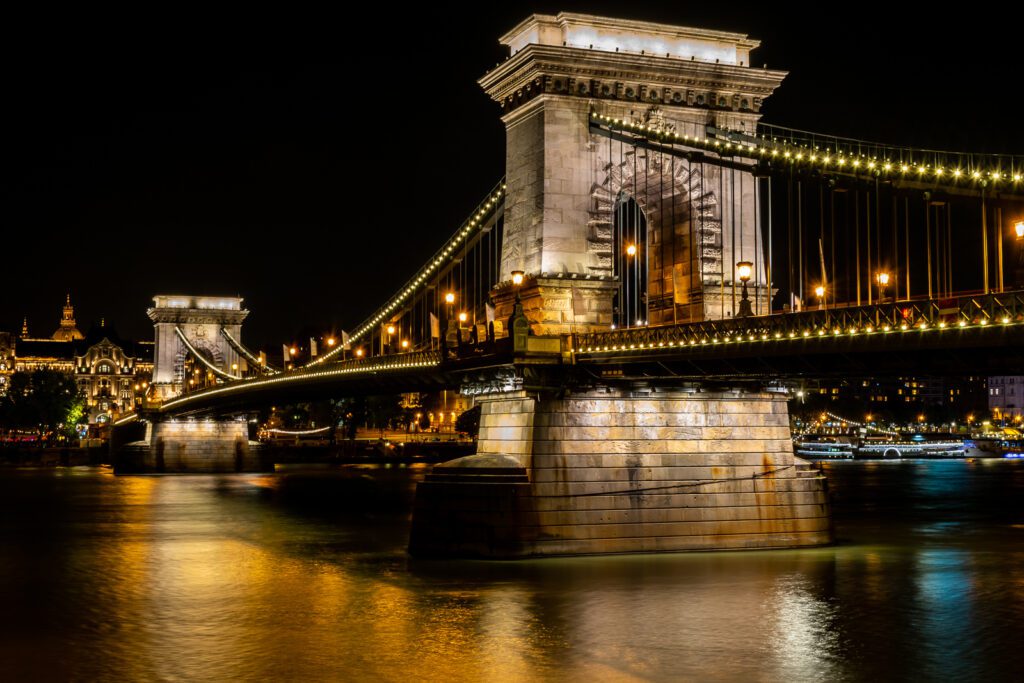
Disclaimer: Some of the links in this post, like hotel links, are affiliate links, meaning at no additional cost to you, we make a little bit of money if you click through and book. That being said, we would never recommend something to you that we don’t stand behind 100%.
Tips for Visiting Budapest
Even though Hungary is in the EU, the country didn’t adopt the Euro as a currency, and still uses the Hungarian forint. This means that there are plenty of exchange houses throughout the city, some better than others. Look for one that has a smaller gap between the buy and sell rates, that’s how you’ll make the most of your money.
Your best bet is to exchange money with your bank at home before you come, and to use ATM machines at reputable banks in Budapest (Budapest Bank and Erste Bank were the ones we saw most often). Keep in mind, you’ll likely be charged a flat fee by both your bank and the bank whose ATM you’re using, which means you should try to withdraw as much cash as you think you’ll need for your trip to avoid paying those flat fees multiple times.
Also, stay away from Euronet ATM machines , as they will give you a very unfavorable rate, and charge you a flat commission on top.
The best option would be to use a credit card with no foreign transaction fees. If you have an international card like Revolut or Wise , this is the best option. Card payments are accepted everywhere in the city, even for very small amounts, the only exception being some farmers markets or temporary selling stalls.
Where to Stay in Budapest
Budapest is divided into districts. The best one to stay at depends on your preference. If you want to be at the center of the action, close to everything, the 5 th (Belváros) is the one for you .
It includes Deák Ference square, the main transportation hub in the center of Budapest, and it will give you easy access to any point of the city. It is also close to the nightlife area, without being too loud and boisterous.
Staying in Belváros (District V)
The 5 th district is home to many of the city’s hotels and hostels. Here are a couple of options that we like for a range of styles and budgets.
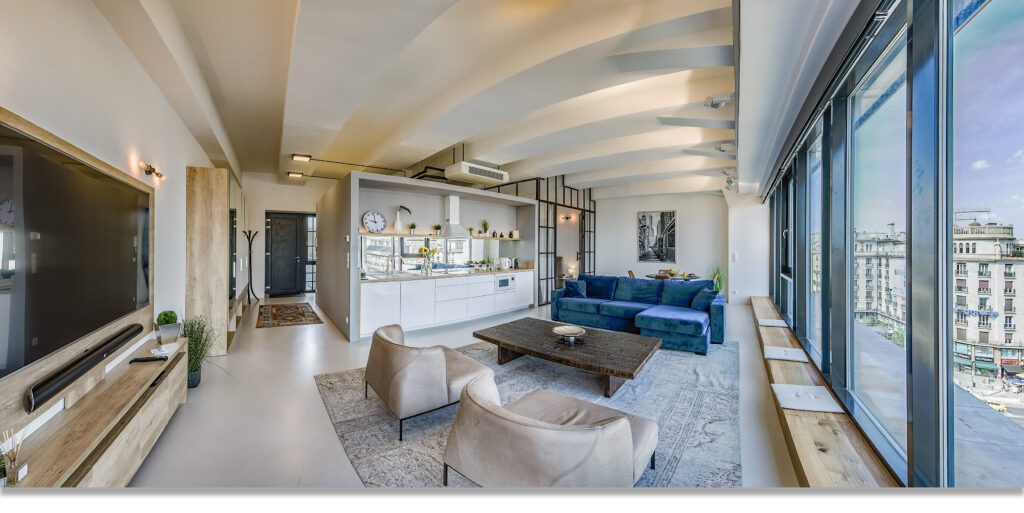
Loft Astoria : The location here couldn’t be better – it’s just a few blocks away from where we stayed on our last trip, which puts you within walking distance of most of Budapest’s main sights. It’s an apartment-hotel, so you’ll have a bit more room, kitchen facilities, and a range of room types from cozy studios (perfect for couples) to two bedroom apartments for larger groups. Unlike many of Budapest’s hotels, which are ornate and classically-decorated, the rooms here are ultra modern and sleek.
Wombats Hostel : We have stayed at Wombats during our trip to Munich , and it was great. Their Budapest outpost is super well located, at only 3 minutes walking from Deák Ference square, Wombat’s checks every box on our list for a good hostel. The rooms – a mix of dorms and private rooms – are good and include private bathroom, the breakfast is of high quality, the staff is nice, and the hostel provides many activities that you can take part in daily. Also, it used to be a four-star hotel that was converted to a hostel but kept the charm of the old building.
Pal’s Hostel : this is not a regular hostel but rather a combination of private rooms (some have shared bathrooms) and apartments around St Stephen’s square. They also offer both dorm beds, which are limited to four people each, which means no 24 bed dorms! In 2018, it won the award the Hostelworld’s award of the 10 th best large hostel worldwide!
Staying in the Castle District (District I)
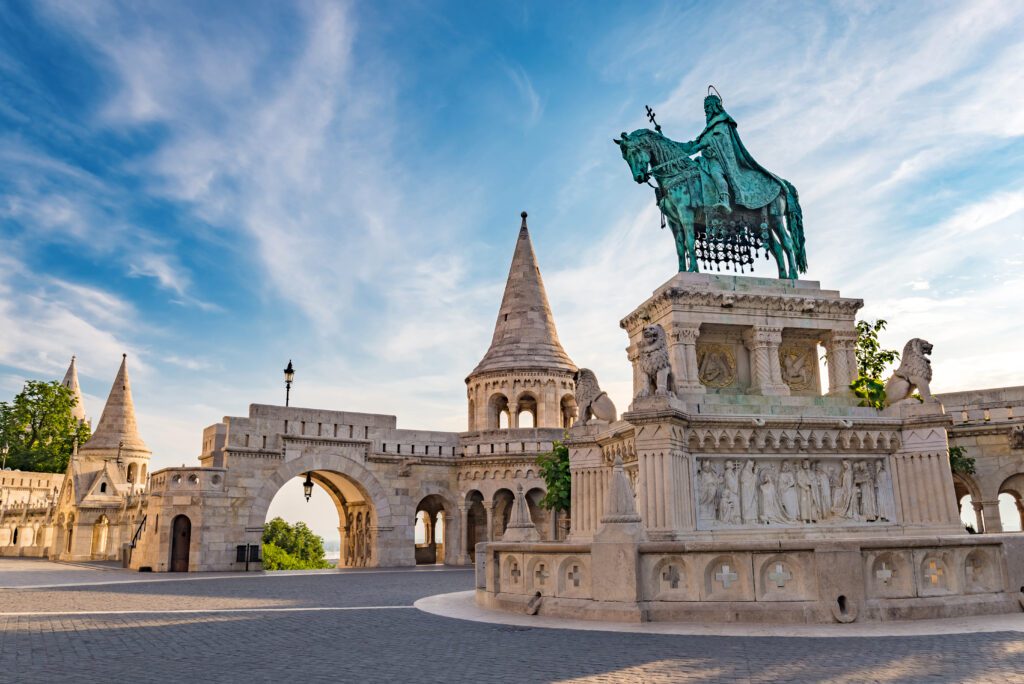
If you prefer a quieter neighborhood, with green areas and without the feeling of being in the middle of the city, we recommend the 1 st , on Buda side.
It is also very well connected in terms of public transportation, and it even includes some landmarks of the city, like the Buda Castle and Fisherman’s Bastion.
In the 1 st district, you won’t find many hostels, but rather hotels. This is the one we suggest:
PEST-BUDA Design Hotel : This small boutique hotel, in the heart of Buda, is full of charm. It is also very comfortable, providing the rest you deserve after a day exploring the city.
Buda + Pest = Budapest – A Geography Overview
Nowadays, Budapest is one of the biggest cities in Europe (although it really doesn’t feel like it when you are exploring), but that was not always the case. Originally, there were three independent towns: Óbuda, Buda and Pest. They all united in 1873, to form the city of Budapest.
Óbuda is adjacent to Buda, but Pest is located on the other side of the river Danube, which flows through the city, cutting it in half. This distinction is very used for referencing any spot in the city. The first thing you will need to know when going to a place is: is it in Buda or in Pest?
Also, the two areas have different vibes. Buda is quieter, more residential, hosting families and older generations. Pest has a more vibrant energy, shopping venues, and party spots.
It is extremely easy to go from one to the other, as Budapest has eight bridges connecting the two banks of the Danube.
4 Days in Budapest: a Complete 4-Day Itinerary
In the itinerary below, you’ll get a nice overview of the city, exploring a different part of Budapest on each day.
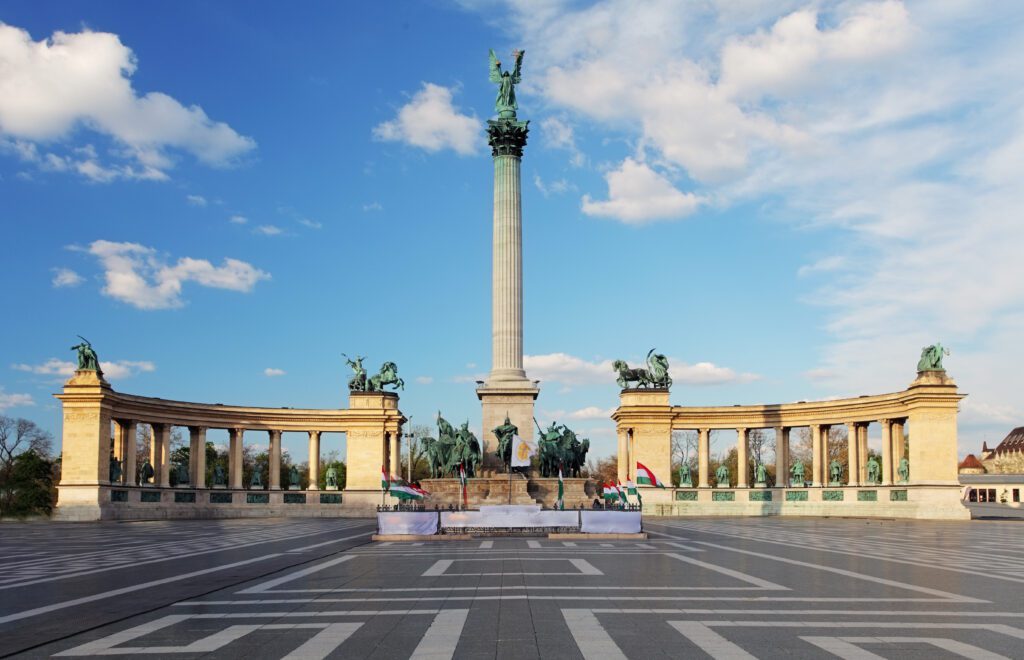
Day 1: Walking Tour, Castle District and Your First Thermal Bath
Your first day in Budapest will feel like a fairytale. You will go on a walking tour for an overview of the city, explore the picturesque Castle district and end up in a hot tub on a rooftop!
Morning: Walking Tour
As in any other city, the best way to start exploring Budapest is to do a free walking tour. This will give you an overview of the Hungarian history and culture, as well as a better understanding of where the major attraction points in the city are.
There are several tour options, but we recommend this one , as it covers a wide area and it finishes right where you will start your next visit, the Buda Castle.
Remember, these walking tours are tip-based, which is the way the guide makes money. Make sure to tip your guide at the end of the tour! We usually do $10 – $15 USD, but it’s up to you.
After a morning walking around, take a lunch break to recharge energies. Maja , with its daily changing menu, is a good option. Usually, it consists of a soup, a couple of options for main dishes, and a dessert, and it will cost you between $10 and $12. It is also 100% gluten free, so if you have Celiac disease you can eat there safely.
Afternoon: Castle District

The Castle District is one of the loveliest places in the city. In a way, wandering through the streets makes you feel like you went back in time.
Start by checking the castle complex , which was once the residence of Hungarian kings but is now home to several museums and government institutions. There you can also see the changing of the guards, which happens every hour. The guards perform an interesting choreography, which lasts only a few minutes, but it’s worth checking out.
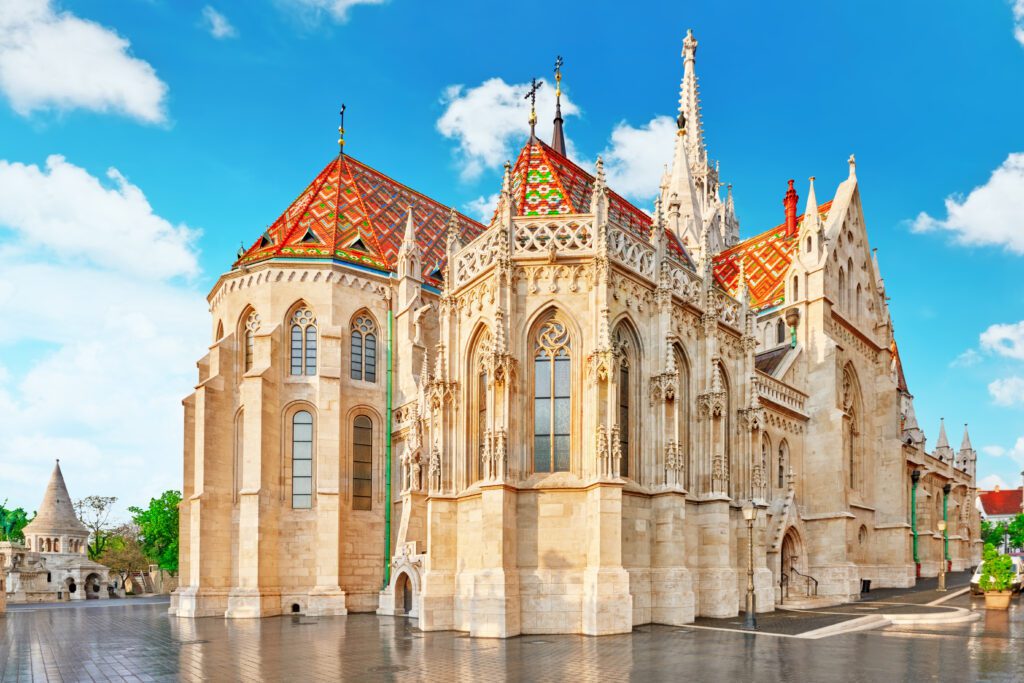
Just a few minutes’ walk from there, you will find Saint Matthias church , which was used as a coronation church by the Hungarian kings for centuries. Have a good look at its roof, with its unique tiles.
Last, but certainly not least, is our favorite place in this area – Fisherman’s Bastion . From there, you have an amazing view over the Danube and the Pest side of the city, including the Parliament building. This is also one of the most Instagramable spots in Budapest!
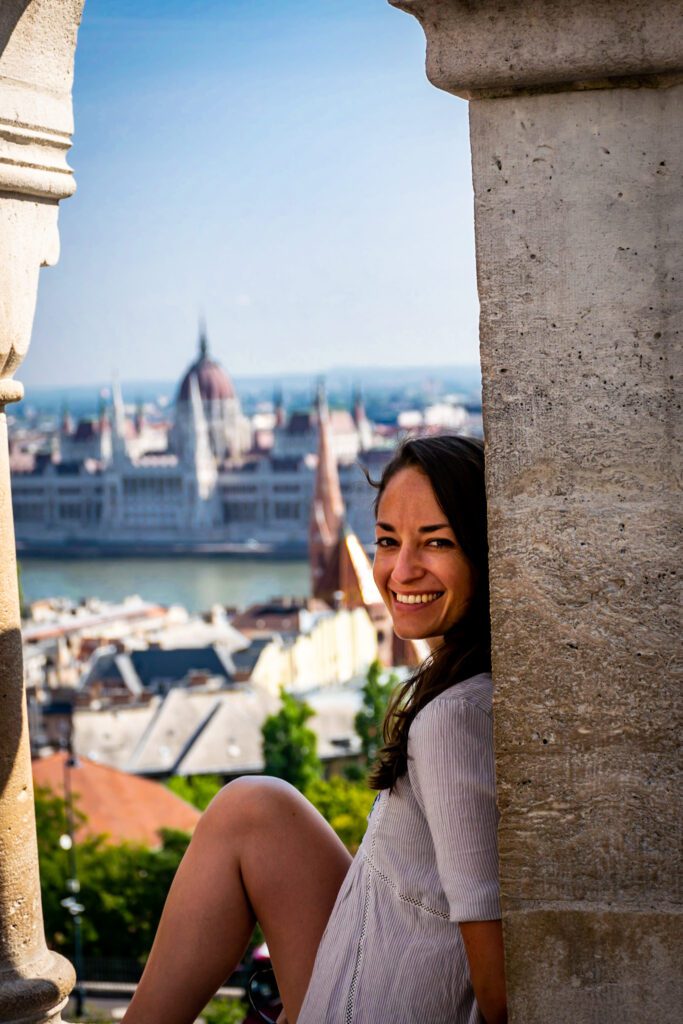
See? Look at those views. It’s even better after dark, and I highly recommend an evening stroll on the Buda side of the river to see it lit up after the sun goes down.
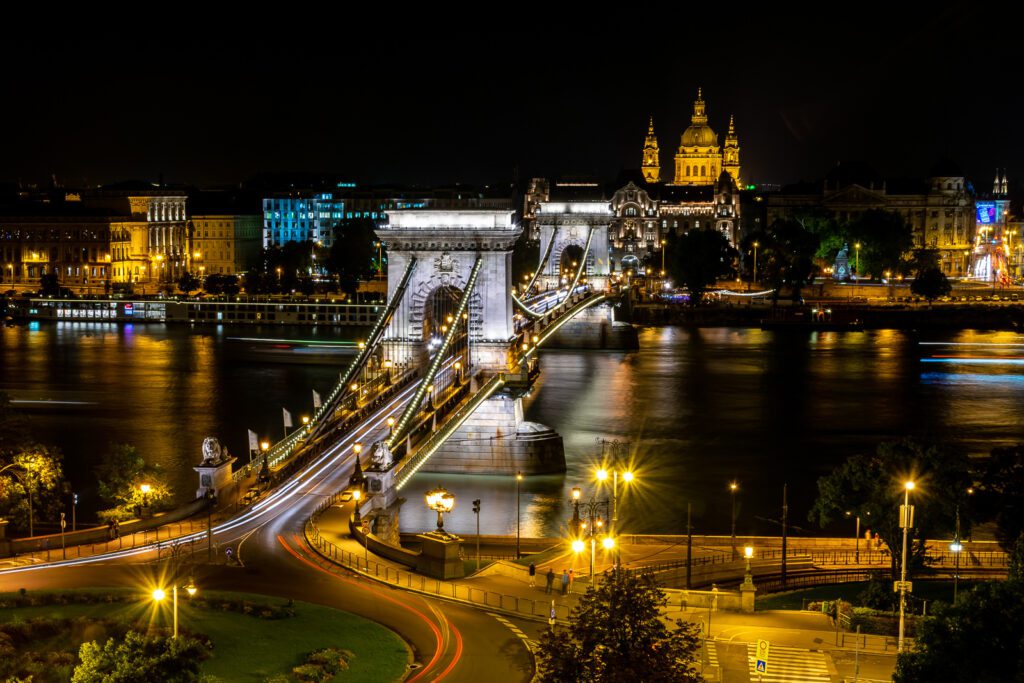
Evening: Rudas Thermal Bath
In the evening, enjoy one of Budapest’s most iconic attractions, the thermal baths. There are a dozen of them in the city, and they all provide quite unique experiences. The tradition of the baths dates back from when the Turkish occupied Hungary, and it remained to this day. Contributing to it is the fact that Budapest lies in the Carpathian Basin, where waters are full of medicinal properties.
Head to Rudas thermal bath, conveniently located at the bottom of Castle Hill. It dates back from the 16 th century, and includes a swimming pool and six steam pools, at different temperatures. But the crown jewel is the open-air rooftop pool. From there, you can enjoy a magnificent view over the river and the city, while immersed in hot waters. This is definitely an experience that will make you feel like you are “living the life” – because you are!
After a couple of hours at the baths, you will probably feel so rested that the only thing you will want to do is to relax at your accommodation.
Day 2: Parliament, Margaret Island and Ruin Bars
Your second day in Budapest is full of Hungarian culture, from the sobriety of the Parliament to the incredible nightlife in the typical ruin bars. In between, a walk on Margaret Island, in the middle of the Danube.

Morning: Tram 2, Shoes on the Danube, the Parliament
Head to Fővám square, and hop on tram 2, that will take you along the Danube. On the other bank, you can see the Castle district, that you explored the day before, from a new angle. Get off at Kossuth Lajos tér, near the Hungarian Parliament.
Shoes on the Danube
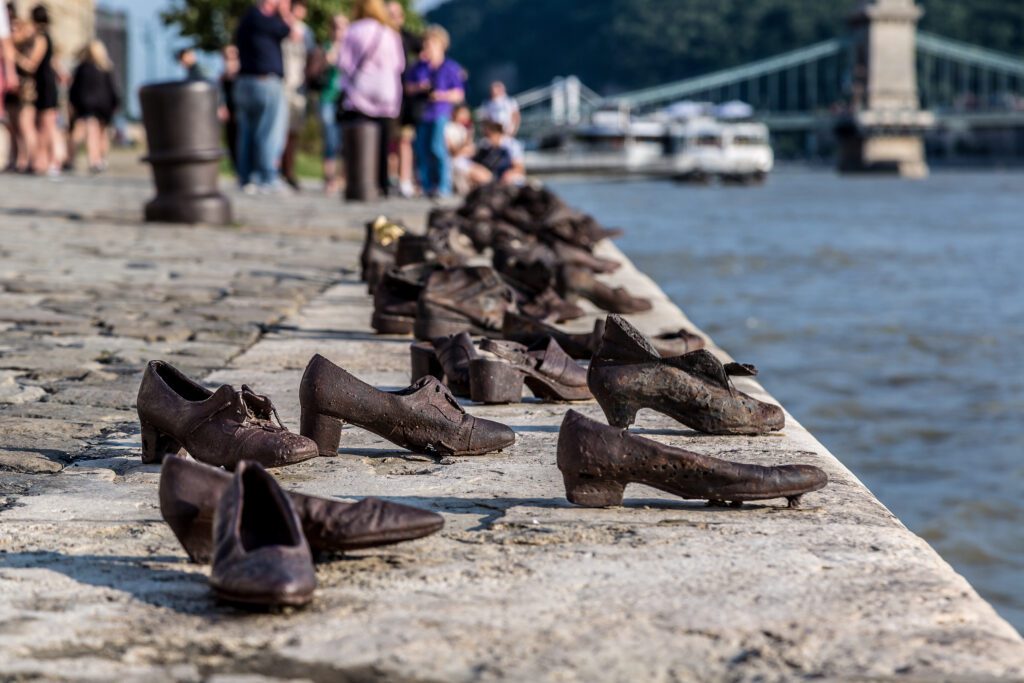
Before you head inside for a visit to the most iconic building in Budapest, go check the Shoes on the Danube . This memorial honors the Jews massacred in the Second World War, who were ordered to take off their shoes before they were shot, falling into the river.
Hungarian Parliament

Next up is a tour of the Hungarian Parliament !
This is a very popular place, so make sure to book your tickets in advance. If you show up expecting to buy your ticket on the spot, you’re probably going to be out of luck. You can book them online , 3 or 4 days before.
After the visit, your stomach will probably be demanding a pause for food. Not too far, you find one of our favorite restaurants in the city, Drop . It is 100% gluten free, delicious and offers everything from a burger to the most typical of Hungarian dishes: the goulash.
Afternoon: Margaret Island
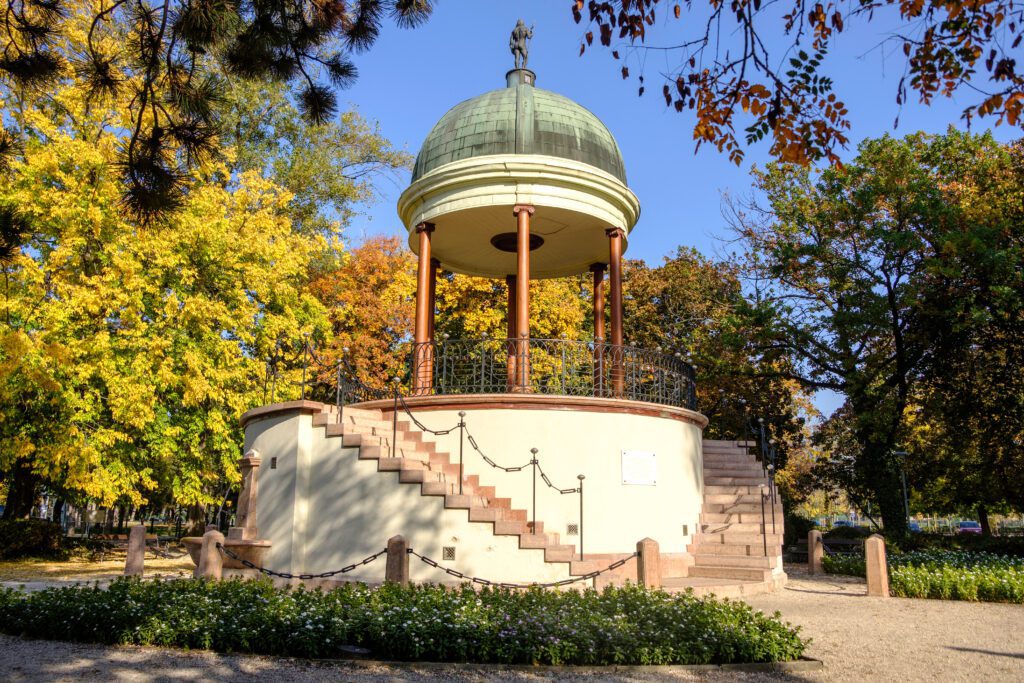
After a good lunch, the best way to burn some calories is by walking on Margaret Island.
This island of approximately 1.5 miles in length is located in the middle of the Danube, between Buda and Pest. It is a calm, green place in the middle of the city, where the locals spend time outdoors, walking, jogging, or having picnics. It is also home to a couple of interesting attractions, like a small farm and a musical fountain.
The sun is probably setting by now, so head to Buda side, not far from the island. There, you will have the front row to a beautiful event: the turning on the lights in the Parliament. As the sky gets darker and the building gets lighter, you will realize that, even though you already thought this was an imponent construction, it is even more so at night.
Evening: Budapest Nightlife, Ruin Bars

For dinner, we recommend Pata Negra Pest , a Spanish tapas restaurant with plenty of great gluten free options. If you are visiting during the high season, try booking in advance, as this is one of the most popular dinner places in the city. It’s especially lovely on warm summer evenings, when you can sit on the patio and do some good people watching. We liked it so much, we ate there twice.
When the sun goes down in Budapest, there is a place guaranteed to make sure you have a good time: the ruin bars. Mostly situated in the Jewish area, in the 7 th district, these bars are an icon of the city. The mismatched decorations, the live music, the chill atmosphere, and the randomness of everything there make these bars a must-visit, even for those who don’t normally appreciate nightlife.
The Famous Ruin Bars in Budapest

The most famous one – and the first to ever exist – is Szimpla Kert . Don‘t be scared by the line at the door, it usually moves fast. Inside, you will enjoy a bar that could also be considered a museum of the weirdness – curious?
The other one we recommend is Instant . Or should we say, “the other ones”? This bar is made up of many smaller bars, resulting in many different atmospheres, according to the room you are in. To give you an idea of how big it is, inside you will find a map of the place.
While enjoying the nightlife, make sure to try the most famous Hungarian drink, palinka. It’s a fruit brandy, with 40% to 70% of alcohol. Hungarians can get easily offended if you refuse their palinka offers while visiting them – there are very few things as engrained in Hungarian culture as this drink.
Day 3: Downtown Budapest, City Park, More Thermal Baths, and Wine Tasting
This is going to be an intense day! Starting with a visit to St. Stephen’s Basilica, moving on along Andrássy Avenue with a stop at the House of Terror, then reaching City Park where you will visit the most famous thermal baths in Budapest. Top off an amazing day with a delicious wine tasting session to explore the wide world of amazing Hungarian wine – which was a surprise to us!
Morning: Downtown Budapest
Start the day with a coffee at My Little Melbourne , whose slogan is “We love to make coffee for coffee lovers”. And we loved their coffee!
St. Stephen’s Basilica
Then, walk towards St. Stephen’s Basilica . Fun fact: it is 96 meters (315 ft.) high, exactly the same as the Parliament. The goal? Showing that both religion and legislators have equal power. Also, the number is not random, it evokes 896, the year the Kingdom of Hungary was established.

Luckily, there is an elevator that can take you up that high. For only $4, you can have one of the best views over the city, that shows you the urban tissue and lets you see as far as the Buda mountains.
Andrássy Avenue
Coming down, take a stroll on Andrássy Avenue . This could be considered the equivalent of the Champs Elysées in Paris but, let’s be honest, with a little less glamour. Still, definitely worth walking there.
On the way, you will find the House of Terror . It’s not a haunted house, but a museum that displays the terrors endured by the Hungarians during the fascist and communist regimes, throughout the 20 th century. It takes you back to the 1950’s and see what Soviet occupation in Hungary was like, a history lesson that will give you a new point of view to understand Hungarian history and culture.
I highly recommend it – it’s my favorite museum in Budapest. It’s sobering, kind of like the Anne Frank House in Amsterdam .
Afternoon: City Park and Széchenyi Thermal Bath

Now, it is a good time to try out the metro line 1 that we mentioned. Get off at Hősök Tere ( Heroe’s Square ), the entry to the City Park. Heroes Square is home to the towering monument in the middle of the plaza, called the Millennium Monument, which commemorates the Seven Chieftains of the Magyars who led the Hungarian people to the location in central Europe where they are today.
This green area is great to experience on foot. You should also check out Vajdahunyad Castle , located in the park. If you are lucky, there might be an event going on, as this is the venue where several festivals take place throughout the year.
Széchenyi thermal bath

Then, on to one of the most interesting places in Budapest: the Széchenyi thermal baths !
Yes, we recommend trying out two different thermal baths in the city, that’s how great this experience is. However, if you only try one, then this is the one to try. It’s the most touristy of the many that you’ll find in Budapest, but for a good reason: it’s huge, and comprises both inside and outside pools, with different water temperatures.
The thermal baths are another must-have experience during your time in Budapest. They’re unlike anything I’ve ever experienced before. Especially on a cool, crisp day in the early fall, it’s invigorating and relaxing to sit back in the warm, mineral-rich water (don’t stay in for more than 20 minutes at a time!) and admire the amazing architecture around you.
After this, you might feel too relaxed to even want to drag yourself somewhere else. But how can you say no to wine?
Evening: Wine Tasting
For your last evening in Budapest, we suggest a wine tour. This one , more precisely, that we did on our trip and loved so much that, to this day, sometimes we still talk about one of the wines we tried.

Even though it doesn’t get much recognition for it, Hungary is a wine country and has four main regions: Eger, Villány, Somló and Tokaj.
The latter is the most famous and its specialty is sweet wine. This also means that the wine in the country is relatively cheap, especially compared to the United States. The reason you’ve never heard of it is that only a small amount gets exported, and most of that is the super sweet variety from Tokaj.
This wine tasting class with Miki was a hidden gem and unexpected highlight for us, and I think it’s a must-do in Budapest.
Hungary has a ton of unique grape varietals, and the best rose that Alysha and I have ever had came from this wine tasting class – we still talk about it to this day.
You should probably not drink too much but well, if you do, your itinerary for the day is over anyway.
Day 4: Great Market Hall, Citadel and the Jewish District
On your last day, you will visit a traditional Hungarian market, climb up a hill for an amazing view of Budapest, and end up with a stroll around the Jewish District.
Morning: Great Market Hall and Citadel
To start your last day in Budapest, head to Váci street, a vibrant pedestrian area, with plenty of shops and restaurants. At number 74, almost in Fővám square, you will find a coffee shop perfect for your morning brew. Cafe Frei and is a Hungarian chain that offers coffees from all over the world, as well as some pastries, some of them gluten free.
The Great Market Hall
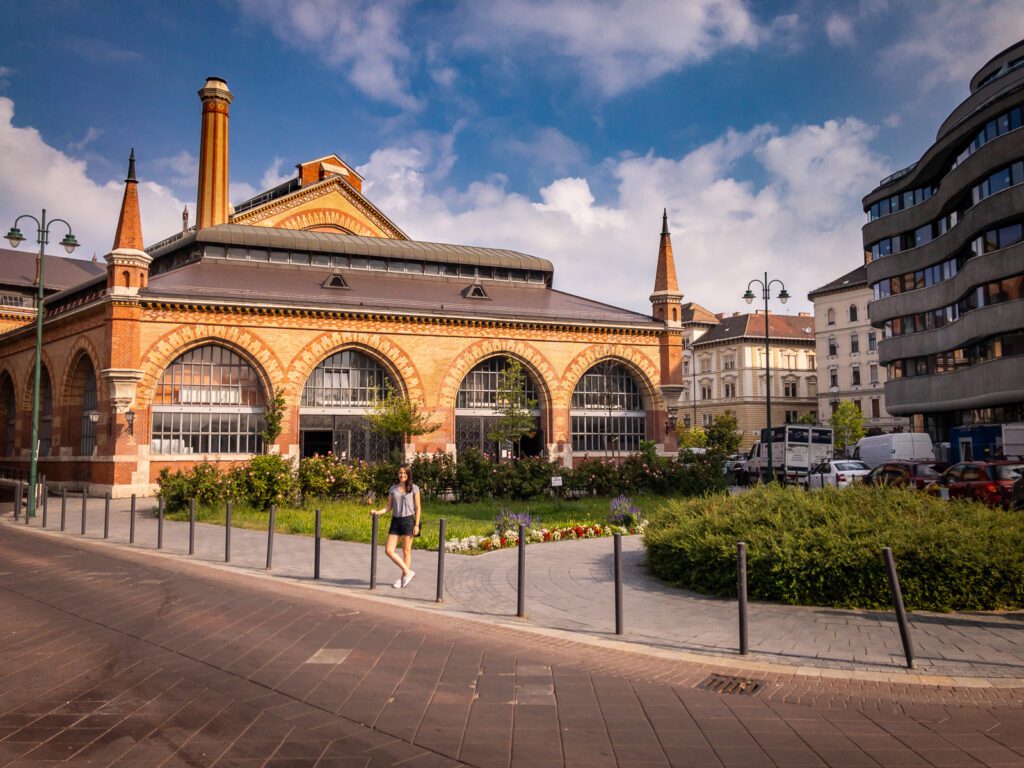
Nearby, you will see the hulking shape of Budapest’s fantastic Great Market Hall. On the ground floor, it is a traditional market, where you will find staple products in any Hungarian household: meats (including the traditional salami), vegetables and the most iconic item of Hungarian cuisine, the paprika!
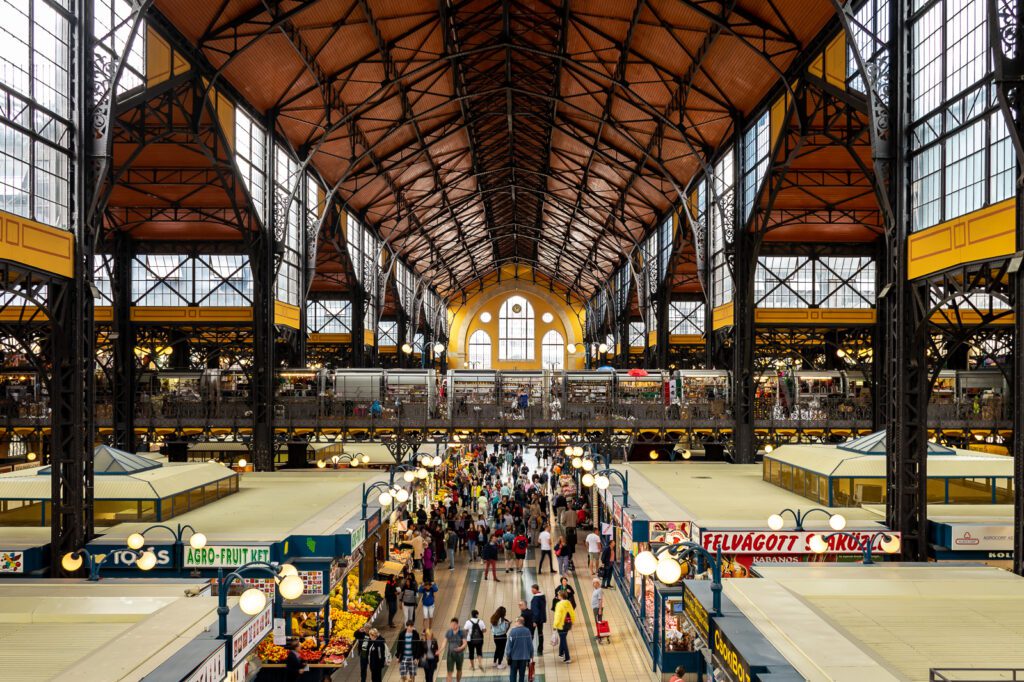
The second floor of the market is completely directed to the tourists. It offers handicraft and typical souvenirs, and some sales ladies are dressed up in traditional costumes. It is the perfect place to buy souvenirs for your loved ones.
Gellért Hill
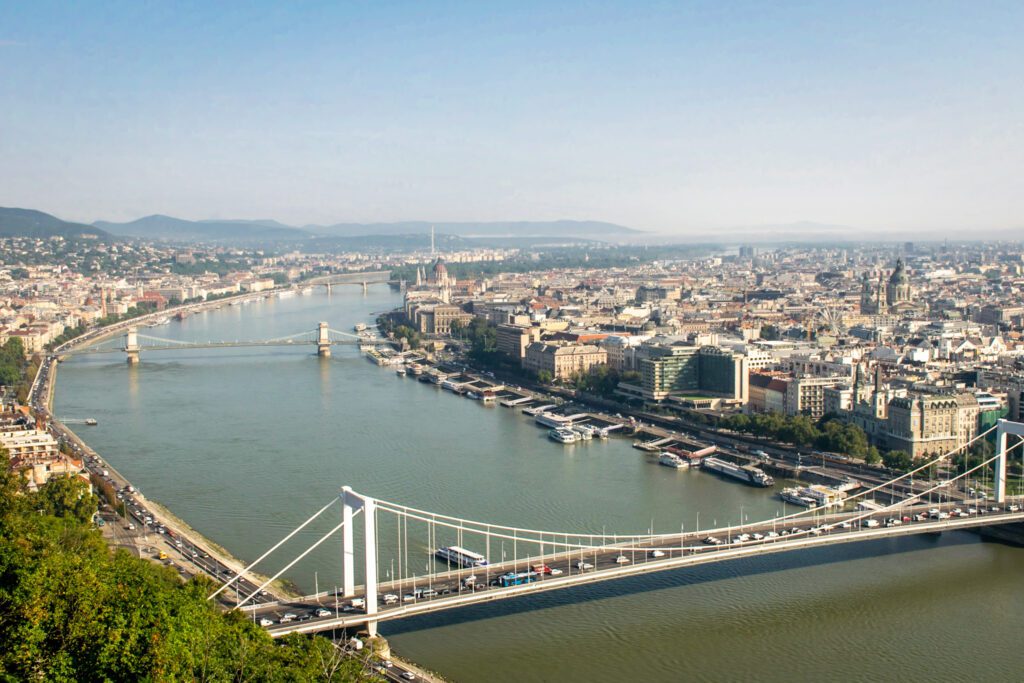
Up until now you might have realized that Budapest is a flat city. But there is a hill you should climb: Gellért.
Start at Szent Gellért square and go up until you reach the Citadel. On the way, pause on the several viewpoints that will give you an increasingly better view over the city, as you climb. Once you reach the top, you will be rewarded with the best view over Budapest!
Afternoon: Jewish District
For your last afternoon in the city, we recommend going back to the Jewish district to wander around. It has a different vibe during the day than in the night. It is full of quirky shops and cool cafes. We recommend a stop at Magvető Café , and a bite of their delicious gluten free walnut cake.
If you still have time, a visit to the Synagogue is well worth it. After all, it’s the biggest in Europe! There are guided tours every half an hour, included in the price of the ticket.
If You Have an Extra Day…
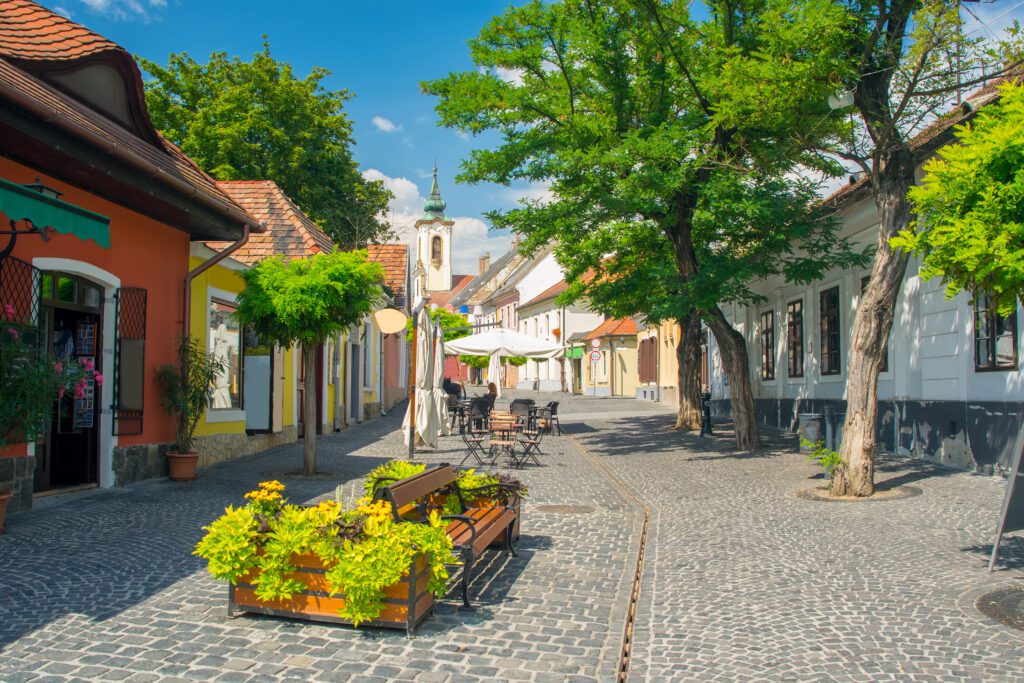
If you are lucky enough to have an extra day in Budapest, we recommend a day trip to Szentendre .
This picturesque village is accessible by train from Batthyány tér, and the journey takes around 40 minutes. Your weekly pass doesn’t cover this journey, so you should buy a ticket at the ticket office before boarding the train.
Once you get to Szentendre, you can explore the whole place on foot. Walking on the cobbled streets, you will see plenty of nice little cafes and restaurants, as well as decoration and souvenir shops. There is even a Christmas shop, where you can buy anything related to the holidays.
Szentendre lies along the Danube, so you can also enjoy some quiet time with a beautiful view sitting on the riverbanks.
For a delicious meal, try Palapa , a Mexican restaurant that offers a couple of gluten free options. It is so famous that if you mention to anyone in Budapest that you will go to Sztentendre, they will recommend this restaurant for sure.
Where to Eat and Drink in Budapest
Matt has Celiac Disease, which means he has to eat strictly gluten free or he’ll get VERY sick and ruin his vacation. If you’re eating gluten free and heading to Budapest, make sure to read our guide to gluten free Budapest .

Eating in Budapest
- Drop – Our favorite restaurant in Budapest! The place looks great, the food tastes even greater. And it’s 100% gluten free.
- Maja – Offers a daily changing menu of delicious gluten free food for affordable prices.
- Cöli Bisztró – Little 100% gluten free cafe offering pizza, pastries and the traditional Hungarian “palacsinta” (pancake).
- Mazel Tov – Israeli food with a great atmosphere. Not a dedicated gluten free restaurant, but it has several gluten free options.
- Most burger places in the city have gluten free buns if you ask for it, even if not clearly stated on their menus. Some of the best are Las Vegan’s , Epic Burger and Burger Market .
Drinking in Budapest
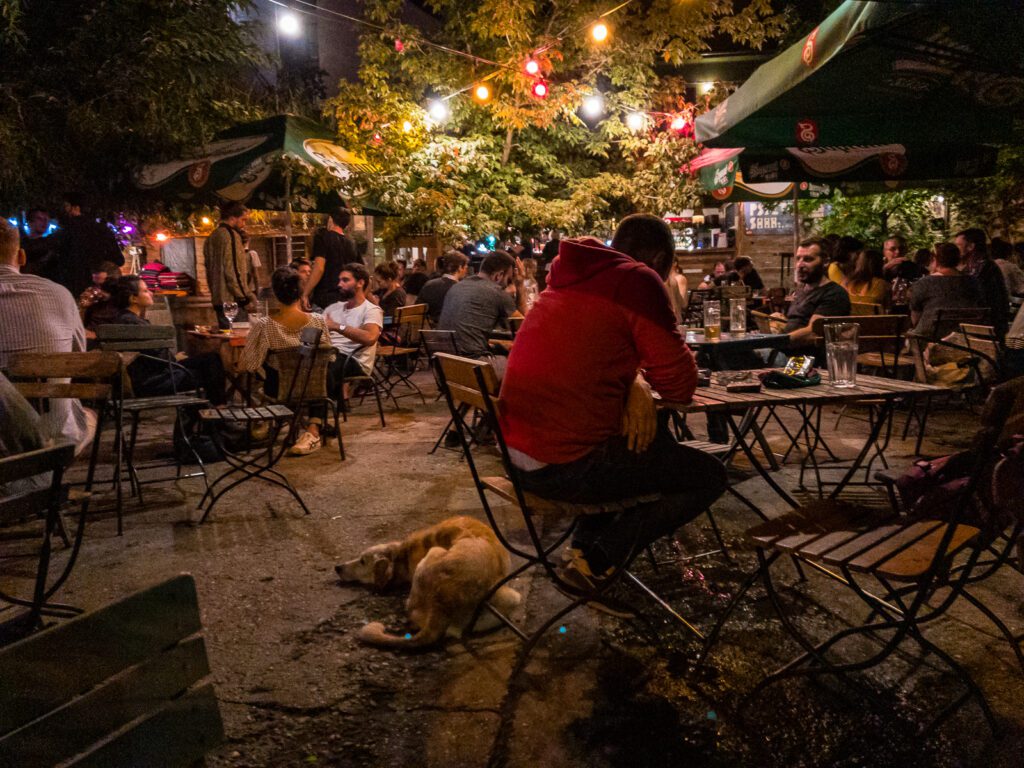
Budapest has a reputation of being the party capital of Europe. You know what that means…plenty of places to drink. Here are our top picks:
- Szimpla Kert – The first ruin bar in Budapest. Great atmosphere during the night, but also the perfect place for an afternoon drink, as it is open during the day and has some nice outdoor areas.
- Instant – Ruin bar to drink and party, one of the best nightlife places in the city.
- Kőleves Kert – Kert means Garden in Hungarian, so you can imagine what this bar is, a place with a nice outdoor area, where you can enjoy a wide variety of drinks.
- Akvárium Klub – A terrace right next to Deák Ferenc, in downtown, perfect for summer nights.
- St. Andrea Wine & Skybar – An elegant rooftop bar in the heart of Budapest. It belongs to the St. Andrea winery, from Eger, one of the most famous wine regions in the country.
- Doblo – A wine bar in the heart of the party district, offering more than 30 varieties of wine, in a cozy atmosphere.
When to Visit Budapest
Budapest has a continental weather, meaning that the winters are harsh, and the summers are hot, reaching temperatures around 100F. Still, if you don’t mind the heat, the summer is an amazing time to visit. The streets are full of life, there are plenty of events and an overall great energy across the city.
Spring (April to June) and Fall (September-October) are also good seasons to enjoy Budapest, with milder temperatures.
Winter is not the best time to visit because temperatures can drop to -20F and it gets dark around 3pm. However, if it is your only option, you will still find plenty of activities to do.
How to Get to Budapest
The best way to arrive in the Hungarian capital depends on your starting point. If you are in Central Europe, you can take a bus ( Flixbus is the fastest and cheapest) or a train (check Trainline for times and prices) to reach Budapest in a matter of hours.
Otherwise, Budapest is served by the Liszt Ferenc airport . Located in the heart of Europe, this city benefits from flights connecting it to all the major European cities. Flights to the US are also available although you might need to transfer.
Once you land at the airport, reaching your accommodation is easy – considering you will, most likely, be staying at the city center. There is a bus, 100E , going straight from the airport to Deák Ferenc square , right at the heart of Budapest. The ticket costs $3 and the journey takes around 40 minutes. Buses depart every 20 minutes.
If you prefer the comfort of a taxi, be advised that Uber and Lyft do not operate in Hungary. The only app to call a taxi is Bolt . But you can also take a traditional taxi. You will see them right in front of the door when you exit the airport terminal. A 25-minute ride to the center should set you back around $25, and you can pay the driver in cash or card.
Getting Around Budapest
Budapest’s size makes it perfect to explore on foot. This will also allow you to explore the backstreets and hidden alleys that make this city a wonderful place in each corner you turn.
However, if you prefer to use public transportation, you are in luck! Central Budapest has one of the best transportation systems in Europe, including metro, bus and tram, some of which run all night.
In fact, even though we recommend exploring the city on foot, we strongly advise you to take metro line 1 or, as the Hungarians call it, “kisföldalatti” (“the small underground”). It is the oldest metro line in mainland Europe and the world’s second oldest, after the London Underground.
Except for some buses, you can not buy the travel tickets on board. You must purchase them beforehand on one of the many machines in the city, located at stations and stops. A single ticket costs around $1 but if you plan on using transports often during your visit, the best option is to get a weekly pass for $16, that gives you unlimited access. You can check the different types of tickets available on the BKK page .
How Many Days in Budapest?
In general, I always recommend spending more time in each city, rather than trying to fit in as many cities as possible and avoid the feeling of needing a vacation from your vacation.
Which begs the question, how many days should you spend in Budapest?
You will want plenty of time to see all the key sights, like the world-famous thermal baths, and still have time to wander the romantic cobblestone streets and relax at one of Budapest’s best coffee shops. The last thing you want to do is turn your Budapest itinerary into a whirlwind that makes you want a vacation from your vacation.
To answer your question of how many days in Budapest, my recommendation would be at least 3-4 days .
Well, it looks like you have a magical 4 day trip to Budapest ahead of you. I’m totally jealous – it’s one of my favorite cities in the world, and I would move there in an instant. I still might, in fact.
Between the beauty of the city, the rich culture and history, and the vibrant people, Budapest is one of the most underrated cities in Europe.
It is also one of the places where tourism has increased the most in the past few years. People are quickly realizing that Budapest might be, in fact, one of the best travel destinations in the world. I am sure you will understand why as soon as you set foot there.
About the Contributor : Diana Bernardo is a former journalist with an endless love for travel. She has been to 30+ countries in Europe and lived in 4 of them. She writes about her experiences and favorite destinations regularly on Medium and on her blog .
Matt is the founder and main writer behind Wheatless Wanderlust, which he started back in 2018 as a way to share his gluten free travel guides with his fellow Celiac travelers.
Since then, Matt and his wife Alysha have visited 18 national parks, spent three months in Europe and six weeks in Colombia, and have explored every corner of the Pacific Northwest, which is where Matt grew up.
He writes super detailed guides to the places they visit, bringing together personal experience and historical context to help YOU plan an amazing trip.
which exact location were u able to get the overview of the parliament building?was it buda hill?can u give me the direction?
Hey there! Which picture are you asking about? For the straight on view, it’s across the river right in front of Batthyány tér metro station. For the view from above with the Chain Bridge and Parliament, it’s from the railing just in front of the Buda Castle. This is the post where I discovered some of the photo spots: https://hungaryphototours.com/top-photography-spots-budapest/
Thank you for this wonderful guide! When I was in Budapest recently I googled ‘4 days in Budapest’ and fortunately for me your blog came up. While I didn’t make it through your whole list, it was a great overview. I particularly enjoyed the Rudas Thermal Baths and the wine tasting with Miki, which I wouldn’t have heard about elsewhere. Looking forward to reading more of your itineraries!
Heading to Budapest next week and this is golden! Thank you!!
Leave a Reply Cancel reply
Your email address will not be published. Required fields are marked *
This site uses Akismet to reduce spam. Learn how your comment data is processed .
- Meet the Team
- Work with Us
- Czech Republic
- Netherlands
- Switzerland
- Scandinavia
- Philippines
- South Korea
- New Zealand
- South Africa
- Budget Travel
- Work & Travel
- The Broke Backpacker Manifesto
- Travel Resources
- How to Travel on $10/day
Home » Europe » Budapest
16 BEST Places to Visit in Budapest (2024)
Nicknamed the Paris of the Easy, Hungary’s capital city of Budapest is a treat for the senses. It boasts beautiful historic architecture, is famous for classical music, has many thermal spas, and there are plenty of places to sink your teeth into traditional Hungarian cuisine.
Split in two by the Danube River, today’s city of Budapest is actually an amalgamation of three former cities. Many people know about Buda and Pest, but the third area – Obuda – is often overlooked. Lots of travelers tend to stick in the area that they are staying and thus miss out on many of the city’s highlights.
I’ve created the ultimate guide to the best places to visit in Budapest so that you don’t miss a thing. Combining places in all three parts of the city and a mixture of well-known Budapest must-dos and places that are more off the beaten track, there’s no better list to arm yourself with when exploring Hungary’s vibrant capital.
Spoiler alert: Some of these best places to visit in Budapest are sure to blow you away!
Need a place quick? Here’s the best neighbourhood in Budapest:
These are the best places to visit in budapest, faq on the best places to visit in budapest, some more of the best places to visit in budapest.
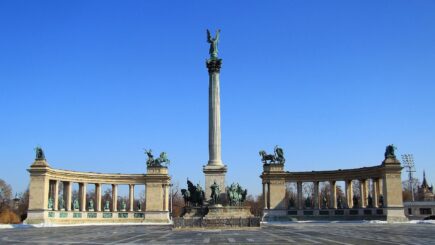
District VI, Terézváros, is one of the smallest yet most densely populated neighbourhoods in Budapest. Located on the Pest side of the Danube, this lively district is a hub of excitement and activity.
- Dive deep into Hungary’s communist and fascist history at the House of Terror Museum.
- Wander along the iconic Andrassy Avenue, a UNESCO World Heritage Site.
- Get back to nature and take a relaxing stroll through Városliget, one of the largest public parks in the city.
And, without further ado, here are the best places to visit in Budapest:
I know you are absolutely rip-roaring ready to go to Budapest already. So, check out where some of the best Airbnbs in Budapest are and book yourself an excellent home away from home before embarking on your adventure.

Unlock Our GREATEST Travel Secrets!
Sign up for our newsletter and get the best travel tips delivered right to your inbox.
#1 – Hungarian Parliament Building – A great place to see in Budapest if you love architecture
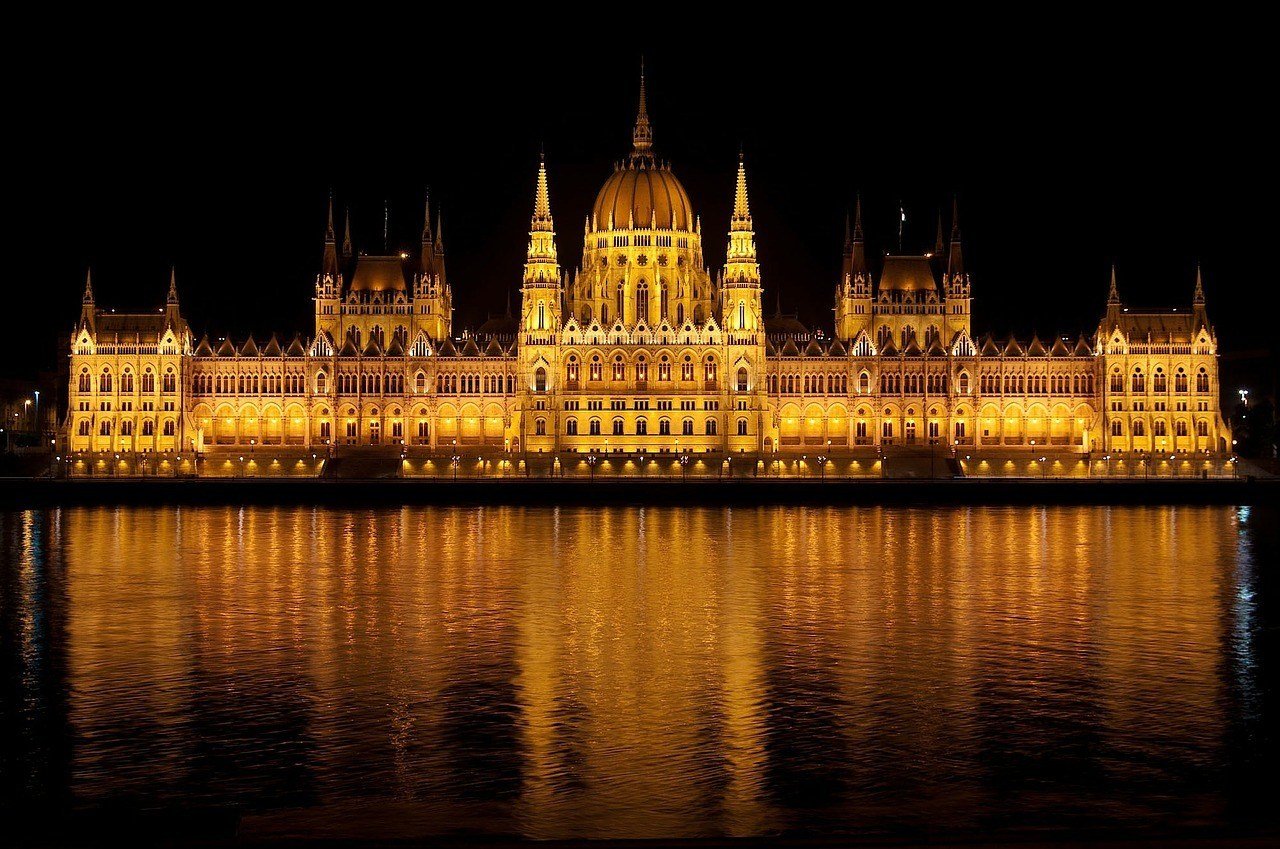
- Prominent landmark;
- Guided tours;
- Impressive architecture;
- Riverside setting.
Why it’s awesome: If it’s your first time visiting Budapest then you may wonder what the awesome building sat on the river banks is. The Hungarian Parliament Building is one of the most famous landmarks in Budapest. Sitting on the edge of the Danube River, the cream and red architectural gem is a beautiful sight. Open since 1902 it is one of the biggest buildings in Hungary. Inside, there are more than 650 rooms (including two identical parliament halls), 10 courtyards, and 29 sets of stairs.
The interiors are symmetrical and there’s lots of impressive artwork, statues, stained glass, and other decorative features. The striking Gothic Revival building also has Baroque and Renaissance elements. Topped with a mighty dome, the spires, turrets, and towers look especially fairytale-like when illuminated at night time, and the building casts gorgeous reflections on the shimmering waters of the Danube.
What to do there: Admire the handsome building from the outside, both from across the river and from a closer perspective to see the many sculptures of Hungarian leaders and other historical figures that adorn the external walls. Take a 45-minute guided tour of the interiors to be further dazzled by beauty. (
Top tip: book your tickets online to save queuing!) Climb the grand staircase, flanked by lion statues, to reach the main entrance. Inside you can marvel at exquisite frescoes, more sculptures, mosaics, and stained glass. Step into the impressive hall, visit the old House of Lords, peek inside a decadent lobby, and view the alluring Hungarian Crown Jewels.
#2 – Széchenyi Thermal Bath – Great place to visit in Budapest for couples!
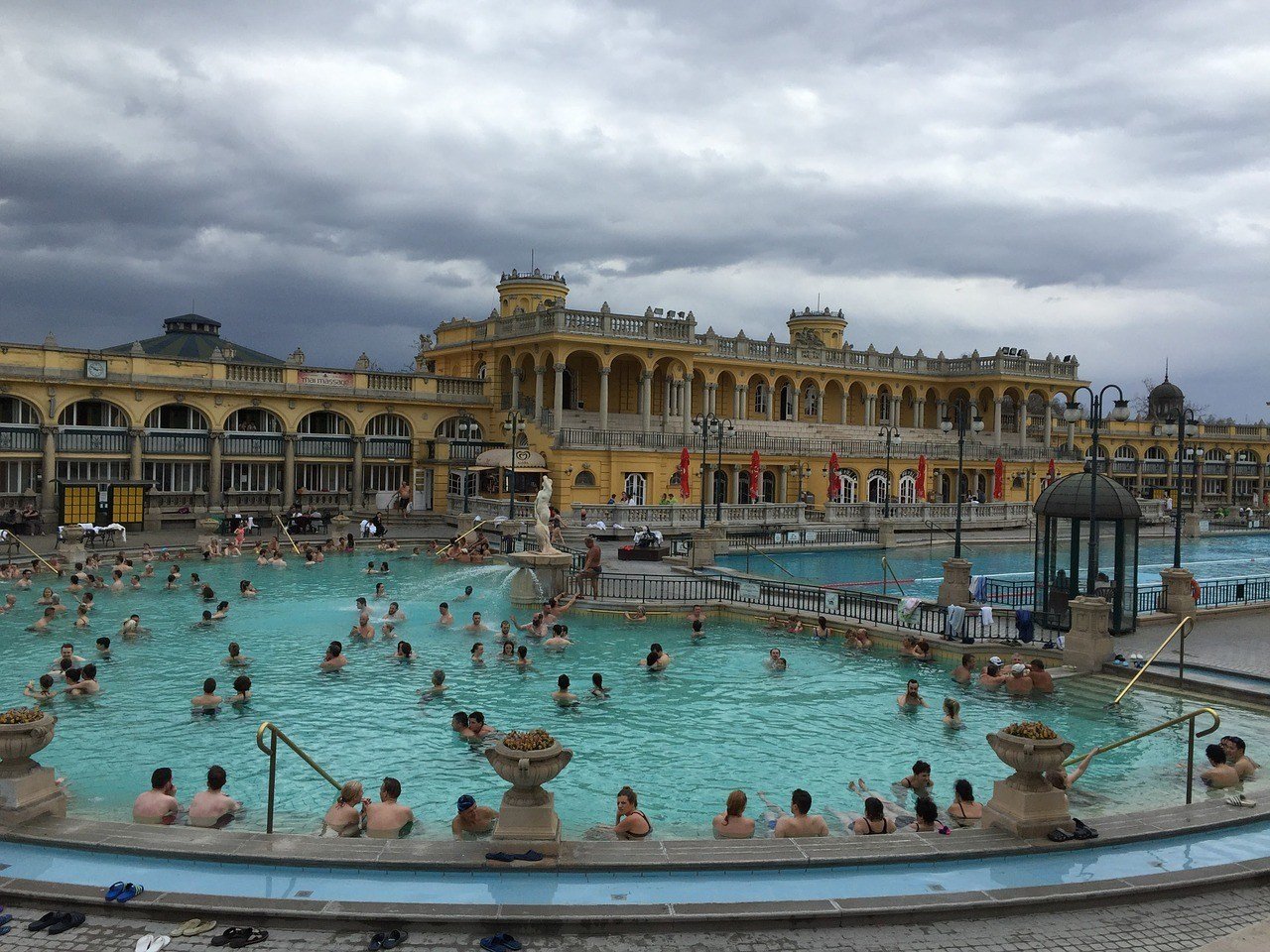
- Beautiful architecture;
- Romantic atmosphere;
- Natural hot springs;
- Various spa treatments.
Why it’s awesome: The largest and most famous of Budapest’s thermal baths, Széchenyi Thermal Bath is a great place for anyone looking to unwind and add something different to their trip. Although suitable for groups of friends, families, and solo explorers, it’s also one of the most romantic things to do when you travel to Budapest.
The naturally heated spring waters were first discovered in the late 1800s and the bathhouse later opened in 1913. The waters have medicinal and soothing properties, thanks to the diverse mineral content and constant heat. With indoor and outdoor bathing areas, it’s possible to bathe here all year round. The palatial building itself is impressive, built in a neo-Baroque style, and there are various ways to treat yourself to some TLC while at the spa.
What to do there: Ogle the handsome palace and explore its diverse areas, from the beautiful yellow façade and the main hall with its chequered flooring to the gigantic outdoor pool filled with deep blue water and the smaller interior pools.
Choose your favourite from the 18 pools and hop in to soothe away any stresses and strains, aches, and pains. You will probably want to spend at least a couple of hours at the spa trying out several of the pools. There are also a bunch of saunas and if you’re feeling brave, some plunge pools too. Though I much prefer bathing in the 36-degree pool. Lush.
Book a massage for some extra pampering—special couples’ massages are available too. Enjoy features like saunas, steam rooms, water jets, and whirlpools. On a sunny day, you can unwind alongside the water with a nice cool drink.

With a Budapest City Pass , you can experience the best of Budapest at the CHEAPEST prices. Discounts, attractions, tickets, and even public transport are all standards in any good city pass – be sure invest now and save them $$$ when you arrive!
#3 – Castle Hill – One of Budapest’s coolest historical sites!
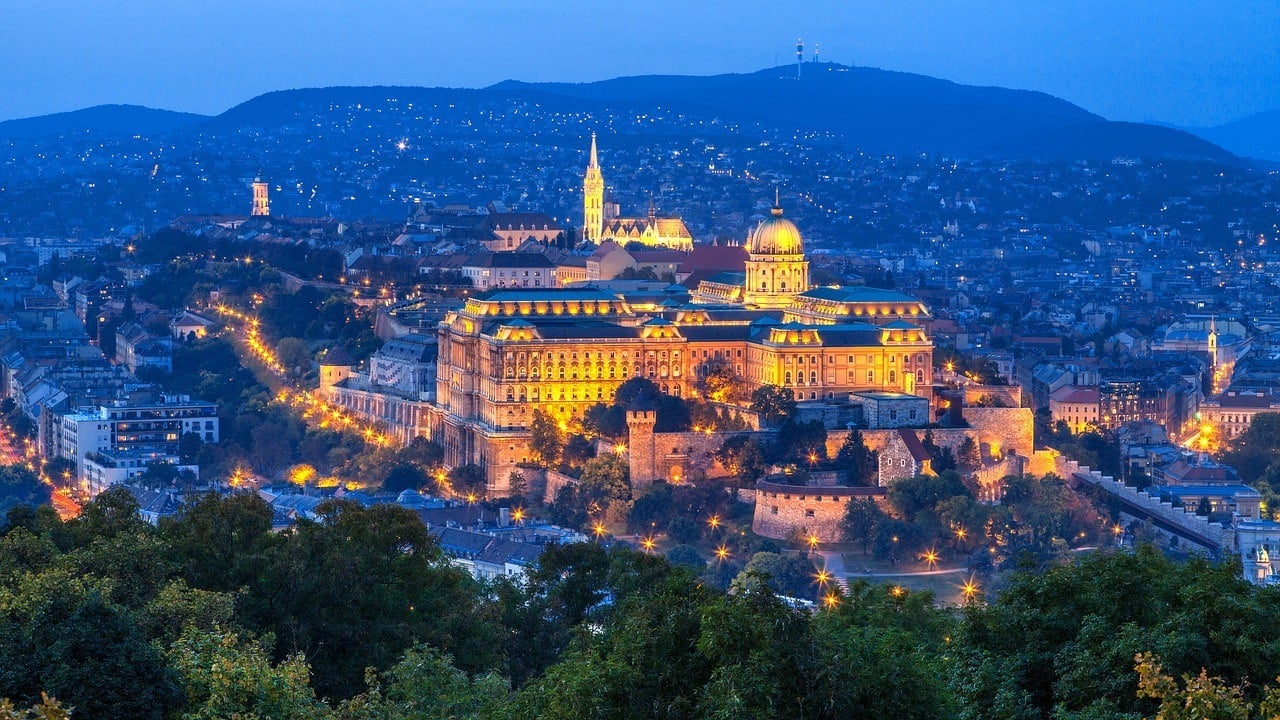
- Diverse attractions;
- Long history;
- Awesome views;
- Interesting caves and tunnels.
Why it’s awesome: Perched on top of Castle Hill, the UNESCO-listed Buda Castle is one of the most famous places in Budapest. The Buda Castle is the former residence and stronghold of Hungarian kings of old, the stunning palace can trace its history back to the 1200s. Most of the present-day Baroque beauty, however, was built in the mid-1700s, and the oldest remaining section was constructed in the 1400s.
Today, the Buda Castle is home to the Budapest History Museum, the Széchenyi National Library, and the Hungarian National Gallery. To be honest, the Buda Castle isn’t Hungarian National Gallery which proves that you should never judge a book by its cover – the inside is stunning! Mathias Church on the other hand is one of the main reasons to venture up the hill. Just the roof is worth checking out, as it’s made entirely from porcelain and intricately designed.
In addition to the Buda Castle and Mathias Church, Castle Hill boasts many other cool things to see and do. There are caves and passageways beneath the hill, used for various purposes over the years. Some of the underground chambers were used as air-raid shelters and a hospital during World War II. Other points of interest in Budapest’s Castle Hill include the Fisherman’s Bastion, Matthias Church, and several charming walkways and squares.
What to do there: Explore the streets surrounding the hill to see the eye-catching blend of quaint homes and churches in various architectural styles, including Baroque, Medieval, and Neoclassical. Stroll along the atmospheric street of Uri Utca (Gentlemen’s Street) and appreciate the architectural beauty.
Enter the Labyrinth beneath the hill to walk through subterranean passages and caves, visit an old war-time hospital (now converted into a museum, the Rock Nuclear Bunker Museum), stand in a nuclear bunker, and learn more about past uses of the caves, caves around the world, war-time history, and nuclear weapons. The Rock Nuclear Bunker Museum is probably one of the coolest and yet most underrated museums in Budapest.
See ancient Turkish tombstones that stand in front of the hill. Ride the funicular up the hill and get an impressive up-close view of the spectacular palace. Visit the museums inside the castle and marvel at the lavish interiors. Walk through pretty squares like Trinity Square and Andrew Hess Square, admire the views over the city, see various statues and memorials, and have a look inside landmarks like the House of the Hungarian Culture Foundation, the old Town Hall of Buda, and the ruins of St. Nicholas Tower.
Two major hotspots in Budapest are located on Castle Hill: Matthias Church and the Fisherman’s Bastion. The Baroque Matthias Church dates back to the 1260s and was once used as a mosque. The whimsical Fisherman’s Bastion has splendid designs and offers great views over the Danube river.
Look out for interesting statues and sculptures as you explore the complex, including the Fountain of the Fishing Children, Matthias Fountain, the War and Peace memorial, Turulbird, Horseherd, and the Monument of Prince Eugene of Savoy.
#4 – Szabo Ervin Library – A nice non-touristy place to visit in Budapest
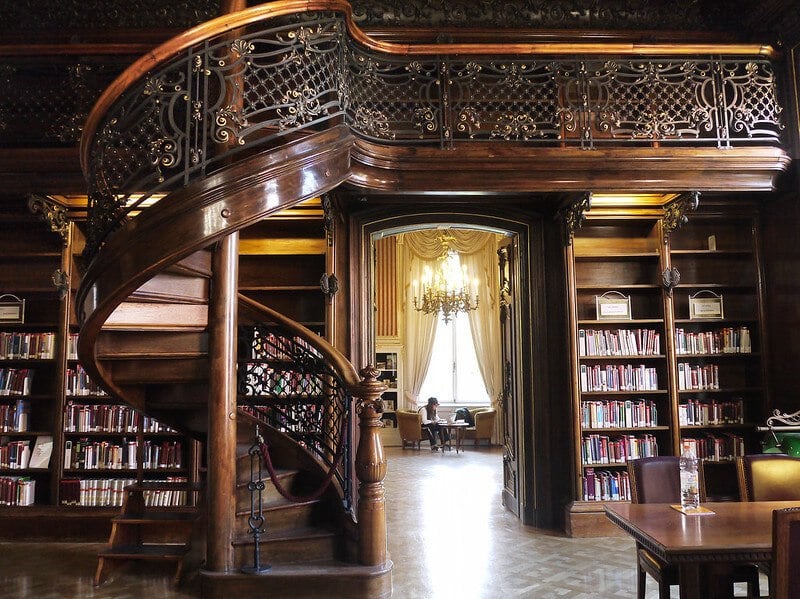
- Off the beaten track;
- Opportunities to relax and escape the crowds;
- Beautiful surroundings;
- Secret feeling.
Why it’s awesome: Close to the Palace Quarter, the charming Szabo Ervin Library is an offbeat hidden gem to add to your Budapest itinerary. A peaceful retreat in the bustling heart of the city, it takes visitors back in time and offers a sanctuary of calm.
Located in the historic Wenckheim Palace, built by a local aristocrat in the late 1800s / early 1900s, it has since been surrounded by a modern library. The elegant and intimate library is quite difficult to find, but it’s well worth seeking out to admire the interiors and relax in splendour. It’s a pretty cool place to stay in Budapest .
What to do there: Explore the Central Library and seek out the hidden Szabo Ervin Library within the larger complex. The former mansion now forms the reading rooms of the library. Travel back in time and feel like you’ve stepped into a lavish abode, complete with dark wood walls, a spiral staircase, and atmospheric chandeliers.
Settle into a comfy leather seat and bury yourself in the pages of a great book. Your surroundings and the words on the pages help to transport you to another time and place and the neo-Baroque designs are impressive.
#5 – Hungarian State Opera House – One of the most amazing places in Budapest!
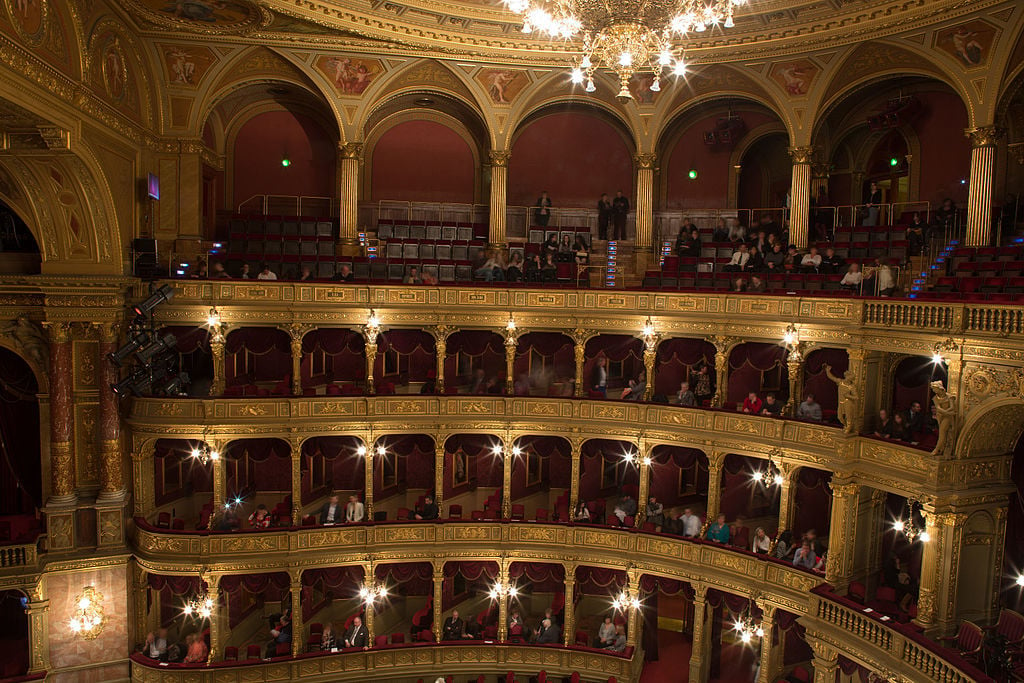
- Historical building;
- Beautiful designs;
- Excellent acoustics;
- Hosts varied program of musical events.
Why it’s awesome: The Hungarian State Opera House is one of the grandest attractions in Budapest. Construction began on the handsome building in the 1870s and the opera house opened in 1884. Today, it is the country’s second-biggest opera house. Built in a neo-Renaissance style with several Baroque details and a musical theme, it is beautiful both inside and out.
It has hosted a number of famous performers over the years and is the home of the traditional Budapest Opera Ball. Performances at the opera house continue to draw large crowds and the acoustics are world-class. Indeed, it is often said to be one of Europe’s most beautiful opera houses with some of the best acoustics in the continent.
What to do there: Appreciate the fine details of the symmetrical building, taking in the opulent decorative touches and artistic features. See the statues of Franz Liszt and Ferenc Erkel (composer of the Hungarian national anthem) that stand proudly in front of the building, and take a daily guided tour (available in several languages) to admire the gorgeous interiors.
The marble columns and ceiling murals of the nine Muses inside the foyer help to set the scene. Ascend the wide stone steps, lit by wrought-iron lamps, be dazzled by the sublime main hall (complete with a huge chandelier and paintings of Greek deities), see the royal box with its symbolic sculptures, and spot other art throughout the building. You can also book tickets to attend a high-class performance.
If you are travelling to Budapest in the summer, make sure to check out Heroes Square, which also has some live performances and events during the weekends.
#6 – House of Terror – Possibly one of the most important places to visit in Budapest
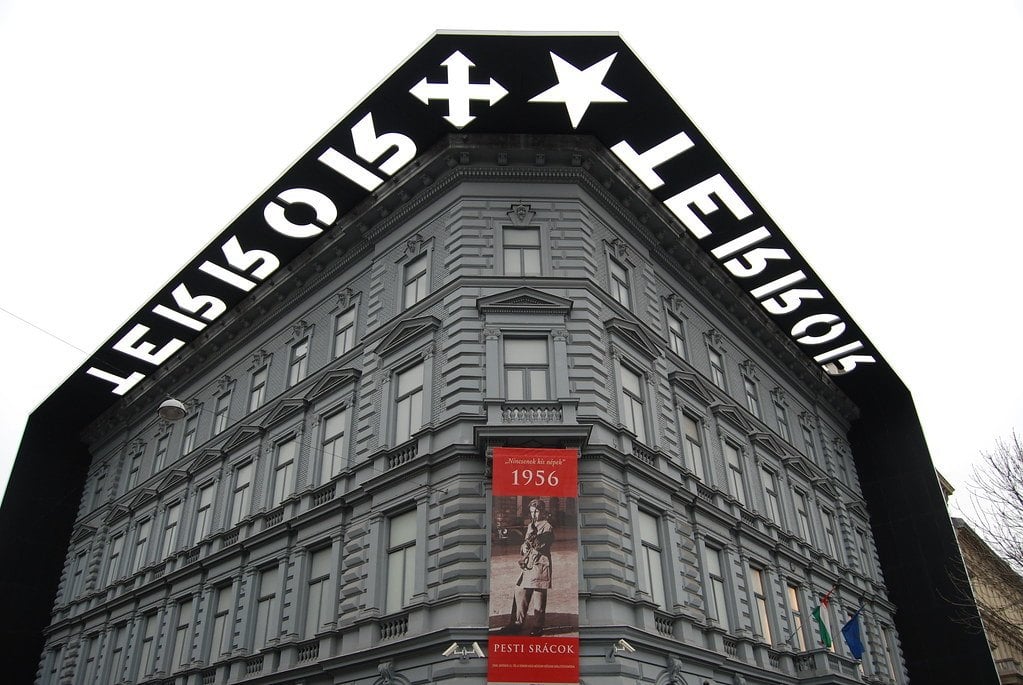
- Vital educational experience;
- Learn more about Hungary’s turbulent and troubled past;
- Memorial to victims;
- Audio tours available.
Why it’s awesome: The House of Terror is an informative, moving, and thought-provoking museum and a memorial to those who suffered under the Nazi and Communist regimes in Hungary. It is a Budapest must-do for anyone who wants to know more about the nation’s past.
While a visit is sure to stir up a range of emotions, it’s a vital place to teach lessons from times gone by. The stern-looking building was once the city’s Nazi headquarters. Despite only being in control for a short period, the group tortured and murdered hundreds of victims, mainly Jews, in the underground cellar, dead bodies later tossed into the river.
A short while later, the Soviet Union took control of the city and used the building as the head office of the State Security Authority. A brutal and feared organisation, it sought to control the people through fear and oppression.
Spies kept an ever-watchful eye on the population and many people were tortured and killed. The building is a painful reminder of the scars left behind in Budapest and Hungary by power-hungry and cruel regimes. It has been open as a museum and memorial since 2002.
What to do there: Shudder as you look at the imposing and drab building from the outside and mentally prepare yourself for the harrowing scenes to come. While there’s good information in English, an audio tour really helps you to delve deeper into the city’s tragic story.
Explore displays and see gruesome exhibits that bring the country’s horrifying past to life, learning more about the times of Nazi and Communist control. One of the biggest items is an old tank. You’ll see how the building played a pivotal role in the past and learn about the hardships faced by Hungarian people.
For many visitors, the most jarring section is the cellar network. Descend underground and stand in rooms and tunnels where horrific events took place.

A new country, a new contract, a new piece of plastic – booooring. Instead, buy an eSIM!
An eSIM works just like an app: you buy it, you download it, and BOOM! You’re connected the minute you land. It’s that easy.
Is your phone eSIM ready? Read about how e-Sims work or click below to see one of the top eSIM providers on the market and ditch the plastic .
#7 – Vajdahunyad Castle – One of the most romantic places to visit in Budapest!
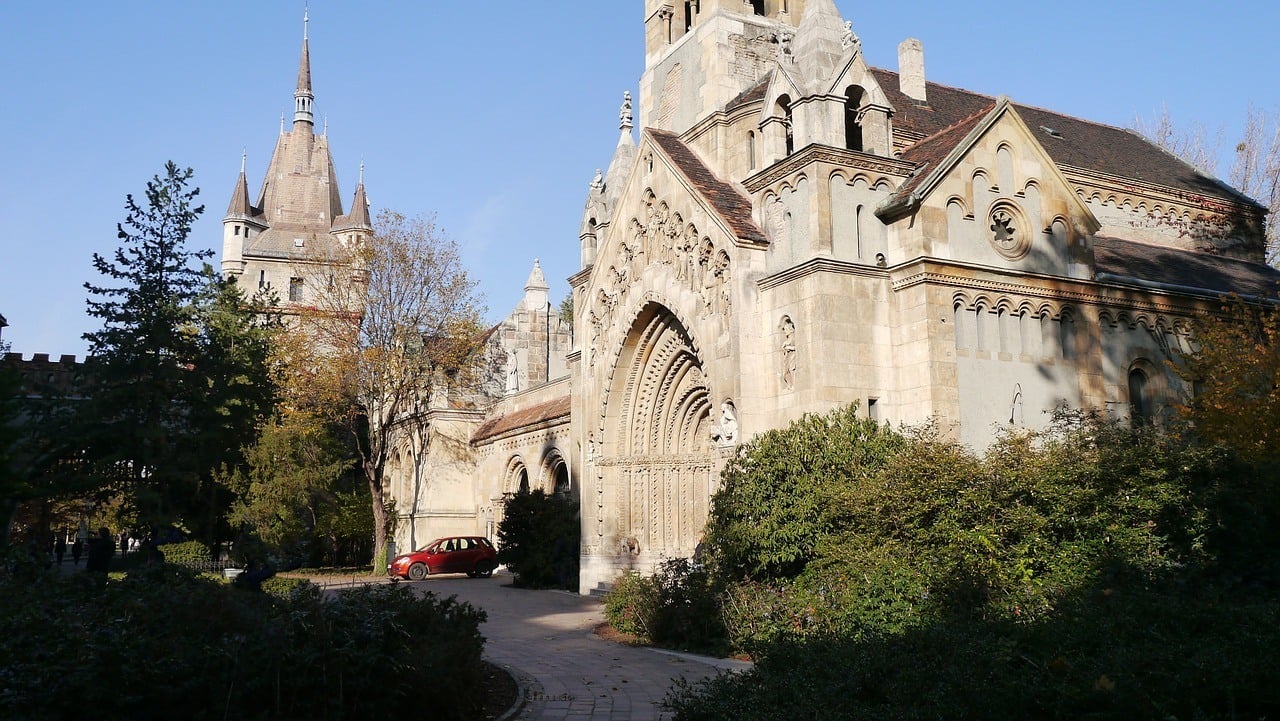
- Whimsical and unusual sight
- Lovely grounds
- Interesting museum
- Blend of architectural styles
Why it’s awesome: One of the most charming, romantic, and attractive landmarks to see when visiting Budapest, Vajdahunyad Castle is located in City Park. Despite its ancient appearance, the fairytale-like building is only a little more than a century old. The original castle was built from cardboard and wood as a temporary feature for the Hungarian Millenarian Festivities.
It had become such a popular landmark by the time that it was dismantled that it was subsequently rebuilt in sturdier materials. Sitting alongside a lake and surrounded by verdant nature, the folly blends various architectural styles from across the country. From Renaissance and Baroque to Gothic and Romanesque, the different styles certainly help to create a visual treat.
What to do there: Take a stroll around the lovely grounds, hand in hand with your significant other. There’s no charge to enter the castle’s gardens and courtyards and appreciate the magnificent building from the outside. You can also see a number of large statues.
Go inside to visit the Hungarian Agricultural Museum, home to a wide selection of farming tools and implements as well as folk and everyday objects. Exhibits include clothing, tools, weapons, and more. When you’ve finished, why not keep the romance alive for longer with a boat trip on the lake?
#8 – St. Stephen’s Basilica – One of the most religious places to see in Budapest
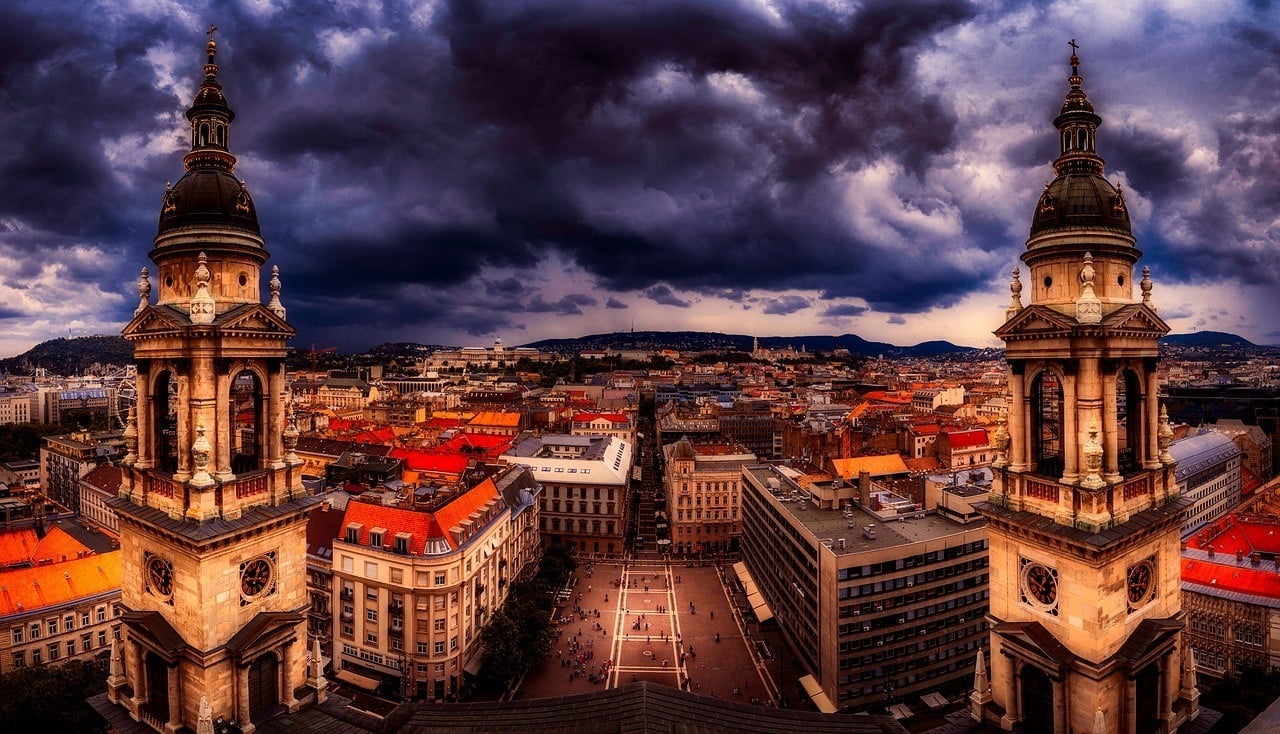
- Large place of worship;
- Fascinating artefacts;
- Photogenic building;
- Terrific city views.
Why it’s awesome: Named after the first king of Hungary, St. Stephen’s Basilica is one of the largest churches in all of Hungary. The fabulous building can fit up to 8,500 worshippers at any given time. Located on the Pest side of the River Danube, it is one of the most recognizable landmarks in Budapest.
Standing on the site of an old theatre, the construction of St. Stephen’s Basilica began in the mid-1800s. Built in the shape of a Greek cross, two soaring bell towers flank the main Neoclassical dome-topped structure. Filled with religious art and artefacts and with an air of tranquil spirituality, the church is also home to several gigantic bells (including the biggest in the country, which only rings out on very special occasions).
What to do there: Gaze in wonder at the fantastic place of worship before letting your eyes adjust to the dim light inside. There is no charge to look around the main part of the church or attend a religious service, but a guided tour will provide many more insights and help you to spot the finer details that you may otherwise miss. Fees are payable to visit the tower and treasury, but both are well worth the costs.
Take the elevator (or climb the 360-plus stairs) up the tower for far-reaching panoramic views across Budapest. See an incredible array of religious memorabilia in the Treasury. Don’t miss visiting the reliquary, which is said to contain the corpse hand of Saint Stephen I of Hungary! During the summer, you can hear the Basilica Choir sing each Sunday, and there are regular musical performances at St. Stephen’s Basilica throughout the week too.
#9 – Margaret Island – A perfect place to visit in Budapest if you are on a budget!
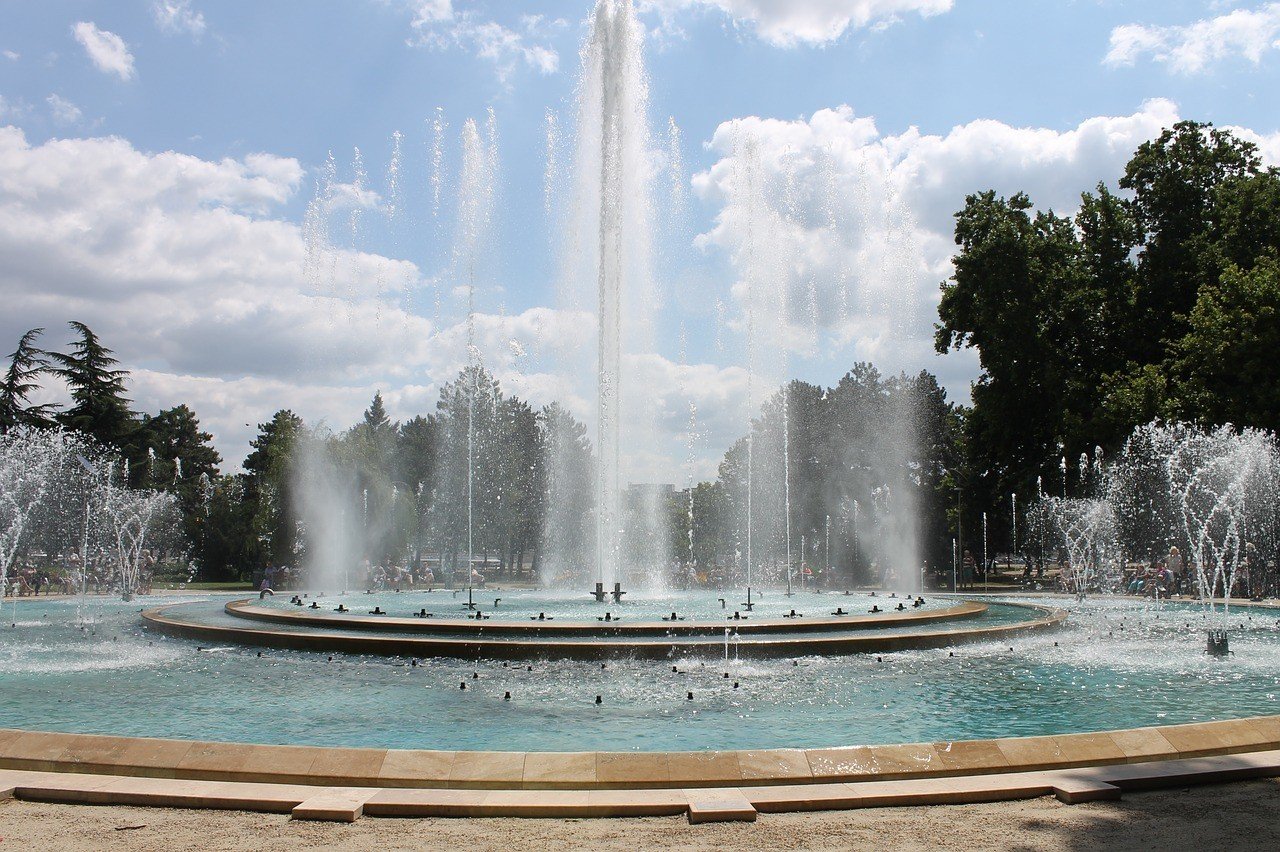
- Ancient ruin;
- Different leisure activities;
- Musical fountain;
- Pretty parks.
Why it’s awesome: Budapest can be expensive at times so this is a great place to come if money becomes a bit tight. Located in the River Danube, the charming Margaret Island is 96 hectares (238 acres) in size. It is connected by a bridge. Mainly covered in lush parks, there is no charge to wander around the island and soak up the sights. (Do note that some attractions on the island do have entry fees, though.)
There are some medieval-era ruins on the island, legacies from times gone by when the island was filled with religious buildings, convents, and monasteries. They include the remains of a Premonstratensian church from the 12 th century and Dominican and Franciscan churches from the 13 th century. Today, there are diverse sightseeing and leisure opportunities.
What to do there: Cross to the island on the Margaret Bridge, pausing to enjoy the great views along the Danube. Travel back in time as you explore ancient ruins, climb to the top of the 1911 Art Nouveau Water Tower for great views, stroll through the Japanese Garden, watch squirrels scampering through the parks, and see animals typical to the island at the small zoo.
See the 1973 Centennial Memorial, which was erected to celebrate the 100 th anniversary of Budapest’s unification. In the summer, watch the beautiful musical fountain in action. You can visit the large swimming pool, thermal baths , running tracks, athletics centre, too.
#10 – Semmelweis Medical Museum – Quite the quirky place in Budapest!
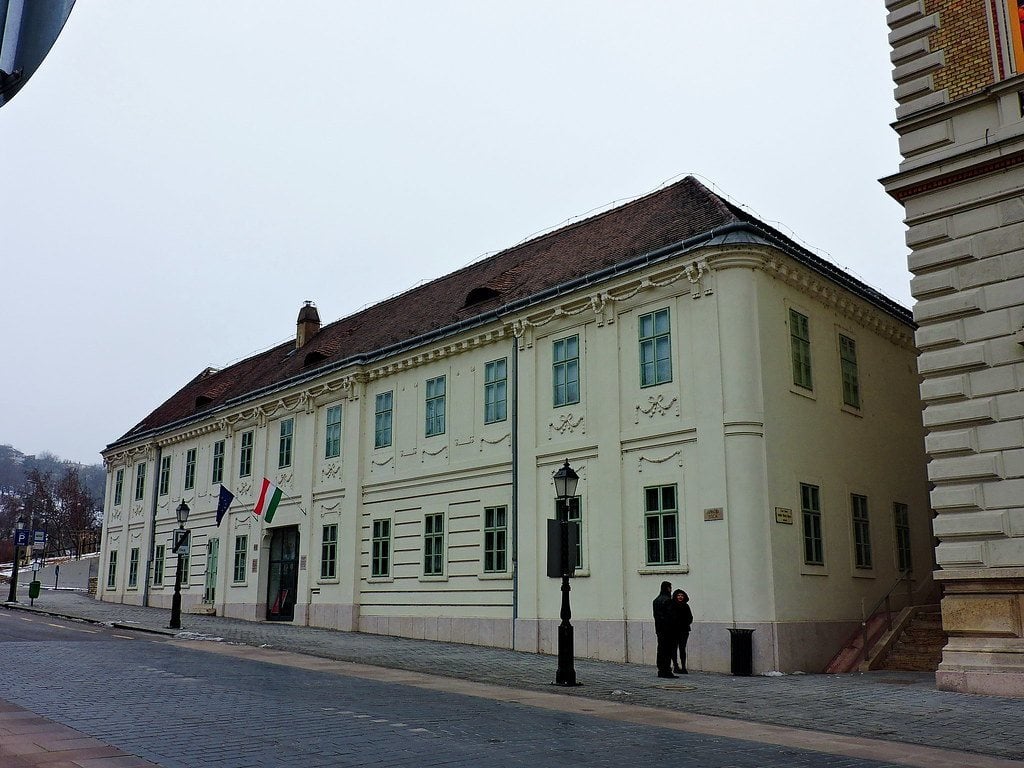
- Learn about medical developments;
- Discover the interesting life story of Dr. Semmelweis;
- Old medical equipment;
- Unusual museum.
Why it’s awesome: Located at the bottom of Castle Hill, Semmelweis Medical Museum is housed in the birthplace of its namesake—Dr. Semmelweis. It’s one of the most unusual things to do in Budapest and also one of the most underrated. Dr. Semmelweis was a pioneering doctor in the mid-1800s who tried hard to make other medical professionals aware of the need for cleanliness.
He had a basic awareness several years before Louis Pasteur came up with the germ theory of disease. Sadly, Dr. Semmelweis passed away before he saw medical advancements, and his insights were confirmed. He did, however, lower the death rates in his hospital through his efforts. The museum shows how Western medicine has advanced over the ages and contains some unusual items.
What to do there: Learn more about the developments of medicine from prehistoric times to the 1900s and discover more about the life and work of the interesting Dr. Semmelweis. See how, through actions considered the bare basics today in medicine, the doctor helped to prevent the needless deaths of pregnant women and new mothers. He understood the importance of washing hands in the hospital and cleaning surgical instruments in between operations.
You can also see an array of medical instruments and objects used in research and teaching from yesteryear, including a shrunken head, a rare and delicate anatomical sculpture by Clemente Susini, surgical implements, and an old X-ray device.
#11 – Budapest Zoo & Botanical Garden – Awesome place to visit in Budapest with kids!
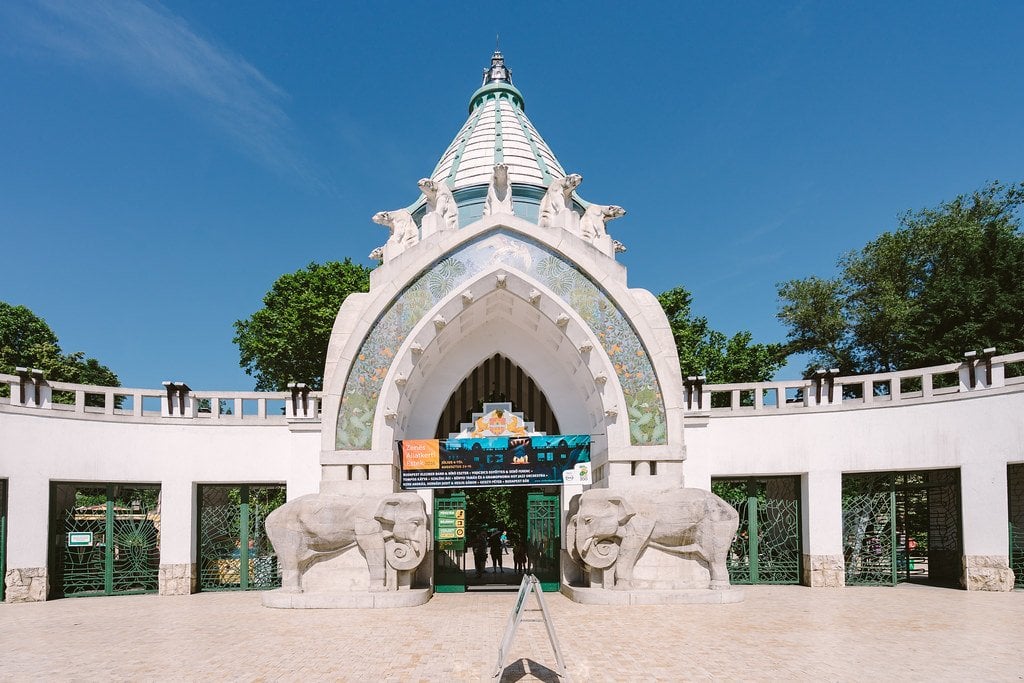
- Many species of animals;
- Lots of plant life;
- Beautiful Art Nouveau architecture;
- Diverse tourist attractions for kids.
Why it’s awesome: One of the top things to include on your Budapest itinerary if visiting the Hungarian capital with children, Budapest Zoo & Botanical Garden is home to more than 1,000 species of animals from all over the world. Open since 1866, it is one of the oldest zoos in the world and the oldest zoo in Hungary.
Operating as a nature reserve, it is also home to many interesting plant species. Furthermore, visitors can admire the various Art Nouveau buildings scattered throughout the well-maintained grounds. There are interactive displays, various demonstrations, play areas, places to eat and drink, and, in short, everything you need for a great family outing.
What to do there: Take time to fully explore the zoo’s different areas and see the various creatures and plants that live in the zoo and botanical gardens. Step inside the palm house of America Tropicana to see wildlife from the tropical Americas. Journey to Africa at the Savannah Zone, home to creatures like zebras, rhinos, gazelles, and giraffes. Spot hyenas and lions in the India zone, animals from Southeast Asia in János Xántus House, and kangaroos, wombats, and other Oceanic creatures at the Australia Zone.
Other animals that call the zoo home include elephants, monkeys, gorillas, marmosets, birds, snakes, and the fearsome Komodo dragons. Watch animals being fed and learn about the zoo’s breeding and research programs. Don’t miss taking the kids to Holnemvolt Vár too.
Standing on the site of an old amusement park, the complex offers tons of fun for younger members of the family. The four-level Hetedhét Palace houses a fabulous play area with each room designed around traditional Hungarian stories. There’s also a small petting zoo, an aquarium, art events, small fairground rides, and horse riding.
#12 – Wekerle Estate – An unknown (but awesome!) place to see in Budapest!
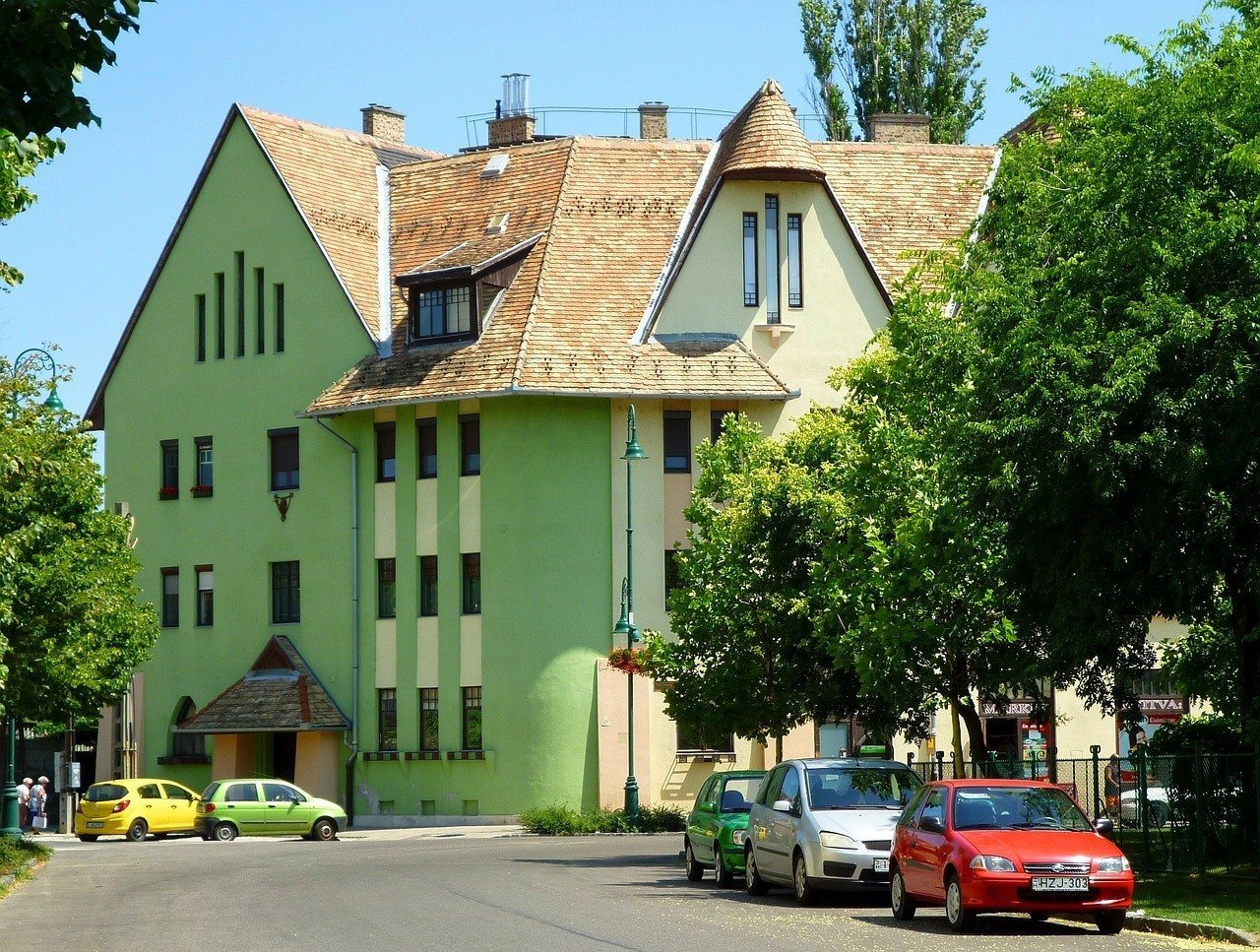
- Art Nouveau architecture;
- Delightful main square;
- Workers’ housing;
- Green suburb.
Why it’s awesome: Located in Budapest’s 19 th District, the Wekerle Estate is an often overlooked place. It’s named after a former Hungarian prime minister. Charming and picturesque, the village dates back to the early 1900s.
Built-in a vernacular secession from Hungary style (Art Nouveau), a number of pretty buildings surround a quaint main square, with two large gateways leading into the estate. Inspiration came from rural peasant architectural styles from the past. Although initially built to provide housing for local workers, the eye-catching village is a pleasant place to simply walk around and admire the designs.
What to do there: Take a walk around the photogenic estate and see the various buildings created in the Garden Style. There are houses and apartments, shops, schools, churches, a post office, a cinema, and various other amenities.
Stand in the main square and admire the surrounding buildings, designed by eminent architect Károly Kós. You could also consider taking a guided tour of the area to learn more about its construction and purpose as well as hearing local stories and anecdotes.

Wanna know how to pack like a pro? Well for a start you need the right gear….
These are packing cubes for the globetrotters and compression sacks for the real adventurers – these babies are a traveller’s best kept secret. They organise yo’ packing and minimise volume too so you can pack MORE.
Or, y’know… you can stick to just chucking it all in your backpack…
#13 – Central Market Hall – A great place in Budapest if you love to shop!
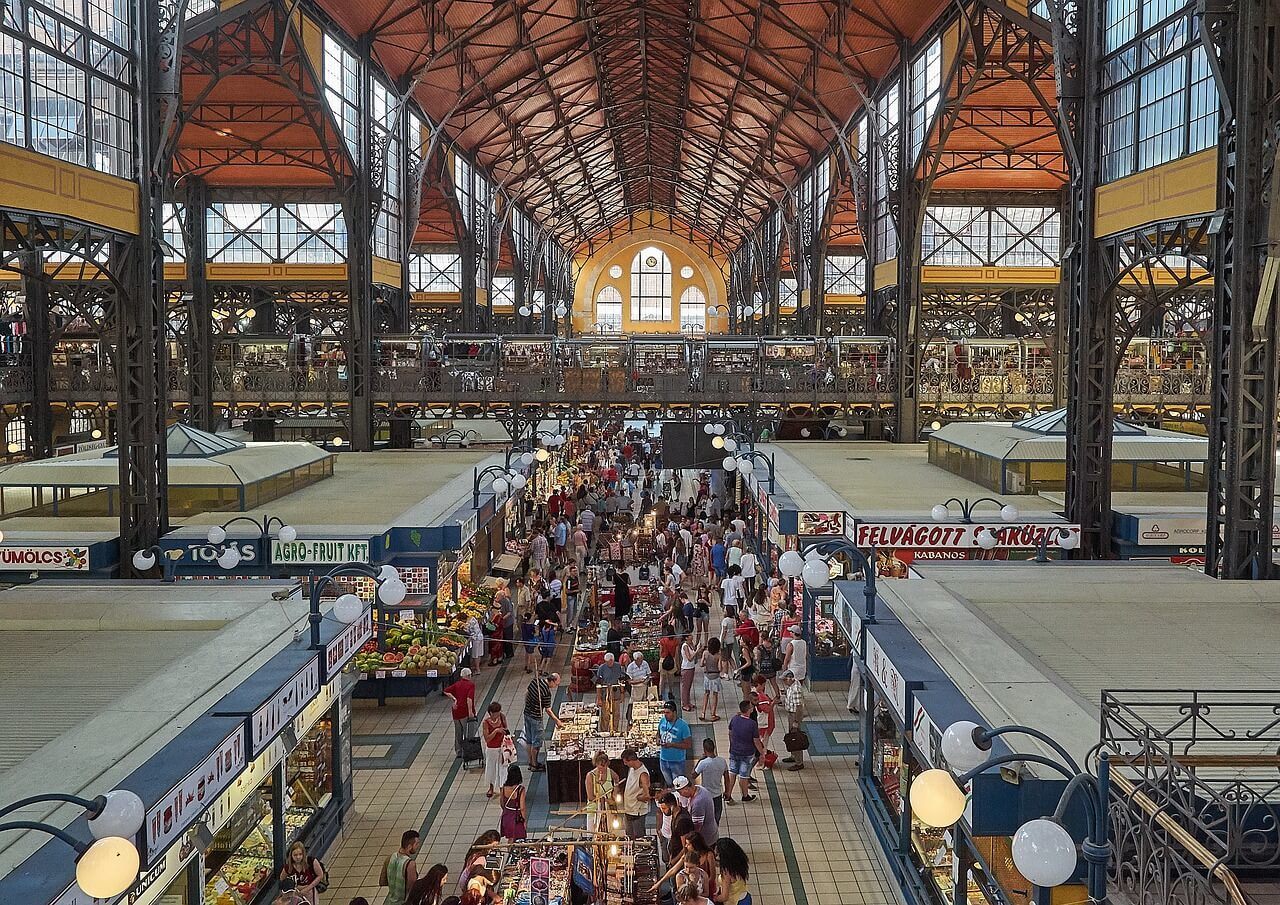
- Local food;
- Souvenir shopping;
- Wide array of goods;
- Oldest market hall in Budapest.
Why it’s awesome: The Central Market Hall is one of the best places to visit in Budapest for shopping and browsing. Open every day except Sundays, the great market hall has been in operation since the late 1890s. The building was eventually restored in the 1990s following damage during World War Two. It’s the biggest and most attractive great market hall in the city, with orange walls and a colourful roof.
As well as being a Budapest must-do for people who love to shop, it’s also a top place for window shopping and people watching. There are stalls spread across three levels, offering all manner of goods. It’s also among the best hotspots in Budapest for foodies, with a huge selection of tasty treats to tempt hungry visitors. It’s one of the top places to eat in Budapest for quick and easy local fast food and snacks. Another bonus: it’s an ideal all-weather attraction.
What to do there: Join the crowds and make your way through the stalls laden with a huge selection of goods. Pick up traditional souvenirs like Hungarian dolls, glassware, embroidered items, and hand-painted ceramics, as well as trinkets and souvenirs. You can also browse fashions and accessories and come across stalls selling household items, footwear, kitchen accessories, toiletries, and more.
There are many stalls selling fresh produce, dried goods, and typical Hungarian products. Look out for paprika, jars of pickles, Hungarian wines, Pálinka (a fruity brandy), confectionary, and salami. Savour some local fare from food stalls as you wander, or sit down for a meal in the affordable café. You’re sure to get some great photos of the bustling market. Some of Budapest’s best hostels are located nearby in this central location too!
#14 – Cinkota Old Cemetery – A nice quiet place to see in Budapest
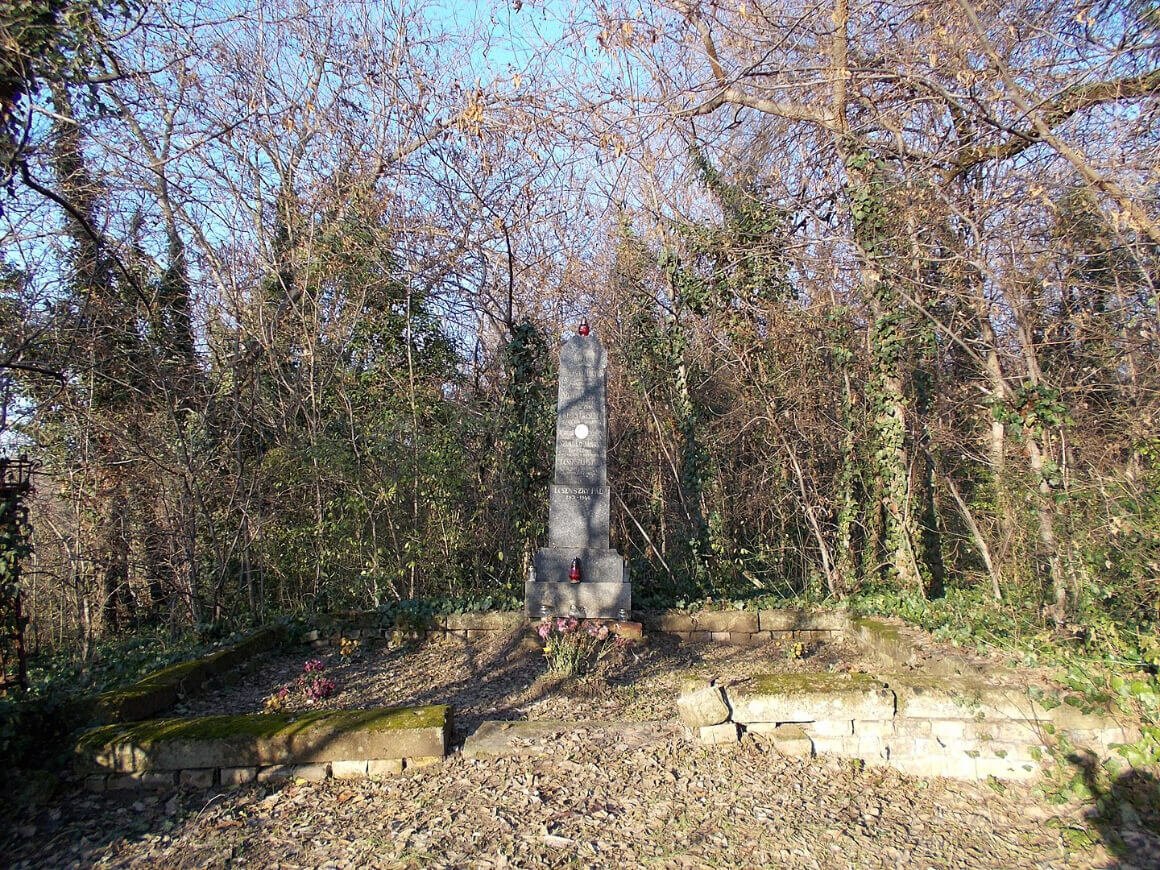
- Abandoned cemetery;
- Sleepy village;
- Off the beaten track.
Why it’s awesome: Rather eerie and with a forgotten feel, the peaceful and historic Cinkota Old Cemetery can be found on the outskirts of the city. All but abandoned with the passing of time, nature is trying hard to reclaim the land, engulfing tombstones from days long past. An old church stands next to the graveyard and adds to the atmosphere. Definitely away from the typical tourist trail, the cemetery is usually empty.
What to do there: Experience a sense of the stillness of time as you look at the aged tombstones among a tangled mess of overgrowth. Statues adorn some of the graves and it’s difficult to stop your imagination from running wild as you imagine the lives of those who have long since departed from this Earth.
The sounds of nature fill the air. The surrounding village also has a timeless feel, with old homes at the edges of the winding streets, chickens pecking at the dirt in back gardens and a slower pace of life than in the heart of the city.
#15 – Old Jewish Quarter – A great place to visit in Budapest at night
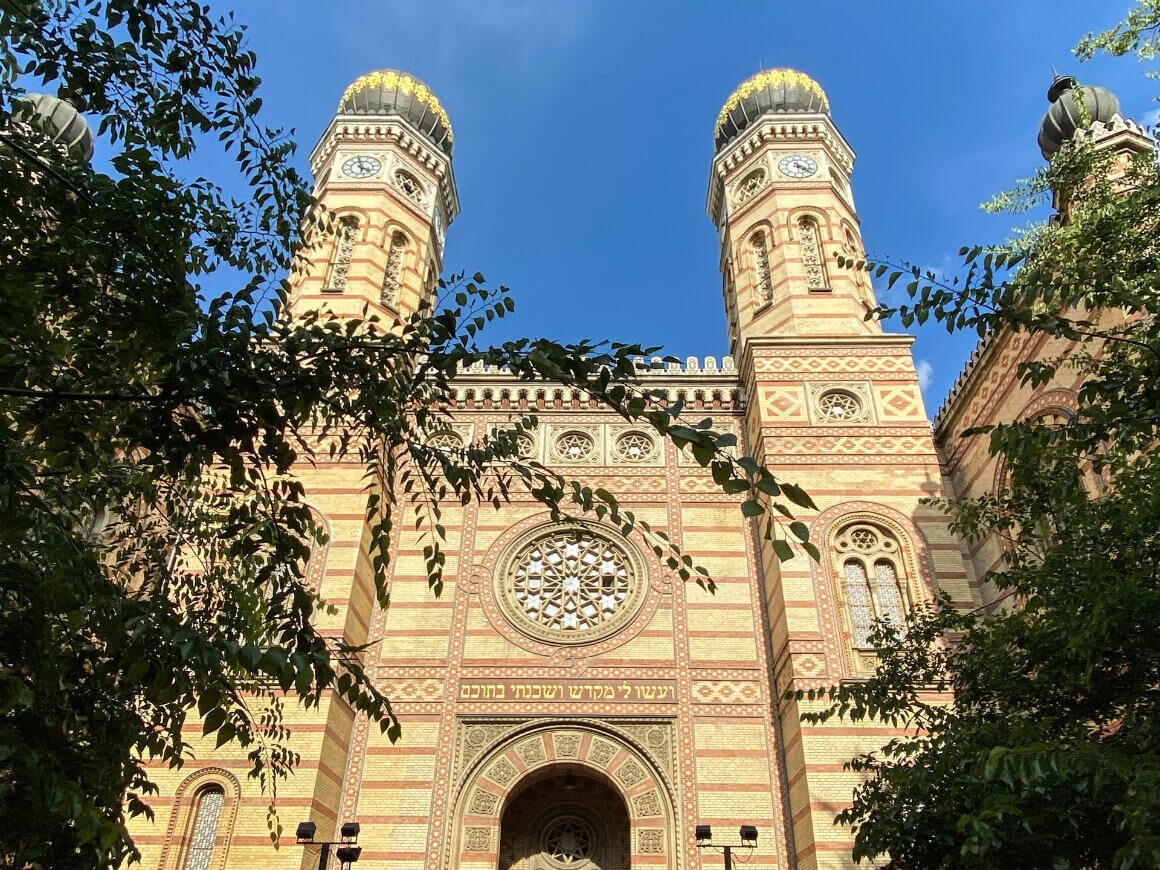
- Famous ruin bars;
- Cool street art;
- Lively area;
- Interesting architecture.
Why it’s awesome: One of the most fascinating neighbourhoods to visit when you explore Budapest, the Old Jewish Quarter is a hotbed of activity both by day and by night. Whispers from the past echo along the streets and the Jewish heritage is evident in the synagogues, homes, and former ghetto area. Colourful street art covers now-crumbling walls, and the neglect of many parts of the area enhances the atmosphere.
Far from being sad, however, many of the once derelict and abandoned properties have been given a new lease of life in the form of so-called ruin bars. Scruffy buildings that were slated for demolition were taken over by fun-loving locals, artists, and entrepreneurs and turned into bars full of character. Visitors can sip a drink while surrounded by the ravages of time for a night out that’s different to the norm.
What to do there: Visit one of the biggest synagogues in Europe (the Dohány Street Synagogue ) and contrast the religious practices and architecture with the synagogues on Rumbach Sebestyén Street (no longer in active use) and Kazinczy Street. See the houses, once designated with the Yellow Star label, where Jews were forced to live in cramped conditions and see what remains of the old ghetto wall.
Admire interesting street art, sample tasty street food, and peek inside cool and quirky shops. Stay in the old Jewish Quarter until nighttime to experience the famous ruin bars . Whether you’re looking for laid-back and chilled-out establishments or places that know how to rock, there’s a ruin bar for all tastes.
#16 – Evening Dinner River Cruise on the Danube
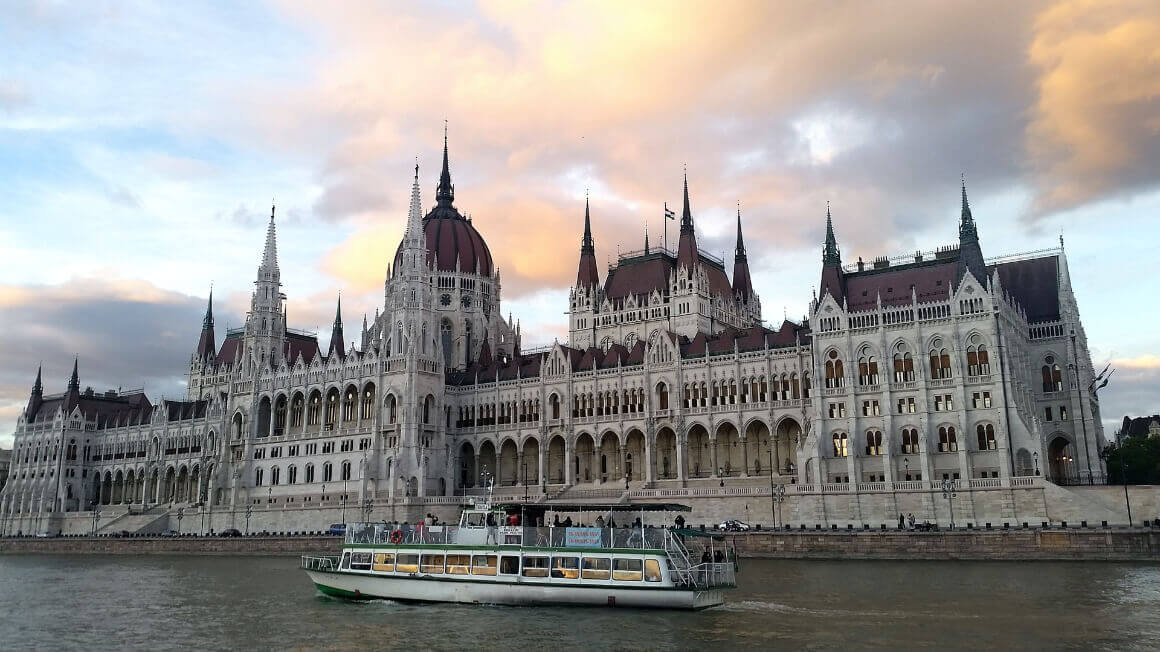
- See all the best landmarks from the river danube.
- A romantic evening for couples.
- Delicious food and an affordable price.
- A relaxing activity after a day of exploring.
Why it’s awesome: One of the most famous rivers in the world, the Danube, runs right the way through Budapest, separating the Buda and Pest side. The Danube river is also the centerpiece for many historical tourist attractions and events. The Buda Castle and Mathias church can be seen perched on top of Castle Hill from the waters, and on the pest side, the river passes all the way from the central market hall towards Margaret Island, passing by the Hungarian Parliament building and the Danube promenade too.
In the summer, tourists and locals flock to the bridges across the Danube river and hang out in the sunshine. The Danube promenade is a lively place lined with luxury hotels and restaurants, but when the sunsets, the river really comes to life as it glows in the orange sun. Budapest sunsets are out of this world. It’s not something that is widely talked about, but if you know, you know.
What to do there: One of the best ways to see the Danube river is on an evening sightseeing cruise with dinner . There is usually some light entertainment and plenty of wine to go around. If you’re travelling as a couple, this is the ideal romantic setting to catch the sunset and marvel at the best Budapest attractions from the dinner table.
Before the cruise, I highly recommend taking a stroll along the Danube promenade, where you will find a monument called ‘Shoes on the Danube Bank’, a fine art installation placed to mark the remembrance of all the jews who died there during World War II. This sobering installation is one of the most important tourist attractions, aside from the House of Terror, to learn about the history of World War II in Budapest.
Get insured for your trip to Budapest!
ALWAYS sort out your backpacker insurance before your trip. There’s plenty to choose from in that department, but a good place to start is Safety Wing .
They offer month-to-month payments, no lock-in contracts, and require absolutely no itineraries: that’s the exact kind of insurance long-term travellers and digital nomads need.

SafetyWing is cheap, easy, and admin-free: just sign up lickety-split so you can get back to it!
Click the button below to learn more about SafetyWing’s setup or read our insider review for the full tasty scoop.
Find out what people want to know about the best places to visit in Budapest
What should I not miss in Budapest?
You cannot take a trip to Budapest without trying a thermal bath…or two!
What is Budapest famous for?
Budapest is famous for its mix of romanesque, gothic, renaissance, and baroque architecture, historical landmarks, thermal baths and ruin bars.
Is 3 days enough in Budapest?
If you just want to see the highlights, then you can see them all in three days. However, you would need to rush. Ideally, five days would be ample amount of time to see everything and have some chilled days in the thermal baths too.
Why is Budapest so cheap?
Although being part of the EU, Hungary is not part of the Eurozone and has therefore not adopted the Euro. This means their own currency, the Forint, has decreased in value over the years and means tourists can get more bang for their buck.
Step away from the beaten path and wander around the quaint Óbuda Main Square, a neighbourhood that is often forgotten by locals and tourists alike. The Old Town Hall is especially impressive. Soak up the views from the top of the Budapest Eye, located in the vibrant Erzsébet Square, enjoy the beauty and peaceful air in Füvészkert Botanical Garden, and see the unusual statues in the offbeat Memento Park.
Tour Budapest’s many museums around Heroes Square, including the Hungarian National Museum, Budapest History Museum, the Museum of Fine Arts, the Franz Liszt Memorial Museum, the Museum of Ethnography, the Hungarian Railway Museum, and the quirky House of Houdini. There are museums in Budapest to suit all tastes and interests.
Go hiking in the scenic Buda Hills and escape from the hustle and bustle of the city, and spend a few hours (or longer!) exploring the diverse spots around Gellért Hill. You can explore the mighty Citadella on top of the hill, one of the most famous places in Budapest, and soak up the splendid vistas. Other highlights include Gellért Hill Cave, walking trails, and the Liberty Monument. A visit to the Dohány Street Synagogue is also highly recommended.
Once you’ve covered most of the best places to visit in Budapest, take day trips to exciting nearby destinations like Esztergom, Szentendre, and Lake Balaton. You certainly won’t have any reason to feel bored when visiting the Hungarian capital city!
Start planning your memorable trip and don’t forget to include these best places to visit in Budapest when exploring the diverse city.

Agness and Cez

Share or save this post

Leave a Reply Cancel reply
Your email address will not be published. Required fields are marked *
Save my name, email, and website in this browser for the next time I comment.
Notify me of followup comments via e-mail.
- 15 Must Visit Attractions In...
25 Must-Visit Attractions in Budapest, Hungary

From majestic Art Nouveau thermal baths to trendy ruin bars, a whole host of new experiences await at Budapest’s must-visit attractions. To make the most of your trip to Budapest, skip the queue by booking Budapest’s top attractcafions online, whether it’s touring the spectacular Neo-Gothic parliament building, diving into the underground cave system or battling it out at the Pinball Museum.
1. gellért thermal bath.
Building, Spa, Health Spa

Budapest is nicknamed the “City of Spas” for good reason. More than 118 natural thermal springs deliver 70 million litres (15.3 million gallons) of therapeutic waters to the city each day. Housed within the world-famous Gellért Hotel, the Gellért Baths is just one of a dozen spas where you can take advantage of spa water’s healing qualities. The sumptuous spa offers a steam room, sauna, sun terrace, thermal baths and massage rooms, all housed in a spectacular Art Nouveau-style building. Head there early in the morning to avoid the crowds, or book a guided tour to skip the queues.
2. River Danube, Budapest
Natural Feature

For a fresh perspective on the Hungarian capital, see it from the waters of the River Danube. Upon its banks, the Neo-Gothic Hungarian parliament building stands opposite the ornate Buda Castle and Fisherman’s Bastion, while river cruises also provide views of the Liberty Statue, Chain Bridge and Margaret Island. To avoid the hassle of looking for the best river cruise during precious holiday time, guided tours can be booked online in advance.
3. Pinball Museum (Flippermúzeum)

The Budapest Pinball Museum might sound like an attraction that caters only to die-hard gamers, but this quirky museum offers a fascinating journey back in time with its collection of over 130 pinball machines. Positioned close to Margaret Island in the heart of the city, the Flippermúzeum houses Europe’s largest ongoing interactive pinball exhibition and includes the Mesovonat – the only Hungarian-made pinball machine. Book tickets online to ensure a stress-free experience.
5. Budapest Chocolate Museum

To satisfy those with a sweet tooth , the Chocolate Museum on the outskirts of Budapest provides guests with a rich history of Hungarian chocolate. Taking a leaf out of Willy Wonka’s book, the museum is a unique place where visitors are taken on a culinary journey through the history of chocolate, complete with tasting sessions. Guests can dip marzipan balls into a chocolate fountain, make their own handmade chocolates, and explore the museum’s collection of historic Hungarian paintings. Visitors are advised to book tickets in advance to secure a slot.
6. St Stephen’s Basilica
Church, Architectural Landmark

Many class St Stephen’s Basilica as the jewel in Budapest’s crown. Taking pride of place in the centre of the city, the world-famous Roman Catholic Basilica is named after Stephen, the first King of Hungary who ruled between 975 and 1038CE. Completed in 1905 after 54 years of construction, the Neo-Classical building remains to this day the most important church in the country. Housing a stunning interior with intricate paintings adorning the walls and ceiling, this architectural masterpiece is best appreciated while enjoying an enchanting organ recital within its walls.
7. Dohány Street Synagogue
Building, Church, Memorial, Museum, Park, Synagogue

The Dohány Street Synagogue is undoubtedly a key highlight of the up-and-coming seventh district. Built between 1854 and 1859 in the Moorish Revival architectural style and with a capacity of over 3,000 people, it is the largest synagogue in Europe. The synagogue complex houses the Great Synagogue, the Heroes’ Temple, the graveyard, the Memorial and the Jewish Museum. To learn more about the rich history of the synagogue complex and its relationship to the Holocaust, guided tours can be booked in advance.
8. Széchenyi Thermal Baths
Spa, Swimming Pool, Health Spa

Situated in the heart of Budapest City Park, the Széchenyi Baths is one of Europe’s largest thermal bath complexes. Built in 1913, the spa houses three large outdoor pools, 10 inside plunge pools, massage rooms, saunas, steam rooms and even a beer bath. Open all year round and popular not least due to its opulent Neo-Baroque style, Széchenyi is best experienced with a full-day skip-the-line ticket, which can be booked in advance.
9. Hungarian Parliament Building
Architectural Landmark, Building

The Hungarian Parliament Building is among Budapest’s leading attractions, drawing nearly 700,000 visitors each year. Situated on the UNESCO-listed banks of the River Danube, the building is one of the finest examples of Gothic Revival and Renaissance Revival architecture in the world. The House of Parliament is still very much a functioning law-making body today, but it is open to the public at certain designated times. Long queues often form outside, so book online to avoid the crowds.
10. Buda Castle
Historical Landmark

The iconic Buda Castle District houses the historical castle and palace complex. The awe-inspiring Baroque-style palace was completed in 1769, but the complex was first constructed as far back as 1265. Part of a UNESCO World Heritage Site, the former Royal Palace is now home to the Budapest History Museum and the Hungarian National Gallery. Castle Hill, which comprises the entire upper quadrant of the Várnegyed (Castle Quarter), houses an array of museums, shops, restaurants, cafes and hotels. Although visiting the site does not require advanced booking, it’s strongly advised that you sign up for a guided tour to learn more about the history of the castle and the palace complex.
11. Szimpla Kert (Ruin Bar)
Bar, Pub, Beer, Wine, Cocktails

12. Hungarian State Opera House
Opera House

The Hungarian State Opera House is renowned as one of the finest examples of Neo-Renaissance architecture in existence today. Completed in 1884, it boasts a grand chandelier that weighs a whopping three tonnes (3.3 tons), and almost three kilogrammes (6.6 pounds) of gold were used to gild the cherubs and nymphs of its lavishly ornate interior. Although the Opera House is closed for refurbishments until early 2020, tours of the building are still available.
13. Fisherman’s Bastion
Historical Landmark, Building

The Neo-Romanesque lookout towers housed within the Fisherman’s Bastion provide some of the best views across Budapest. Built between 1895 and 1902, its seven towers symbolise the Seven Chieftains of the Magyars who founded the Hungarian nation in 895CE. Today’s structure stands where thick walls once protected Buda Castle from enemy attack – legend has it that the building was protected by the guild of fishermen, giving the Bastion its name. To appreciate the beauty and history of Fisherman’s Bastion, consider booking a tour online.
14. Vajdahunyad Castle
Historical Landmark, Architectural Landmark

Built in 1896 as part of the Millennium Exhibition to commemorate 1,000 years since the Hungarian conquest of the Carpathian Basin, Vajdahunyad Castle sits majestically within Budapest City Park. First built out of wood and cardboard, the site became so popular that it was rebuilt from stone and brick in 1908. Surrounded by a boating lake in the summer that turns into an ice rink in winter, the castle houses the Museum of Hungarian Agriculture, the largest agricultural museum in Europe.
15. Széchenyi Chain Bridge
Architectural Landmark, Bridge

The Széchenyi Chain Bridge is an impressive example of 19th-century engineering spanning the River Danube, linking Buda to Pest. Designed by English engineer William Tierney Clark and built by (unrelated) Scottish engineer Adam Clark, the cast-iron structure opened in 1849 and was the first permanent bridge constructed across the river. Connecting Széchenyi Square in front of Gresham Palace to Adam Clark Square below the Castle Hill Funicular, the Széchenyi Chain Bridge is a symbol of bringing people together: from all walks of life, from the east and west of the city. Walking tours afford an ideal opportunity to learn more about the Széchenyi Chain Bridge.
16. Margaret Island
Park, Natural Feature

Sitting between the Margaret and Árpád Bridges on the River Danube, the leafy 2.5-kilometre-long (1.55-mile-long) Margaret Island ( Margitsziget ) hosts open-air swimming pools, running trails, bars, luxury hotels, a wildlife park and even the ruins of a 13th-century Dominican convent. The pièce de résistance, however, is the dancing musical fountain – one of the largest and most dramatic in Europe – which pairs dancing water jets with a diverse playlist of music.
17. Heroes’ Square

Built in 1896, Heroes’ Square takes pride of place at the tip of Andrássy Avenue, Budapest’s Champs-Élysées-esque boulevard replete with upmarket stores, cafes and restaurants. Heroes’ Square features the colossal Seven Chieftains of the Magyars statue complex and the Memorial Stone of Heroes, which stands in tribute to those who have died defending Hungary. The Museum of Fine Arts and the Palace of Arts are also positioned around the outside edges of the square, which make an informative cultural addition to any guided tour of the area.
18. Hospital in the Rock
Historical Landmark, Museum

The Hospital in the Rock was built into a 10km-long (6mi-long) underground cave system situated directly beneath the Buda Castle District. Built as a secret military and hospital bunker during the 1930s in preparation for World War II, the hospital was used to full capacity during the siege of Budapest in 1944-45, with both civilians and soldiers treated there. Although the hospital was closed in July 1945, it was still used by the Vaccine-Producing Institute to develop medicines to tackle typhus for many years afterwards. English guided tours depart every hour on the hour from 10am to 7pm, with tickets available to purchase on-site or online in advance.
19. Great Market Hall

Ever abuzz with activity, Budapest’s Central Market Hall (also known as the Great Market Hall) promises an adventure in culture and retail therapy, offering up traditional Hungarian clothing and local delicacies such as beech wood-smoked gyulai kolbasz sausage. Built in 1897, this magnificent venue holds more than 100 stalls over three floors, housed in a Neo-Gothic-style listed building. Taking advantage of a guided tour will not only give you an in-depth history of the building, but will also give you the opportunity to try authentic Hungarian food and enjoy wine tasting en route.
20. Kőbánya Caves
The Kőbánya cellar system is a vast network of subterranean tunnels underneath Budapest’s tenth district. During World War II, the tunnels were used to assemble aircraft engines and as a bomb shelter for civilians. Also referred to as the “Dreher Cellars” by virtue of the Dreher Breweries that once resided there, the former quarry is now extremely popular with cave divers and beer enthusiasts.
21. Matthias Church
Church, Architectural Landmark, Historical Landmark

Officially named the Church of the Assumption of the Buda Castle, Matthias Church sits in front of the Fisherman’s Bastion in the centre of Buda’s Castle District. The church’s first iteration (then dedicated to Mary) was built in 1015 under the first king of Hungary, Saint Stephen. The current building is remarkable for its late Gothic style, first constructed in the second half of the 14th century, and restored in the late 19th century. The name of the contemporary church refers not to Saint Matthias but to King Matthias Corvinus the Fair, who remodelled the building in the 15th century with the addition of the church’s southern tower, the appropriately named Matthias bell tower.
22. Gellért Hill and Citadella
Historical Landmark, Natural Feature

23. House of Terror Museum

Since opening in 2002, Budapest ’s House of Terror Museum has become one of the Hungarian capital’s most popular attractions. The museum, dedicated to exploring the Fascist and Communist regimes of 20th-century Hungary and commemorating the victims of these regimes, is set within the former headquarters of the Hungarian Nazi Party.
24. Memento Park
Museum, Park

25. Andrássy Avenue
Architectural Landmark, Historical Landmark, Shopping Mall

Budapest’s most famous street, Andrássy Avenue is a UNESCO World Heritage Site. Lined with Neo-Renaissance mansions, Andrássy Avenue is heaven for shopaholics, thanks to the plethora of high-end fashion brands that find their home there. Those more interested in arts and culture will be fascinated by the elegant Hungarian State Opera House and the stretch nicknamed the “Broadway of Budapest” (at the intersection of Nagymező Street).
Since you are here, we would like to share our vision for the future of travel - and the direction Culture Trip is moving in.
Culture Trip launched in 2011 with a simple yet passionate mission: to inspire people to go beyond their boundaries and experience what makes a place, its people and its culture special and meaningful — and this is still in our DNA today. We are proud that, for more than a decade, millions like you have trusted our award-winning recommendations by people who deeply understand what makes certain places and communities so special.
Increasingly we believe the world needs more meaningful, real-life connections between curious travellers keen to explore the world in a more responsible way. That is why we have intensively curated a collection of premium small-group trips as an invitation to meet and connect with new, like-minded people for once-in-a-lifetime experiences in three categories: Culture Trips, Rail Trips and Private Trips. Our Trips are suitable for both solo travelers, couples and friends who want to explore the world together.
Culture Trips are deeply immersive 5 to 16 days itineraries, that combine authentic local experiences, exciting activities and 4-5* accommodation to look forward to at the end of each day. Our Rail Trips are our most planet-friendly itineraries that invite you to take the scenic route, relax whilst getting under the skin of a destination. Our Private Trips are fully tailored itineraries, curated by our Travel Experts specifically for you, your friends or your family.
We know that many of you worry about the environmental impact of travel and are looking for ways of expanding horizons in ways that do minimal harm - and may even bring benefits. We are committed to go as far as possible in curating our trips with care for the planet. That is why all of our trips are flightless in destination, fully carbon offset - and we have ambitious plans to be net zero in the very near future.

Restaurants
The best italian restaurants in budapest.

Where to Find the Best Street Art in Budapest, Hungary

See & Do
Meet budapest bike maffia: the team putting their wheels to good use in the hungarian capital.

Places to Stay
Where to stay in budapest, hungary.

Off-Beat Budapest: The 7 Most Exciting Alternative Experiences in the Hungarian Capital

The Best Arty Hotels to Book in Budapest

Hip Holiday Apartments in Budapest, Hungary, You’ll Want to Call Home

These 6 Experiences Show Budapest’s Most Famous Sights in a Fresh Light

Guides & Tips
Stay curious: experience budapest from your living room.

Hip Luxury Holiday Apartments in Budapest You'll Want to Call Home

How to Spend a Long Weekend in Budapest, Hungary

Food & Drink
The best cheap restaurants in budapest, hungary, culture trip spring sale, save up to $1,100 on our unique small-group trips limited spots..

- Post ID: 1319987
- Sponsored? No
- View Payload
21 things only Budapest locals know (that you really should know, too)

Mar 6, 2024 • 8 min read

While Budapest is welcoming and safe but it helps to know a few key tips © Drazen_ / Getty Images
Budapest’s elegant boulevards and world-famous thermal baths welcome travelers from all over the globe – yet some aspects of navigating the city aren’t the most visitor-friendly.
Even seasoned travelers can have unpleasant interactions with ticket inspectors on the tram after incorrectly validating their tickets. One unfortunate recurring story in Budapest is one of male visitors getting scammed by pretty women at shady bars, while crooked taxi drivers can quite literally take unwitting passengers for a ride around the city.
Luckily, the Hungarian capital is a safe place for visitors, and you can easily avoid these scenarios with a little planning and by following our list of things to do – and things to avoid – when visiting Budapest .
1. Learn a few words in Hungarian before arriving
Knowing how to say “please” and “thank you” in Hungarian goes a long way with the locals. Before your trip, buy a phrasebook and learn the basics of this idiosyncratic language, such as “hello” and “cheers.” One very important tip: make sure you get the accent right on the “é” in “egészségedre” (“egg-ees- sheeg -ed-re”), and don’t accidentally say “egészsegedre” (“egg-ess- shegg -ed-re”). The first means “to your health,” but the other is “to your whole ass.”
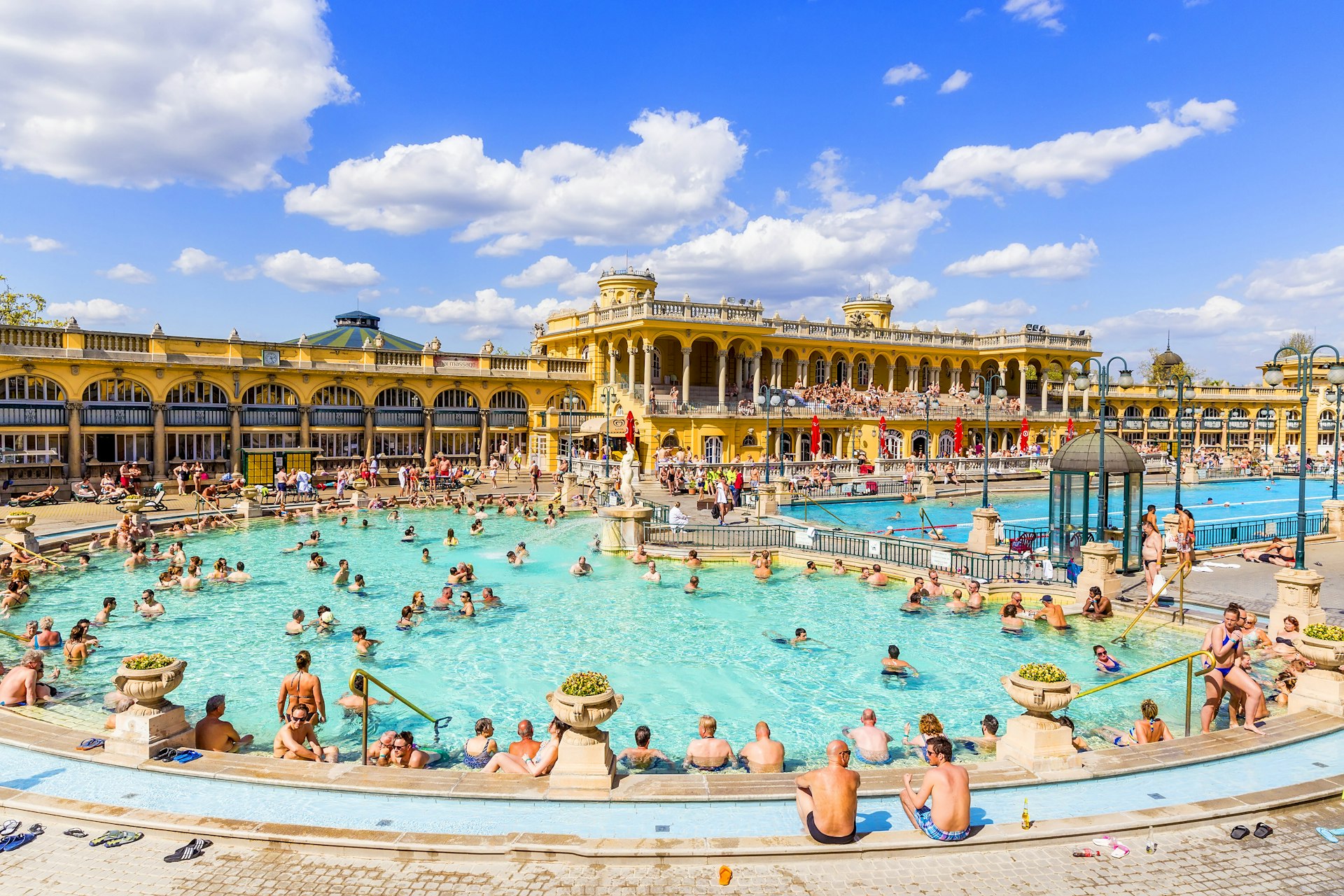
2. Pack for the pool
Soaking in Budapest’s thermal baths is one of the city’s most treasured experiences, so pack your stuff for swimming, including a pair of flip-flops or pool sandals and a beach towel. You can rent a towel if you prefer not to bulk out your bags, but be prepared to pay as much as 5000 HUF (about US$15).
3. Wear a swimming cap in the bathhouse pools
You can enter the swimming pools at the thermal baths only if you’re wearing a swimming cap, a rule in place to stop stray hairs from clogging the pool drains. Many bathhouses sell swimming caps at the ticket office for up to 2000 HUF. Note that this rule does not apply to the thermal baths themselves, only to the on-site swimming pools.
4. Bring an umbrella
It’s a good idea to bring an umbrella to Budapest, even in the summer. The city can get sudden heavy downpours, especially in the warmer months.

5. Pack comfortable walking shoes (but not sneakers)
Since Budapest is a highly walkable city, you’re going to be on your feet all day. Pack shoes that you’ll be comfortable wearing for hours while you’re out exploring – while keeping in mind trainers will likely single you out as a tourist in an instant.
6. Book tickets in advance for popular museums
If you’re visiting Budapest during peak season, especially in the summer or around Christmas, or have your heart set on seeing a seasonal exhibition, you can skip the long lines by booking tickets in advance. Some popular sites have introduced caps on numbers, so it pays off to plan ahead and ensure you can visit what you want to. If you buy a ticket before you arrive, download it to your phone, show the QR code and walk right in without waiting.
7. Bring forints, not euros
Though Hungary uses the forint as its currency, some hotels, restaurants and shops will accept euros, giving change back in forints. Since establishments can be reluctant to accept large bills (like 20,000 HUF), try to withdraw smaller bills from ATMs. Some cash machines let you choose what bills to withdraw; if yours doesn’t, pick an amount like 9000 HUF or 19,000 HUF to ensure smaller change.
8. Avoid Euronet ATMs
You’ll see Euronet ATMs all around town, especially in bars, but they charge exorbitant bank fees. The convenience is not worth the cost.
9. Download taxi and transport apps
To navigate the city on the go, download the BKK ( Budapest Közlekedési Központ ) app, issued by the city’s official public transport agency, or CityMapper . For taxis, get a taxi app like Bolt . Note that Uber is no longer available in Hungary.
10. Never hail a taxi
Flagging taxis on the street is risky because some rogue operators rip visitors off by driving around the city or using other tricks. This has been happening less and less in recent years, but it’s still better to call a cab or use an app to order one.
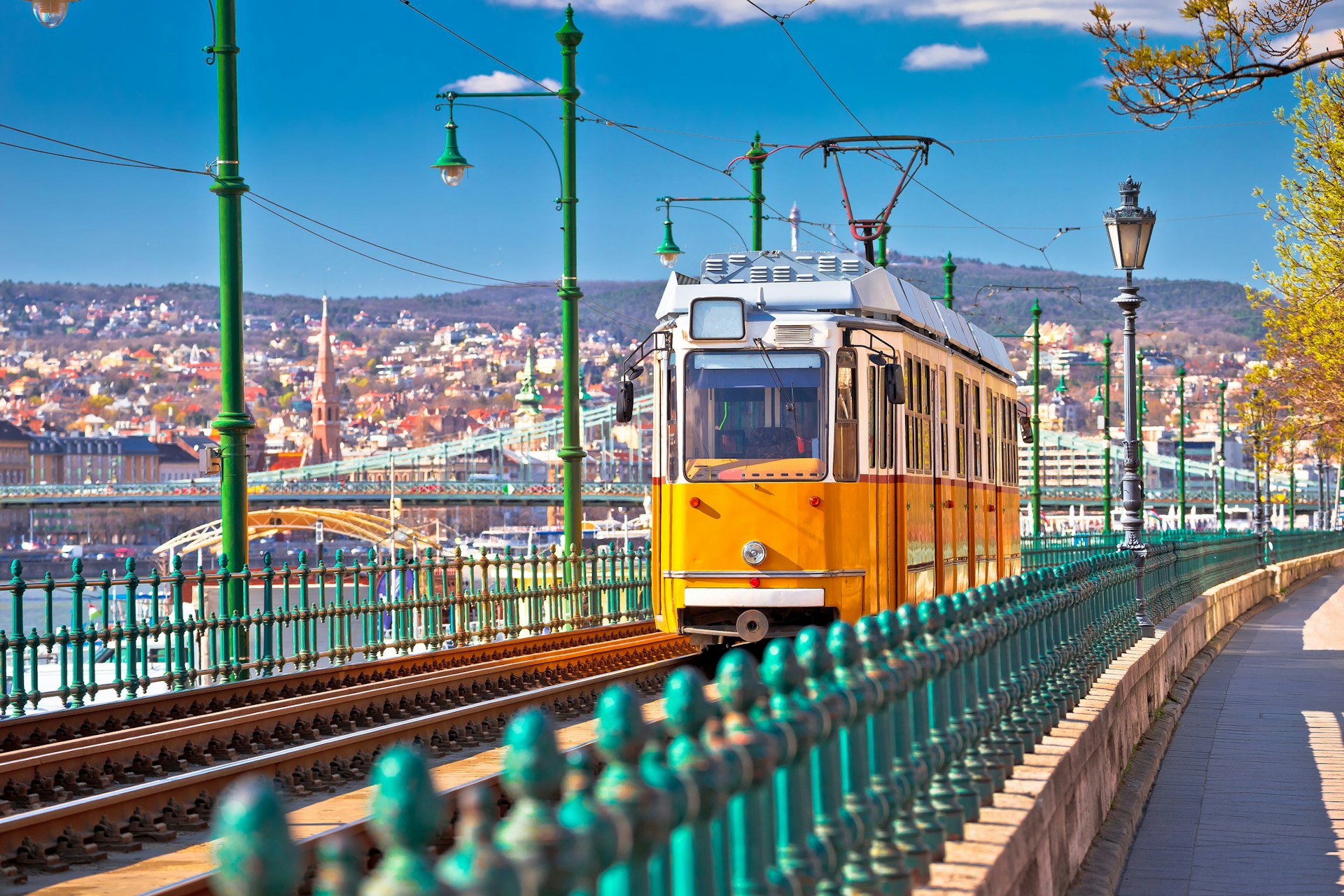
11. Validate your public transport ticket
The ticketing system for Budapest’s public transport can be confusing for first-time riders. The most important thing to remember is that you must buy a ticket before getting on public transport, validate it when boarding, and keep it until the end of your journey. Most tram and metro stops have machines where you can purchase tickets; on the bus, you can buy them from the driver. Check that your ticket has a date, timestamp or punched holes – these mean it’s validated and that you’re good to go. If not, you risk getting caught by a roving ticket inspector and charged a hefty fine.
12. Learn how to board the bus
Most of the time, you can get on the bus in Budapest through any door, and there’s no need to show your ticket to the driver. If you have a single ticket, validate it using the onboard machines (if you have a longer pass, keep it on you), and you’re ready to ride. Some buses, however, are front-boarding only. If you notice a bus that opens its front door only to boarding passengers, get in line and have your ticket or pass ready to show the driver.
13. Tip at restaurants
Some restaurants include a service charge on the bill, so it’s a good idea to ask if this is included when paying (it usually appears on the bill as szerviz ). If not, it’s customary to tip around 10%. Hungarians often round up the bill and tell the server how much they want to pay, including tips (especially if they still need change back). If you give a banknote that’s more than your bill and say “thank you,” your server will likely see that as an invitation to keep the change.
14. Don’t clink your beer glasses with Hungarians
Hungarians don’t say “cheers” with beers – or at least they haven’t for the past 150 years. When Habsburgs Austria defeated Hungary in the 1848 revolution, Austrians in Vienna celebrated the defeat by toasting and clinking beer steins. As a form of subtle protest, Hungarians vowed never to do this same – and haven’t raised their beer glasses since. You might notice some of the younger crowd forgoing this rule, so if you’re in the company of Hungarians with beer, follow their lead.
Note that this rule doesn’t apply to drinks like wine or pálinka (a local fruit brandy); Hungarians even consider it rude not to look the other person in the eyes and say “cheers” when raising a glass of anything other than beer.
15. Don’t smile too much (Hungarians don’t)
Hungarians are not the smiliest people, and smiling at strangers or while out and about is much less prevalent in Hungarian culture than it is in, say, the United States. Walking around with a big smile on your face at all times will probably make it clear to locals that you’re not one of them. There’s no harm in smiling – but you might just attract a tout trying to sell you a bus tour.
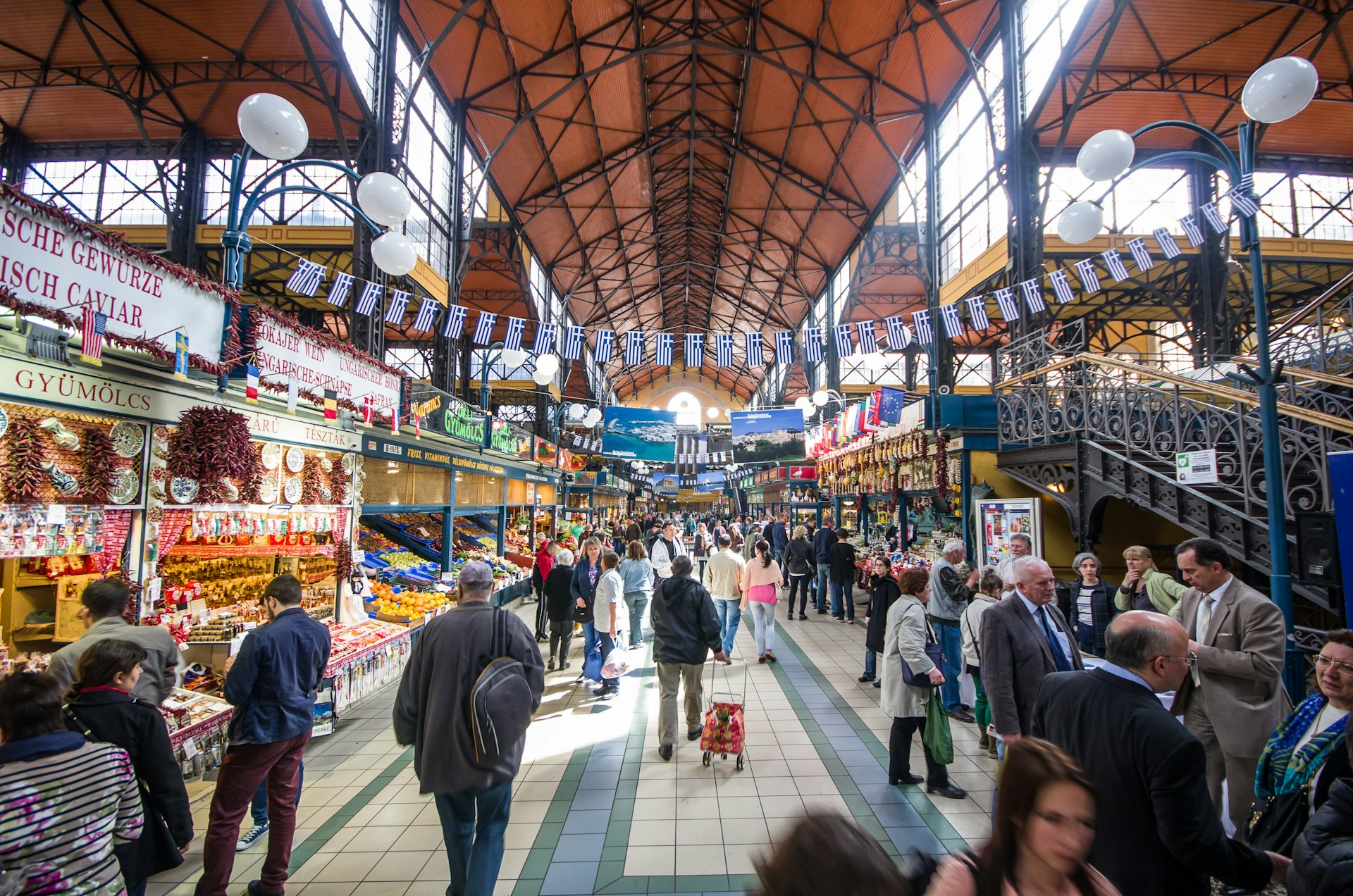
16. Greet staff when you enter a shop
If you go into a smaller shop, it’s polite to say “ Jó napot ” (“good day”).
17. Watch out for the Budapest bar scam
Unfortunately, one of the main risks in visiting Budapest is getting ripped off – and there’s one recurring scam that’s a tale as old as time. Male travelers will often be approached by attractive, friendly young women who invite them to a bar. Once inside, the men get presented with a huge bill, along with threats of calling the police if they don’t pay. The moral of the story? Try to resist tagging along with any women who approach you – or at least avoid any bar they suggest.
18. Take precautions with your belongings
Pickpockets are common on rush-hour public transport and in busy, touristy areas. Keep your belongings in a safe place, such as in a money waist belt or in a zipped-up compartment inside a bag, and don’t put your wallet or phone in your pocket, the easiest place for a pickpocket to swipe it from.
19. After midnight, take a taxi back to your accommodations
Budapest’s city center (especially District VII) is fairly nocturnal, and the central districts inside the Grand Boulevard are safe after midnight. If you’re staying in Budapest’s outer neighborhoods, however – such as Districts VIII or IX, beyond the Grand Boulevard – it’s safest to take a taxi to your accommodations if you’re having a late night.
20. Be aware of the recent LGBTIQ+ laws
Hungary is earning a bad reputation with LGBTIQ+ travelers because of recently enacted laws, such as one making it impossible for trans people to legally change their gender. Another, the so-called “Anti-Pedophile Bill,” draws lamentable parallels between pedophilia and homosexuality and bans LGBTQI+ representation in media available to people under 18.
The good news is that Budapest is more liberal, especially if you stay around downtown. A vibrant population of progressive activists keeps up the fight for LGBTQI+ rights in Hungary, and Pride gets bigger every year, with thousands joining in solidarity. You’ll find many places welcoming LGBTQI+ visitors; Budapest Pride maintains a helpful directory of LGBTQI+ safe and friendly venues .
21. Know how to get medical help if needed
For peace of mind, it’s a good idea to get insurance before traveling. The Hungarian public health system is often understaffed, and it can be hard to find English-speaking doctors or nurses in public hospitals and clinics. Many good private clinics are popular with the local ex-pat community, including First Med and Swiss Clinic . If you need a pharmacy, you’ll find them all across the city center, with a few that are open 24/7.
This article was first published Feb 14, 2022 and updated Mar 6, 2024.
Explore related stories
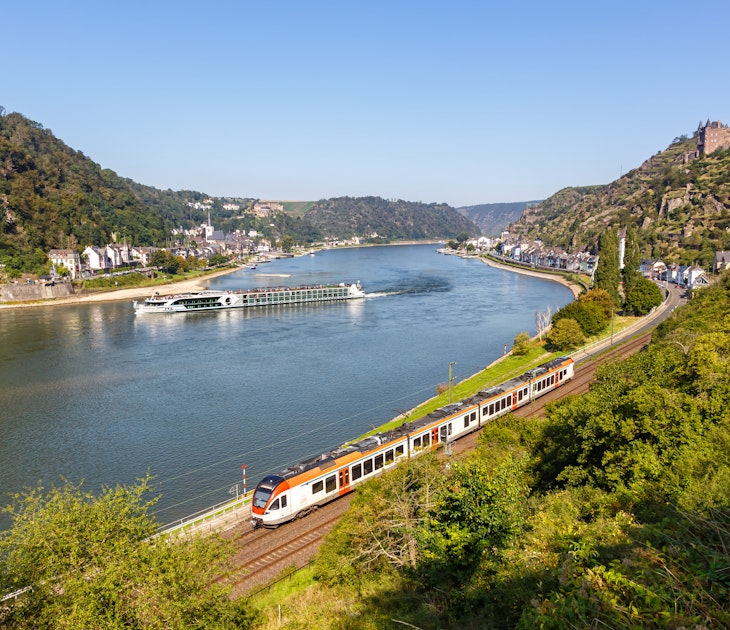
Train Travel
May 3, 2024 • 5 min read
From new routes to services that only run in peak season, here are the best European train journeys to take this summer.

Mar 17, 2024 • 7 min read

Jan 10, 2024 • 7 min read

Oct 19, 2023 • 8 min read

May 23, 2023 • 6 min read

Apr 20, 2023 • 6 min read

Apr 6, 2023 • 7 min read
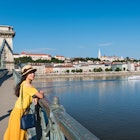
Apr 4, 2023 • 6 min read

Mar 28, 2023 • 7 min read

Ohio State navigation bar
- BuckeyeLink
- Search Ohio State
Cruise the Heart of Europe ~ Budapest to Amsterdam
Cruise through Central Europe along the storied Rhine, Main and Danube rivers, legendary waterways with fascinating histories.
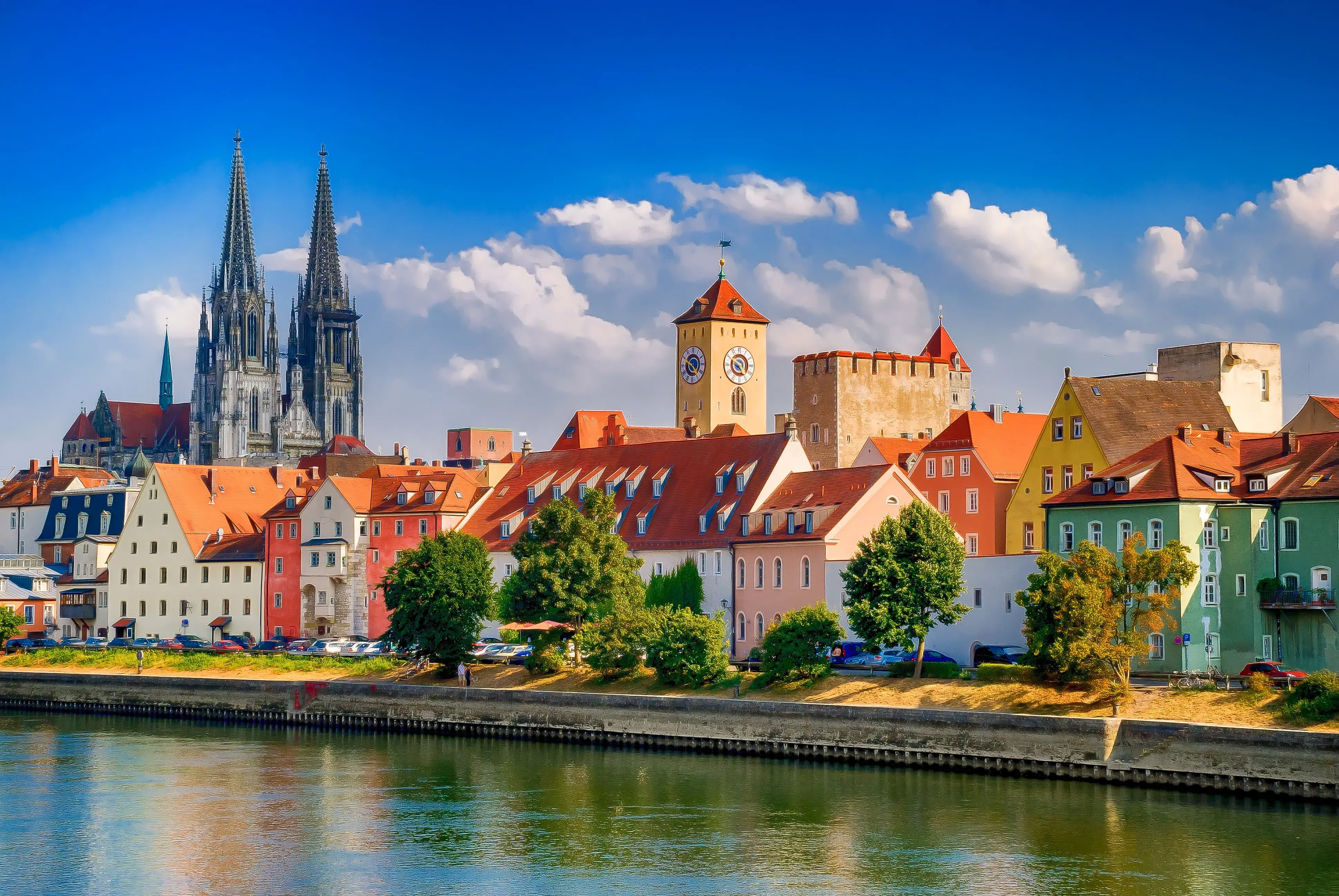
- Cruise the Heart of Europe ~ Budapest to Amsterdam &body=Check out this new tour from Giving to Ohio State: https://www.osu.edu/alumni/events-and-travel/alumni-tours/alumni-tours-calendar/cruise-heart-europe-budapest-amsterdam" class="social-share__link"> Share via Email
- Cruise the Heart of Europe ~ Budapest to Amsterdam https://www.osu.edu/alumni/events-and-travel/alumni-tours/alumni-tours-calendar/cruise-heart-europe-budapest-amsterdam" target="_blank" class="social-share__link"> Share tour via Twitter
- Share tour via LinkedIn
- Share tour via Facebook
- Overview and Registration
- Highlights and Inclusions
- Travel Insurance
- Cancellation Policy
AHI Travel 800-323-7373
Rileigh Hageman [email protected]
Trip overview
Unpack once aboard an exclusively chartered first-class river boat and settle in for a 14-night cruise, enjoying an intimate look at five countries: Hungary, Slovakia, Germany, Austria and the Netherlands. Awaken each day to medieval villages and vibrant capitals, enchanting vistas and lauded UNESCO World Heritage sites. Centuries of heritage unfold in Vienna, Bratislava and Budapest, cities steeped in the legacies of great empires. Behold Amsterdam’s lovely canals, idyllic landscapes, fairy-tale villages and the beautiful Middle Rhine and Wachau valleys. Along the way, join local experts for enriching discussions and take part in immersive cultural experiences, including a traditional German Frühschoppen . Plus, our thoughtfully planned shore excursions allow you to customize your journey, from walking tours to cycling adventures and wine tastings. This unforgettable cruise features dedicated Travel Directors, engaging lectures and all meals, including wine, beer and soft drinks with lunch and dinner. No single supplement for solo travelers!
Optional Pre-Tour: Budapest Optional Post-Tour: Amsterdam
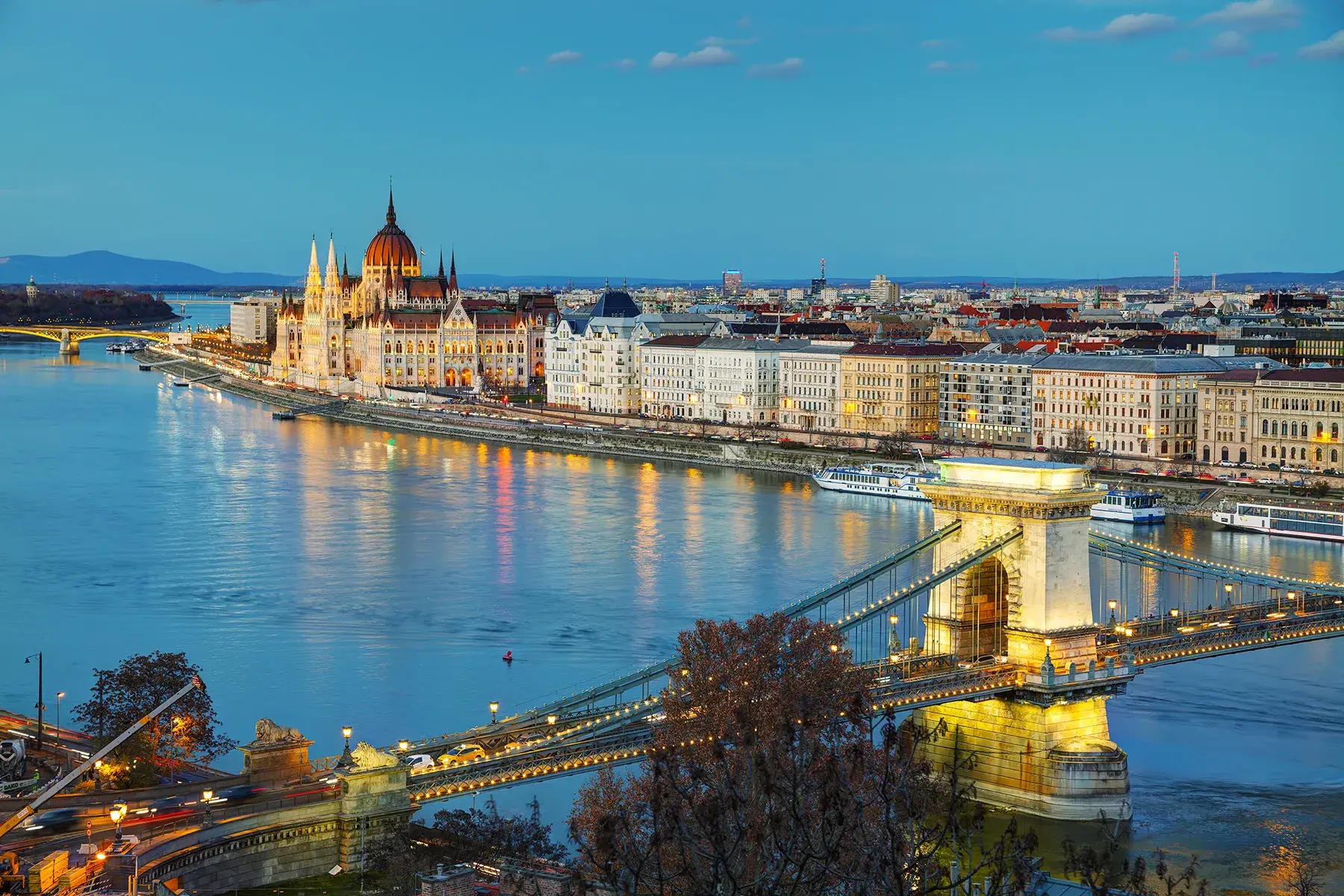
Other tours you may be interested in
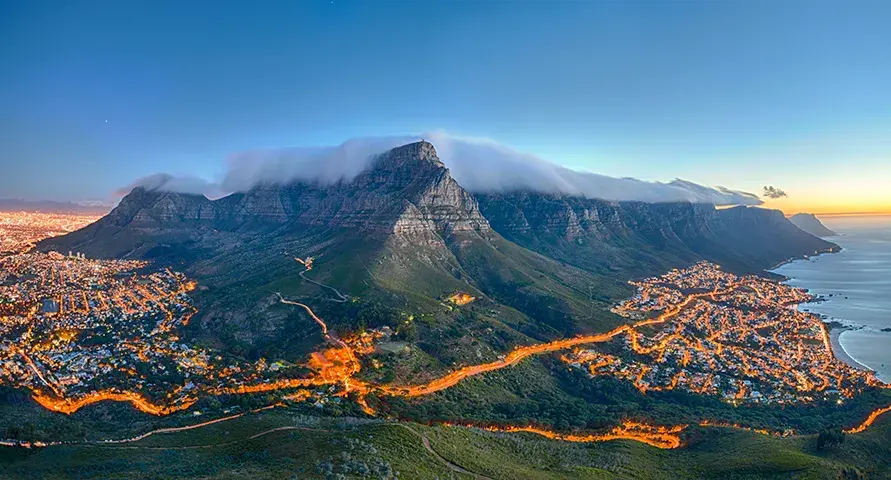
South Africa Spotlight

Icelandic Revelation
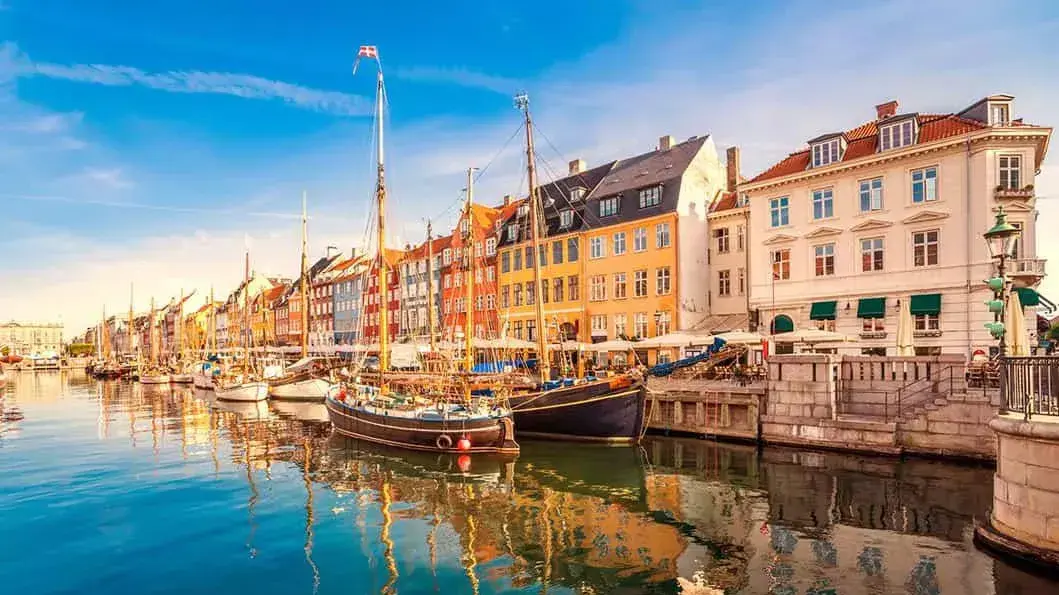
North Sea Escapade
Tour highlights.
- Unpack once and cruise for 14 nights aboard the exclusively chartered, first-class MS Amadeus Nova .
- Visit five countries during this program.
- AHI Connects: Local immersion.
- AHI Sustainability Promise: We strive to make a positive, purposeful impact in the communities we visit.
- Complimentary travel mementos.
- 14 breakfasts, 13 lunches and 14 dinners.
- Welcome and Farewell Receptions and Dinners to mingle with fellow travelers.
- Tea or coffee with all meals, plus wine, beer or soft drinks with lunch and dinner.
- Enrichment by expert speakers enhances your insight into the region.
- Engaging excursions showcase the local culture, heritage and history.
- Personalize Your Journey | PYJ: A choice of excursions in selected locales.
- Free time to pursue your individual interests.
- Tipping of guides and drivers.
- A personal VOX headset to hear your English-speaking guide clearly.
*Prices are per person, based on double occupancy. Dates, itineraries, and prices are subject to change.
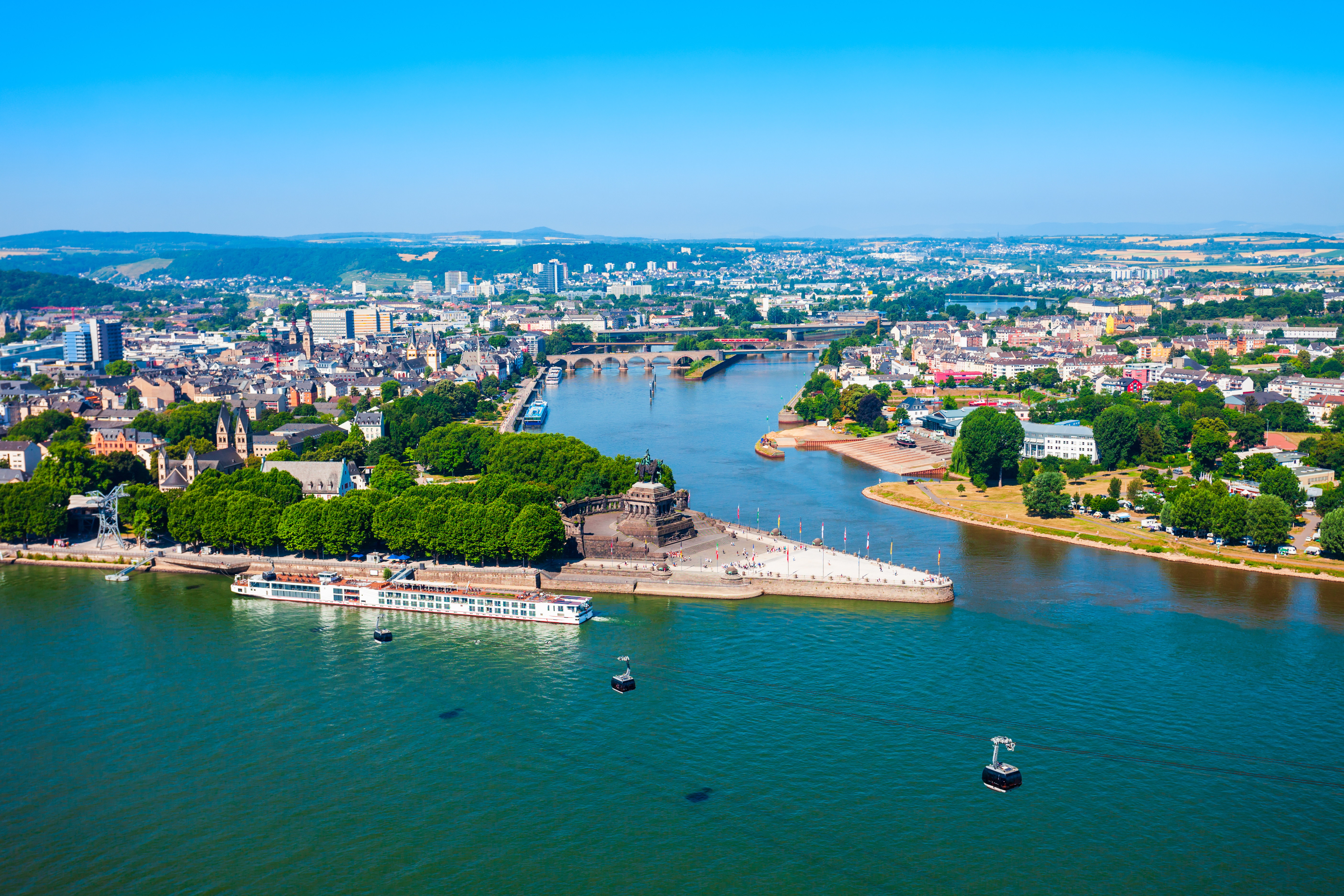
Day 1 – Depart for Budapest, Hungary
Day 2 – Budapest, Hungary
Day 3 – Budapest
Day 4 – Bratislava, Slovakia
Day 5 – Vienna, Austria
Day 6 – Dürnstein | Melk
Day 7 – Passau, Germany
Day 8 – Regensburg
Day 9 – Nuremberg
Day 10 – Bamberg
Day 11 – Würzburg
Day 12 – Miltenberg
Day 13 – Koblenz
Day 14 – Cologne
Day 15 – Koblenz
Day 16 – Depart for gateway city
Preferred Travel Insurance
USI Travel Insurance Services is the preferred provider of travel insurance for The Ohio State University. We highly recommend that you review this information and consider insurance to protect yourself and your investment. USI is a comprehensive plan that offers three options, allowing you to select the coverage that best suits your needs. You can find additional details, request a quote and purchase a plan online at https://my.travelinsure.com/ohiostate/ or by calling 1-800-937-1387 .
Cancellations
All cancellations must be submitted in writing to AHI Travel.
- Cancellation received up to 121 days prior to trip departure will incur a $300 per person administrative fee.
- Cancellation received 120 to 91 days prior to departure will result in forfeiture of 25% of the entire cost of the trip per person.
- Cancellation received 90-61 days prior to departure will result in forfeiture of 50% of the entire cost of the trip per person.
- Cancellation received 60-31 days prior to departure will result in forfeiture of 75% of the entire cost of the trip per person.
- Cancellation received 30 days prior to departure to the time of departure (or no show) will result in 100% forfeiture of the entire cost of the trip
TRIP CANCELLATION INSURANCE IS AVAILABLE AND RECOMMENDED. AN APPLICATION WILL BE SENT AFTER YOU RESERVE. If a tour is canceled by AHI Travel before the date of departure for reasons other than Force Majeure and the cancellation is not caused by your fault or negligence, you will have the choice of accepting one of these options from AHI Travel: i) transfer to another date of the same tour, if available; ii) book another tour of equal or greater value, if available (you will be responsible for paying any difference in price); or iii) book another tour of lesser value, if available (with a refund payable to you for the difference in price); or iv) receive a full refund for the land-only portion of the applicable tour CANCELLATION GRACE PERIOD -Reservations made prior to 120 days before a tour´s scheduled departure date may be canceled within 7 days following the reservation date for a full refund. Reservations made within 120 days prior to a tour´s scheduled departure will not qualify for the grace period. CANCELLATION OF TRIP OPTIONS -Purchases of optional excursions, pre- and/or post-tour extensions, additional hotel nights, private transfers or other trip options become fully non-refundable 44 days prior to departure. Air transportation purchases are subject only to penalties assessed by the airlines.

IMAGES
VIDEO
COMMENTS
1.1.10 Puszta and Kecskemét. 1.1.11 Debrecen. 1.2 Day trips from Budapest to other countries. 1.2.1 Vienna. 1.2.2 Bratislava. 1.2.3 Transylvania. 1.2.4 Zagreb. 2 The best day trips from Budapest by train. 3 Share this guide to Budapest day trips!
1. Delve into Hungarian history over a glass of wine in Eger. Travel time: 1½ hours. Northeast of Budapest, Eger Castle is legendary as the bastion that held out against the Turkish invasion, but the relics of the town's eventual Ottoman conquest, including a 40m-high (131ft) minaret and Turkish baths, still pepper Eger's baroque streets. Apart from the legacy of the siege, Eger is known ...
Holly Johnson December 1, 2023. Ranking of the top 19 things to do in Budapest. Travelers favorites include #1 Fisherman's Bastion (Halászbástya), #2 Danube River and more.
The road from Budapest crosses a twin-arched, 18th-century bridge that spans the Gombás River, and is worth a visit for its fine statues. Other landmarks easily explored on foot are the 1745 Piarist Church of St. Anna, with its narrow towers and pointed spires, and the Baroque triple-naved Franciscan church, built using stone from the medieval ...
Relaxing by day, romantic after dark when the bridges light up like pearl necklaces, the Danube plays to your inner Strauss, whether you're enjoying an hour-long sightseeing tour or indulging in ...
11. Varhegy. 10,679. Points of Interest & Landmarks. Lovingly restored after being reduced to rubble during World War II, this picturesque area is located in the heart of medieval Budapest, which is characterized by cobblestone streets, narrow alleys and lovely squares surrounded by baroque and classical buildings.
Here are some of Budapest's best activities. 1. Visit Budapest's neo-Gothic Parliament building. Budapest's neo-Gothic Parliament building dominates the curve of the Danube and is a true postcard superstar. It houses the Holy Crown (used to crown the country's monarchs since the 12th century), as well as other royal jewels.
Explore Budapest holidays and discover the best time and places to visit. Budapest's best sights and local secrets from travel experts you can trust. Experience Budapest - Lonely Planet | Hungary, Europe
Lets explore the best things to do in Budapest: 1. Parliament Building. Source: V_E / shutterstock. Hungarian Parliament Building. The Hungarian Parliament Building, which was designed and built in the Gothic Revival style, is one of the largest buildings in Hungary, and is home to hundreds of parliamentary offices.
Gellért Hill Cave Church. Facade of the Cave Church with lens flares located inside Gellert Hill in Budapest, Hungary. 📍 Google Maps | Hours: 9:30 am to 7:30 pm (closed Sundays) | Guided audio tour 1,000 HUF. Located immediately opposite the Gellert thermal baths is a pretty unique church … built inside a cave!
1014 Budapest, +36 20 439 7325, mng.hu. Open Tuesday-Sunday 10am-6pm. Admission is 4,800 HUF and there is an additional charge for taking pictures. Audio guides are available for 1,200 HUF. See the Hospital in the Rock. This museum is underneath Castle Hill and just a five-minute walk from the castle.
Explore Budapest's most famous ruin bars by night. Grab a drink at Szimpla, the first ruin bar of the city, and head over to nearby Instant-Fogas. Visit a thermal bath. Boasting more thermal baths than any other capital city , Budapest has rightfully earned its title as the City of Spas. There are more than 80 geothermal springs and ...
Castle Hill lighting up the Danube. Budapest is the capital of Hungary. The country is bordered by Slovakia, Austria, Slovenia, Croatia, Serbia, Romania, and Ukraine. Budapest is well connected by train to many other European cities. Budapest to Vienna is only 2 1/2 hours on the high-speed train.
2023. 9. Hungarian State Opera House (Magyar Allami Operahaz) 7,803. Operas. This magnificent new-Renaissance style structure, completed in 1884 and modeled after the Vienna Opera House, is home to both the State Opera and the State Ballet.
11. Margaret Island. The 2.75-kilometre-long Margaret Island stretches from Margaret Bridge in the south to Árpád Bridge in the north. Apart from the local bus, most of the island is traffic ...
In Budapest, public transport consists of metro, trams, buses, and suburban rail. Because of their coverage, you're most likely to use the city's metro and tram services. All the different forms of transport share the same ticketing system, with a single ticket costing HUF 350, roughly $1.10.
Key events: Budapest Pálinka and Sausage Festival, CAFe Budapest, Design Week, Art Market Budapest, Mini Festival of Contemporary Music, October 23 national holiday. November is a quiet time to visit. November begins with All Saints Day on November 1, a public holiday when Hungarians visit the graves of loved ones to leave candles and flowers.
Day 3: Downtown Budapest, City Park, More Thermal Baths, and Wine Tasting. This is going to be an intense day! Starting with a visit to St. Stephen's Basilica, moving on along Andrássy Avenue with a stop at the House of Terror, then reaching City Park where you will visit the most famous thermal baths in Budapest.
Other highlights include Gellért Hill Cave, walking trails, and the Liberty Monument. A visit to the Dohány Street Synagogue is also highly recommended. Once you've covered most of the best places to visit in Budapest, take day trips to exciting nearby destinations like Esztergom, Szentendre, and Lake Balaton.
To appreciate the beauty and history of Fisherman's Bastion, consider booking a tour online. 14. Vajdahunyad Castle. Built in 1896 as part of the Millennium Exhibition to commemorate 1,000 years since the Hungarian conquest of the Carpathian Basin, Vajdahunyad Castle sits majestically within Budapest City Park.
Vienna to Budapest: A 5-Day Cultural Odyssey. Begin your 5-day cultural odyssey in the heart of Europe, exploring the grandeur of Vienna and Budapest. Day 1 immerses you in Vienna's royal history with a 3-hour visit to the magnificent Schönbrunn Palace, followed by an hour admiring the masterpieces at the Kunsthistorisches Museum. Conclude ...
14. Don't clink your beer glasses with Hungarians. Hungarians don't say "cheers" with beers - or at least they haven't for the past 150 years. When Habsburgs Austria defeated Hungary in the 1848 revolution, Austrians in Vienna celebrated the defeat by toasting and clinking beer steins.
Centuries of heritage unfold in Vienna, Bratislava and Budapest, cities steeped in the legacies of great empires. Behold Amsterdam's lovely canals, idyllic landscapes, fairy-tale villages and the beautiful Middle Rhine and Wachau valleys. ... This unforgettable cruise features dedicated Travel Directors, engaging lectures and all meals ...
A video greeting recorded by the now-former Fox News host appears to have been leaked; it features Carlson joking he will visit Budapest if he is ever "fired" from Fox and has the time. The ...